
Sustainability Success
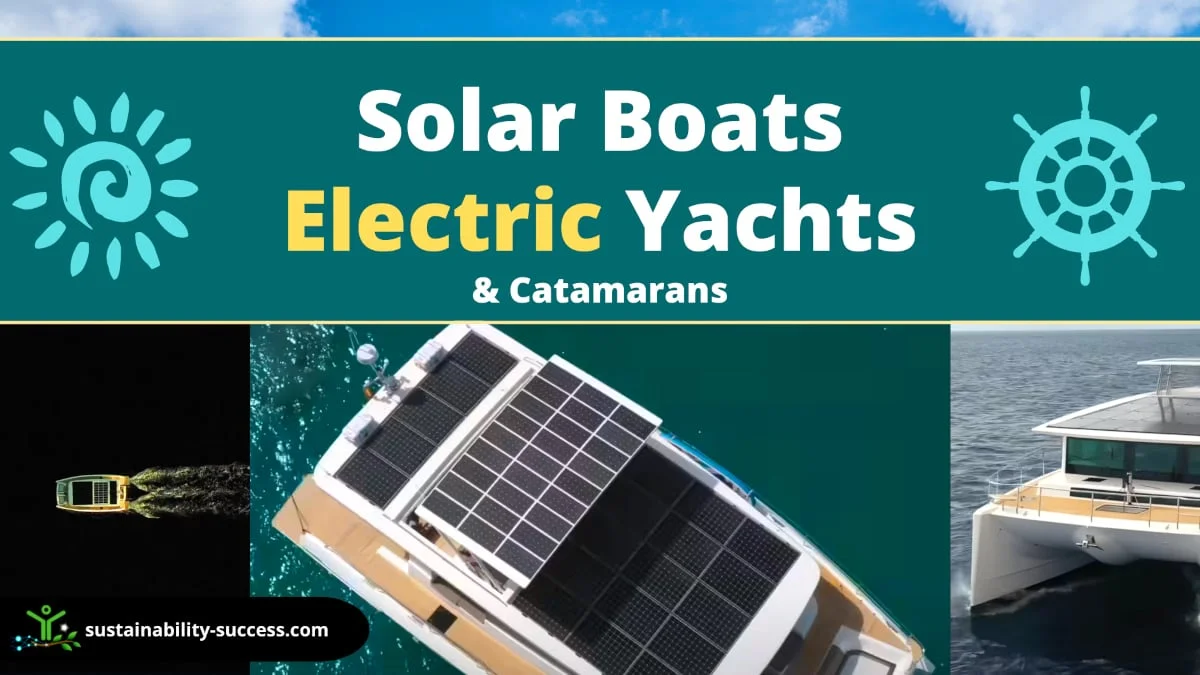

10 SOLAR Boats 2023 & 2024 | Electric Yachts & Catamarans
With more steps being taken towards sustainable development, new, eco-friendly solar boats have been introduced in the world of green travel: solar electric catamarans.
Solar boats are electric yachts that can go for long distances without needing to stop for fuel and without emissions. Those solar catamarans are interesting eco-friendly alternatives to the classic power boat or sailing yacht for cruising. However, there are also a few disadvantages that you should know about before purchasing one!
Table Of Contents
10 Solar boats, electric yachts & catamarans
Here are the best solar boats that will delight you with a top-notch sustainable yachting experience based on your requirements:
Sunreef Yachts – Eco 80 Sail Catamaran
- Silent Yachts – Silent 80 3-Deck
HH Catamarans – HH44
Silent yachts – silent 60, sunreef 43m eco (140 ft).
- Silent 120 Explorer
- 100 Sunreef Power Eco
Azura Marine – Aquanima 40
Soel yachts – soel senses 48, serenity yachts – serenity 64 (hybrid).
Here’s a quick summary of the features of the best solar catamarans for green yachting in 2023-2024:
If you are an advocate of sustainable yachting or sustainable tourism and are looking to buy an eco-friendly boat that doesn’t rely on fossil fuels , then you would do well to consider getting a solar catamaran. In this article, I will go through the pros and cons of 10 of the best solar yachts and superyachts that you can buy in 2023 and 2024!
It is also important to note that while there are solar panels for sailboats that you can fit on older models, those new boats have been specifically designed to maximize the use of renewable energy.
Most Luxurious + Most innovative solar system
The Eco 80 Sail Catamaran is one of the electric solar boats provided by Sunreef Yachts.
It features a unique “solar skin” that covers all composite structures on the boat, including hull sides, boom, mast, bimini, and superstructure. This green tech makes it possible to place solar panels where it wouldn’t normally be possible (like the hull and any other smaller but useful surface) and provide enough solar energy from every angle.
The boat is 80-feet long (24.38 meters) and includes electric motors that push it smoothly over the water without causing any vibrations or noise.
Besides being solar powered boat, the Eco 80 Sail Catamaran can also be powered by wind and hydropower. It is designed with a sail on its structure, allowing it to tap into wind power and supplement the solar.
The solar powered sailboat generates enough green power not only to propel the boat and keep it moving but also to charge the essential electric water appliances and other water-sport toys.
So far, the Sunreef Yachts Eco solar sailboats have earned a good reputation for being eco-friendly and sustainable. Besides, this solar powered catamaran takes its commitment to the environment a notch higher by using recycled materials , natural fibers, and non-toxic paints to create their boats.
It is no wonder that Sunreef Yachts have been winning environmental awards for so many years. This solar sailboat is one of the most remarkable boats you can ever invest in and it clearly shows the latest advancements in technology .
Prices: about $8 million USD
Where to buy : Sunreef Yachts .
- Larger surface covered with solar panels, that are installed also along the hull, and in other unusual areas.
- The batteries are 30% lighter than normal
- Unlimited cruising range.
- It runs silently and does not cause pollution.
- It has also traditional sails, so it can cruise also when it is not sunny without relying on batteries.
- Luxury, superb quality and finishing
- Great helm position.
- The solar catamaran is very costly (going for $8 million USD or more).
- The solar panels installed on the sides of the catamaran may not be appealing to the eye of all people.
Silent Yachts – Silent 80 Tri-Deck Solar Catamaran
Best pure electric
The Silent 80 Tri-Deck Solar yacht is popular for the large amount of space it offers.
This solar catamaran by Silent Yachts features three large decks that can be easily customized to fit the owner’s preferences and needs. The topmost deck can either be open or enclosed.
This solar powered yacht offers 4 to 6 cabins that are customizable, regardless of whether the deck remains open or enclosed. Besides, the top deck provides additional living space and can be used as a luxury master suite that opens onto a private space outdoors.
Where to buy : Silent Yachts .
- Purely electric propulsion that can be helped by the kite sail.
- The finishing, while being of high standards, doesn’t seem to be at the level of other options in its category.
- Quite costly, with prices starting at about $6 million USD.
- If going for a long cruise during cloudy days you may need to run the generator to keep going.
- The kite sail helps to give some propulsion using wind, but it is less effective than traditional sails.
- The absence of a traditional sail may make the boat a bit less stable, compromising a bit of the comfort while cruising.
Best for world cruising
HH Catamarans is a small boutique boat builder designing some of the most impressive solar boats for cruising, with one of their latest creations being the HH44.
The HH44 is a groundbreaking new boat that is designed to be eco-friendly and efficient.
The boat has a large battery bank that can be charged by solar panels, and also has two electric motors that can be used for electric propulsion up to 7 knots for up to 2h.
The HH44 has an innovative propulsion system named Eco-Drive. This is a parallel hybrid system that combines diesel and electric propulsion for long-range motoring and silent electric propulsion.
The boat also has two diesel engines, which can be used for long-range motoring or to generate electricity. The boat is also designed to be safe, with four propulsion devices plus sails and a large solar array.
The HH44 has a number of technical features that make it a groundbreaking eco-friendly design, including:
- 3 types of propulsion: full electric, standard diesel, and sail.
- 4.2 kWh of solar panels: generating power for recharging the lithium battery bank for solar .
- 10 kW electric motors (5kW each): mounted on the back end of each diesel engine for electric propulsion.
- The diesel engines can be used both for propulsion and as electric generators.
- Possibility to use the propellers to recharge the battery while the boat is sailing. Kind of like using hydropower to charge your solar batteries , pretty cool!
The HH44 is also a performance catamaran thanks to its C-shaped §daggerboards. Daggerboards are an essential component of many sailing vessels, providing both vertical lift and increased upwind sailing performance.
This solar powered yacht features up to 4 double cabins and 2 heads . Not bad for this world-cruising vessel!
If instead, you are looking for a larger boat, HH Catamarans also have other models up to 88ft.
This solar catamaran was also the preferred choice of Gone with the Wynns , a popular cruising YouTube channel. Here’s their announcement video:
Where to buy : HH Catamarans .
- A true performance world cruiser.
- Very resilient with 3 different propulsion modes (electric, sail, and conventional engines) and ideal for offshore cruising.
- It can run silently and without causing pollution.
- More affordable than other solar catamarans, starting from $1 mm USD
- Smaller than other options.
- The improved sailing performance requires narrower hulls, which reduces the available space onboard compared to other traditional vessels of similar size
Best mid-range
The Silent 60 is one of the smaller electric boats made by Silent Yachts. It is designed to be handled by at least two people. The users can either choose to include an additional crew or not.
Despite its outward small appearance, Silent 60 is very spacious and can accommodate a good number of people.
Besides, the electric yacht has a beautiful design that adds to its elegant and luxurious feel. It is usually designed with up to 6 cabins , with each cabin offering every basic amenity you need to have a luxurious stay on the yacht. In fact, the electric solar boat is equipped with everything you need to allow you to live on board permanently!

As someone who loves spending time on the water, I was really excited to learn about the Sunreef 43M Eco: a superyacht that is both eco-friendly and luxurious.
I was especially impressed by the solar power system, which is built into the composite structures of the yacht, and the large hydraulic platform which creates a vast walkaround beach club.
The interior of the solar superyacht is just as impressive as the exterior, with a variety of sustainably-sourced materials and fabrics used throughout as well as energy-saving air-conditioning. The Sunreef 43M Eco can welcome up to 12 guests in the most luxurious conditions.
Silent Yachts – Silent 120 Explorer

Here’s another incredible solar super-yacht by Silent Yachts. The Silent 120 Explorer is a truly unique yacht, designed to explore the world in style and comfort.
Powered by solar energy, this solar catamaran is perfect for those who want to enjoy the beauty of the open seas without worrying about the impact on the environment.
With plenty of space for guests and all the amenities you need onboard, the Silent 120 Explorer is the perfect choice for your next adventure. If you’re looking for a yacht that combines luxury and environmental responsibility, the Silent 120 Explorer is a perfect choice.
The company didn’t yet release detailed information, however, this superyacht seems to be even featuring a helipad under the roof’s solar panels!
The Silent 120 Explorer has plenty of room for guests and all the amenities you need onboard. So if you’re ready to embark on your next great adventure, be sure to consider the Silent 120 Explorer, which will likely start being delivered in 2023.
The 100 Sunreef Power Eco
Sunreef recently launched and sold their first 100 Sunreef Power Eco catamaran, a transatlantic luxury craft that takes solar boat design to the next level.
With massive living space, great autonomy, and impressive features like a flybridge that can be transformed into an outdoor cinema, the 100 Sunreef Power Eco is the perfect vessel for cruising in supreme luxury
This catamaran uses the latest innovations in solar power to achieve outstanding energy efficiency, and its ultralight battery bank provides for silent cruising and infinite range.
The fully customizable interior and exterior make this catamaran a truly one-of-a-kind option, and its use of ethically-sourced and eco-responsible materials is sure to please even the most discerning buyer.
If you’re looking for an electric yacht that is both luxurious and eco-friendly, the 100 Sunreef Power Eco is certainly a great option for you if you can afford it!
The most affordable $
The Aquanima 40 catamaran is entirely powered by solar energy. It features creative adaptations and unique innovations that make it eco-friendlier and more economical boat than other solar-powered catamarans. For example, the solar panels installed on the electric catamaran are built in such a way that they can sell any excess solar energy back to shore stations when connected.
The exterior of the Aquanima 40 has an elegant design. Also, the interior is not only aesthetically pleasing, but also very clean and modern.
The boat is designed with 2 single cabins for the crew and 2 double cabins for guests.
Indeed, this solar boat by Azura Marine is one of the most economical and cost-effective options you can go for when buying a solar catamaran.
- Relatively fast.
- Ideal for short vacations.
- The most affordable solar catamaran, starting at about $0.6 million USD.
- Much smaller than other options.
- Not recommended for long cruises.
- Basic looks and layout.
As its name suggests, the Soel Senses 48 is 48 feet long. It has a slender design and is lightweight , making it more economical than most other solar-powered boats.
The boat is designed with two sleeping berths that can accommodate two people each. It also includes a salon that can offer enough sleeping space for four people.
Compared with most other solar yachts, the Soel Senses 48 has a much smaller size. Its size, adding to its sleek and innovative design, give it faster speed than other solar-powered boats.
It incorporates 12 solar panels installed on the roof ; all these panels generate a combined electrical power of up to 2.7 kWh. The electricity generated by the solar panels is then stored in two batteries which can be easily configured to hold a maximum solar power of 142 kWh.
Like other Soel Yachts, the Soel Senses 48 glides smoothly over water without causing any noise, rattles, or generating fumes.
It has average cruising speeds of 10 knots, even reaching top speeds of up to 18 knots. However, the solar catamaran cannot run at its top speed for long periods.
Both the interior and the exterior of the Soel Senses 48 have a sleek and modern design. Every single component of the solar catamaran has been designed carefully to make it as functional and comfortable as possible. Therefore, when you board on this boat, you can expect to experience one of the best sailing experiences of your life.
The Serenity 64 Yacht features a diesel engine. It is a hybrid solar boat, which means that it can run on either solar power or on diesel.
The diesel engine especially comes in handy when the users wish to achieve faster cruising.
The solar catamaran is a very spacious electric boat and provides plenty of living space. It is built with four luxurious cabins, with each cabin having its ensuite bathroom. And even though the Serenity 64 is smaller than the Serenity 74 model also built by Serenity, it still provided an elegant feel and a smooth sailing experience.
Solar Boats Pros and Cons
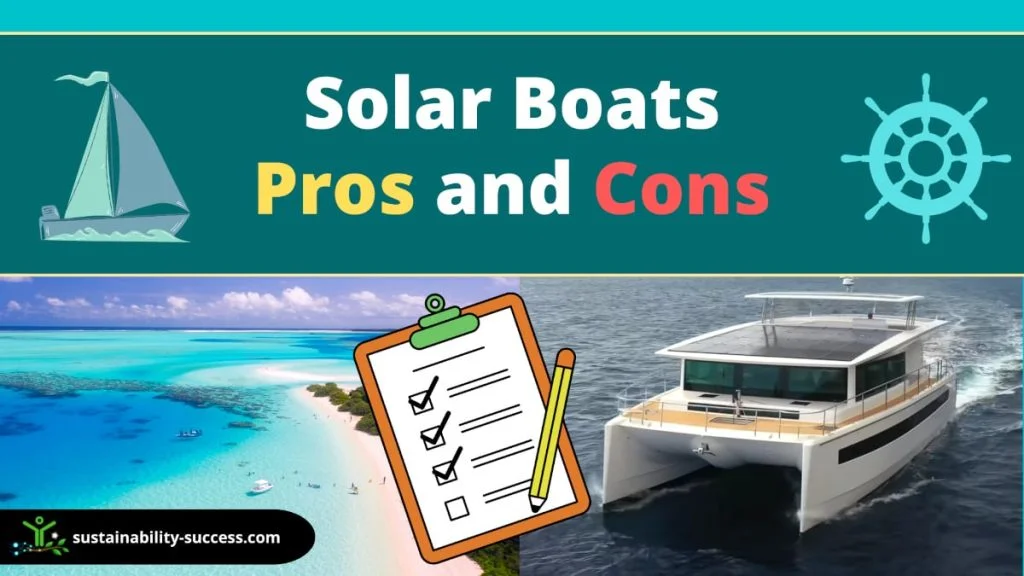
The sun is a powerful and free source of energy, making solar power an attractive option for those looking to power their yacht. Solar panels can be used to generate electricity to run the yacht’s lights, appliances, and even the engine. Solar power can also be used to heat water for showers and laundry. But, what are the pros and cons of solar catamarans?
Here’s a quick summary of the solar yachts’ advantages and disadvantages:
One of the main benefits of solar power is that it is renewable and environmentally friendly. Solar panels have no emissions and do not produce pollution. In principle, they also do not require fuel, making them very cost-effective in the long run. Solar power is also very reliable, as the sun is a constant source of energy.
There are a few disadvantages to solar power. Solar panels can be expensive to install, and while they require less maintenance, this can be quite costly, especially when it will come time to replace the batteries. Solar panels also need to be pointing directly at the sun to be effective, so they may not generate power on cloudy days or at night.
But there’s more, let’s see what some sailing experts are thinking about solar catamarans!
Sailing expert’s solar Boat review
Recently, one of the most popular sailing YouTube channels, Saliling La Vagabonde , published a very honest and interesting review of the solar powered yacht Silent 55. Here’s a summary of their experience:
- 7 Days onboard (6 nights)
- Travelled 145nm with an average speed of 7 knots
- Generator used for about 12h (in total)
- Fuel consumed: 208 liters
Here are some interesting observations they made:
- While cruising it may feel less stable than a standard sailing boat because it doesn’t have a sail to stabilize it when hitting the waves.
- For the Silent 55 it was possible to move at about 3 knots by using only the power generated by the solar panels (without using the batteries) on a sunny day. This means that if you are moving the solar yacht around quite frequently, you will end up using the generator quite a lot to produce the necessary power.
- When the batteries are out of power, the Silent yacht is using a (diesel) generator to supply the necessary power to keep the boat moving and to power the appliances.
- A great luxury yacht with all the comforts and going in the right direction for the future of the sector.
- Overall, the Silent Yacht is a great eco-friendly alternative to a power boat , while if you are thinking about cruising around the world, you would be probably better off going for a standard sailboat (or for some of the hybrid alternatives mentioned in this article, like the HH44).
Why are solar yachts all catamarans?
Solar yachts are all catamarans for 2 main reasons:
- Catamarans have a larger surface, which allows for placing more solar panels and also offers more room for the batteries onboard.
- Catamarans have efficient hulls for their size. This reduces their power consumption while moving.
This makes catamarans the ideal platform to build a solar-powered boat.
Modern solar electric boats are undoubtedly an eco-friendly choice in sea travel and a form of green tourism . Not only do these electric boats provide a smooth sailing experience, but they also reduce the release of emissions into the atmosphere, reducing the environmental impact and enhancing sustainability .
Luckily, given their size, solar catamarans can charge themselves (unlike electric cars ), so they can sail indefinitely without the need to stop for refueling.
If you are environmentally conscious and looking to get a boat that is more viable, desirable, and eco-friendly, you may consider investing in one of the solar yachts discussed in this article!
Suggested Articles
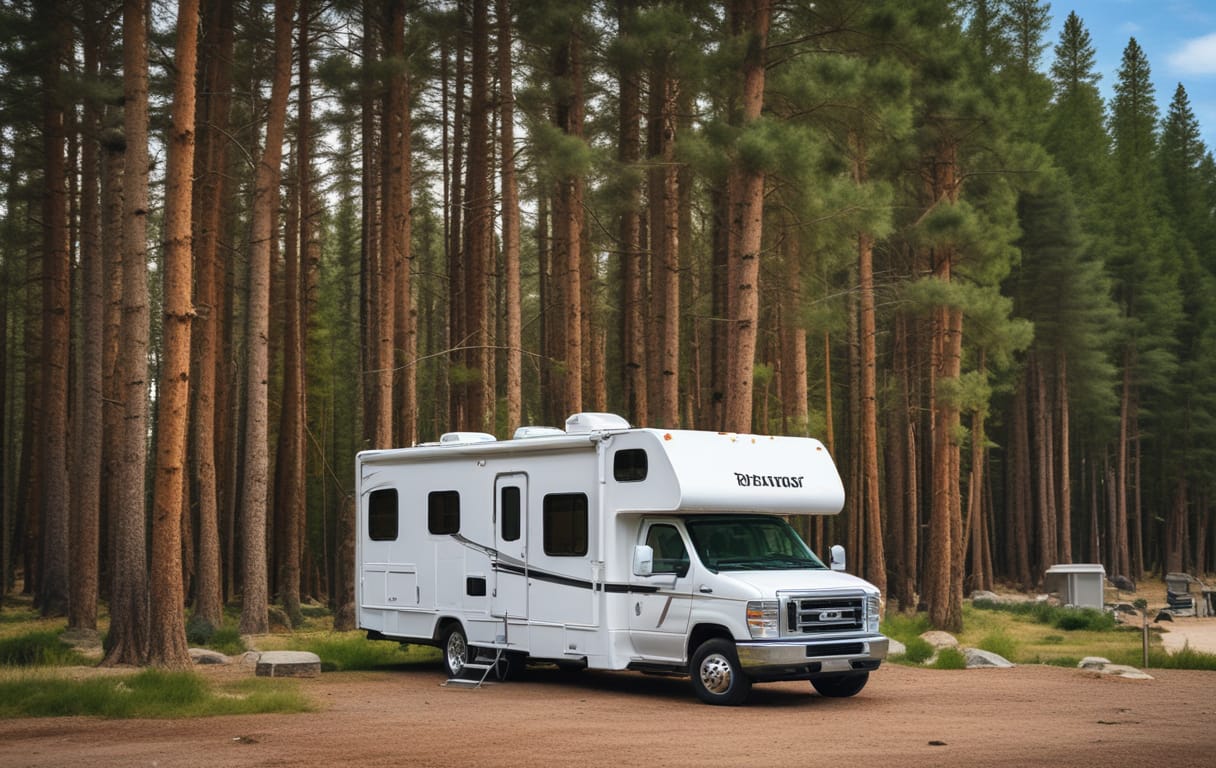

The Best Solar Powered Catamarans (2023 UPDATE)
As an Amazon Associate, we earn from qualifying purchases. We may also earn commissions if you purchase products from other retailers after clicking on a link from our site.
Catamarans are incredible boats, and making one solar-powered really makes my little engineering brain go wild. In this article, I discuss some of the coolest solar-powered catamarans out there!
Here are three of the best solar-powered catamarans:
- Sunreef’s 80 Sunreef Power Eco Yacht
- Silent Yachts’ Silent 80
- Soel’s Senses 48
There are soo many variables that it’s tough to say one is better than the others. No matter which you board, you’re going to have a luxury experience. The benefit of these solar cats is that the experience can be had while maintaining a sustainable lifestyle and contributing to the betterment of the environment.
The diesel engine is dead, Long live electric power. Sort of…
Table of Contents
Solar Catamarans: Luxury Yachts
Before we look at each of these, let’s take a few paragraphs to talk about catamarans in general. First of all, when many people think of cats, they think of a relatively small craft barrelling across the water, one of its hulls in the air with a swashbuckling daredevil hanging off the side of it high above the water.
That’s not the kind of catamaran we’re talking about here. We are, instead, looking at yachts or cruising catamarans. These share one commonality with the other type of cat, and that’s the twin hulls. But that’s it. Cruising cats are slower, more stately boats. Also, on one of those little, quick ones, there’s not room for much of anything, and you won’t likely be doing any cooking or sleeping on it.
We’re also looking solely at solar-powered catamarans here, and although they have much in common with their diesel-drinking brethren, there are some key differences, which we’ll also address.
Perhaps the main difference (and one of the most significant selling points for a solar-powered catamaran) is the noise level. Gabo
Anyone who’s been on any boat with a combustion engine (diesel or petrol) on board has had to deal with the noise and smell.
But the drone (or roar, depending on the engine’s size and location) can be far from relaxing, which is one of the main reasons to get on a boat, off the mainland, and out to sea. Even if you’re marlin fishing—not the most peaceful undertaking man has ever attempted—you’re still out on the water and hope for some peace and quiet.
Eliminating that engine noise is a pretty big deal.
How Solar Catamarans Work
The biggest key to the success of the solar-powered yacht is not the solar panels – although those are great, as they look terrific and are well integrated into the ships. But the unsung hero here is the battery system.
Solar energy companies continue to perfect their industry. By making their solar batteries denser and denser, they create batteries that can store more solar power for more extended periods in smaller spaces.
And that brings us to an aspect you probably haven’t thought of:
Solar-powered yachts have more interior room because the battery system takes up less space than a conventional engine would.
Space customarily used by an engine room gets freed up for other uses.
Since most solar catamarans are nearly infinitely customizable, it’s hard to say what you might use that extra space for, but it’s available because of the solar power system.
The yachts have solar cells in all sorts of places, most notably on the roofs of the boats, but some companies build them in over large swaths of the hull, so they look as much like a design choice as a power source.
3 Best Solar-Powered Catamarans
Let’s be honest—if you’re dropping more than a couple of million dollars on a boat, two things are likely true: you have a lot of money, and you like nice things. All of the yachts listed here are lovely things, so it’s going to be hard to go wrong.
As a result (and since these aren’t exactly accessible for test drives), it’s difficult to say which one of these is actually the best ; ergo, this list is in no particular order. They’re all glorious specimens.
Incidentally, where the price is listed, that number is an extremely general estimate. As these vessels are all entirely customizable and each choice below is available in different lengths and configurations, the cost can vary wildly.
To better understand what is a good price of a solar-powered cat, they should be compared to performance cruising catamarans or larger catamarans for families .
80 Sunreef Power Eco Yacht
This may be the most remarkable boat you’ll see for a long time. Sunreef has been in the yacht-building business since the turn of the millennium, winning awards along the way, and in the last few years, the company began work on its Eco line.
While there are shorter (and one longer) versions of this ship, the 80-footer (24.38 m) is pretty iconic. It offers electric motors to push it over the water and to do so with little noise, vibrations, and zero smell of fuel or exhaust.
As mentioned earlier, this is the yacht with solar cells pretty much all over it. They dot the sides of the hull and add to the overall look of the ship. With these cells and the panels on the roof, this yacht carries 200 square meters (2152 sq ft) of solar cells generating up to 40kWp (that’s 40 kilowatts peak, meaning under the best conditions, like on a bright, sunny day). Sunreef makes cats that run under sail, as well.
- Unlimited cruising
- No emissions
- Silent running
- Solar panels on the sides of the boat may not appeal to everyone
- Price: $8 million USD and up (new)
Silent Yachts has several versions of each of its catamarans. This eighty-footer (24m) is available in a loft or a classic version, but you get large spaces and incredible luxury no matter what you choose. The bathrooms alone on these things are pretty enough to live in.
Like Sunreef, Silent Yachts offers various lengths of these yachts, but they refer to the 80 as their flagship, and with good reason. Also with good reason, this yacht has been called “the Tesla of the seas.”
Three power options exist, each allowing higher maximum speeds for longer periods on the water than the last, but all three offer cruising speeds of up to 8 knots.
Its rooftop solar panels generate 26kWp of power . While that’s a significant step down from the comparable Sunreef vessel, the company claims unlimited range. Theoretically, it makes sense—solar power is even easier to come by on the open sea than on land, and with an endless supply, you ought to be able to cruise forever (as long as the sun shines).
All that power gets stored in batteries, and when it’s time to use it, the boat does so silently through its electric motors, on which Silent Yachts gives a lifetime warranty. While that warranty wouldn’t give you much peace of mind if you were on the float hoping for rescue, once you got it back home, whatever the problem was would get fixed, and you’d be ready to go out again.
Like any electric motor propulsion system, the Silent 80’s requires almost zero maintenance. Compare that to the ongoing work you do on your big, loud, smelly diesel engine. Not having to change the oil alone seems worth the investment.
- Recommended maintenance schedule happens after the end of most yachts’ lifespans, meaning you may not ever have to do any maintenance at all on this one.
- Kite available for additional propulsion (up to ten times more efficient than a sail)
- Its five-and-a-half-foot draft is pretty deep.
- Smaller kWp capacity than comparable makes.
- Price: $4.6 million and up (new).
Soel Senses 48
This is a smaller yacht (a little more than half the size) than the first two. However, Soel has built a beautiful boat that is entirely sustainably powered. The 12 solar panels on the roof generate 2.7 kWp of electricity stored in two batteries that can be configured to hold up to 142 kWh of stored solar power.
This, like the others, makes for a boat that glides over the water without rattles, without fumes, without noise. Unlike the others, its cruising speed tops out at 10 knots —faster due to its smaller size. Its top speed runs at 18 knots, but with significantly less kWp on board, the ship won’t run at that top speed for extended periods.
The company lists the ship’s range at between 30 and 56 nautical miles (55 – 103 km) , and the fluctuation will come from various options and choices available in operational modes.
- The boat’s 2.3-foot (70.10 cm) draft is shallower than the larger boats here.
- Orders of magnitude more affordable.
- This is a smaller boat and won’t comfortably sleep much more than 10.
- Limited range means this is a weekend cruiser, not a circumnavigator.
- Price: $600,000 and up (new).
Other Choices
These next couple of catamarans are newer and smaller, but they bear mentioning for various reasons, which we’ll be sure to point out with each one. Again, at a certain point, a yacht is a yacht, and if you can fit your friends and family on it for a fun trip, everything else is just gravy.
Smaller than Silent Yacht’s Silent 80, this one is a product not only of Silent Yacht but one made in conjunction with Volkwagen and Cupra, a Spanish car company.
Volkswagen has become a significant player in the electric motor game, so the company brings its Modular Electric Drive (MED) to this vessel, allowing for an even more efficient electric propulsion system than the one on the Silent 80.
Cupra’s presence in the project seems to be solely on the design side of things. The Silent 50 is a vessel built with an eye toward a world in which water travel creates zero greenhouse gas emissions.
Aquanima 40
Azura Marine , based in Singapore, recently announced a solar-powered yacht whose biggest feature may have been its six-figure cost. According to Azura Marine, the ship can cruise indefinitely with a 10 kW solar power system and a 60 kWh battery pack. That is a smaller battery pack than the others, but it’s also a smaller craft.
This cat is a terrific combination of price and features.
Choosing the Best Solar Catamaran for You
This will be a personal choice and one you’ll want to do a lot of research on (which is presumably why you landed on this page in the first place). Since solar-powered catamarans sell for sums of money with at least seven digits in them, this will not be an impulse purchase for very many people.
Any of the choices listed here will be well-built, beautiful, luxurious places to lay your head or sip your mimosas while you’re on the water. It may come down to aesthetics, range, or speed, but all of these models offer incredible specimens that everyone—landlubber or old salt—will treasure.
The luxury yacht world is an exclusive one, but it doesn’t have to be wasteful or ecologically irresponsible. The yachts listed here are some of the best in the world in terms of combining luxury with solar power and providing emissions-free yachting that’s quiet and relaxing.
New yachts can be purchased from the manufacturers, allowing for customization, and various online yacht brokers are willing to help you find a pre-owned craft that’s right for you.
Finding the right yacht for you will depend on your wants and needs, but we can all agree that environmentally sound, sustainable power on these vessels is valuable.
- Electrek: This $500,000 electric yacht can cross oceans on just battery and solar power
- Forbes: Volkswagen Unveils 50-Foot Solar-Powered Catamaran In Partnership With Silent-Yachts
- Kite Boat Systems: Kite controller for sailing boats
- Plugboats: New 48′ solar electric catamaran from Soel Yachts
- Robb Report: Solar-Powered Yachts Are Taking Over. Here’s Why That’s a Good Thing.
- Silent Yachts: Silent 80
- Soel: Soel Senses 48
- Sunreef: 80 Sunreef Power Eco
Owner of CatamaranFreedom.com. A minimalist that has lived in a caravan in Sweden, 35ft Monohull in the Bahamas, and right now in his self-built Van. He just started the next adventure, to circumnavigate the world on a Catamaran!
Leave a Reply Cancel reply
Your email address will not be published. Required fields are marked *
Save my name and email in this browser for the next time I comment.
Recent Posts
Must-Have Boat Gear for Catamaran Sailors!
Sailing is probably the most gear-intensive activity I've ever done; there are so many decisions to be made about what gear to buy now, for tomorrow, and what to definitely never buy. The gear on...
6 Best Trailerable Trimarans For Bluewater and Coastal Sailing
Having a boat costs a lot of money, even when you are not using it, marina fees, etc. And once it is in the water most sailors never go very far from their "home marina" and sailing will be somewhat...

6 Awesome Solar Boats for Eco Sailing in 2024 (Guide)
Liza pivoted from environmental consulting and doing impact assessments to writing about her two most counter-intuitive but passionate interests: sustainability and the importance of living an eco-conscious life; and marketing, martech, and AI. When she’s not writing, you can find her living a zero-waste-adjacent life in South Africa, falling down research rabbit holes on the internet, or out hiking with her dogs.
Introduction
Liza Shuttleworth pivoted from a career in environmental impact assessment and consulting to becoming a full-time writer, focusing on her most passionate (and diverse) interests: ecological conservation, sustainability, waste management and marketing, mar-tech, and AI.
Her professional portfolio reflects a diverse array of writing and consultancy roles spanning environmental science, marketing, and technology.
She has written for prestigious online and print publications on topics that include sustainability, climate change advocacy, waste management, and marine conservation, as well as marketing strategy, mar-tech, and the proliferation of AI tools for marketing.
Liza has an extensive professional background, having held management and consultancy positions within the environmental science, waste management, technology, and marketing sectors.
Her writing and editorial positions for both print and online publications have shaped content in ways that educate and inspire readers about sustainable living, climate change, and the power of innovative technology to overcome challenges in any setting.
Liza's academic background is rooted in a Bachelor of Social Science, focusing on Media and English. Beyond this, she has pursued tertiary qualifications in geography, psychology, and marketing, further enriching her knowledge base and contributing to her multi-faceted approach to writing and advocacy.
Solar boats are becoming a hugely popular choice for eco-friendly sailing. They’re quiet, can sail great distances without needing to stop for fuel, produce no carbon emissions, and do not rely on fossil fuels.
The popularity of solar-powered boats represents an evolution in marine transportation in favor of renewable energy and sustainability. Solar-powered boats provide a window into a future where clean, emission-free transport is not only possible but also preferred, due to developments in solar technology and design.
Solar boats are the ultimate of innovation and environmental responsibility, whether they are being used for peaceful journeys along beautiful canals or for bold ocean expeditions.
We reduce our dependency on scarce fossil fuels and lessen the ecological effect of traditional boating techniques by using the sun’s power to move us over the sea. Solar boats have the potential to completely transform the maritime sector and open the door to a more environmentally conscious and sustainable future for all, especially as the demand for eco-friendly alternatives keeps rising.
So, how do solar boats work? What are the benefits? And what are the best solar boats on the market?
In this guide, we explain how solar boats function, the advantages of using them, and six impressive solar boats you can purchase in 2024.
Let’s dive right in!
Table of Contents
How Do Solar Boats Work?
In recent years, solar panel and rechargeable battery technology have improved dramatically. Panels are lighter, stronger, and more efficient.
Batteries are more compact, more efficient, and weigh considerably less than they did in the past. Both batteries and panels now last longer and cost less than they used to.
These advances in technology and a growing interest in eco-friendly sailing have shifted the development of solar yachts from idealists’ dreams to the mainstream.
So, how exactly do solar boats work?
Solar boats use solar energy to power their motors, navigation systems, and onboard electronics, and appliances.
The solar system works much the same as a solar system on a house or RV , with some structural differences to meet the unique demands and challenges of a marine environment.
Solar panels mounted on the boat harvest solar power from the sun and send it to a charge controller , which controls the flow of electricity to a bank of rechargeable (usually lithium-ion) batteries.
From the batteries, power is sent to the electric motors, navigation systems and appliances via an inverter, which converts direct current (DC) to alternating current (AC). Most appliances like kettles, microwaves, and hair dryers use AC.

A solar system can be added to any boat, making it a hybrid or even just to supplement a little power using a renewable resource.
S olar is a great way to reduce your carbon emissions, reduce your fuel costs and increase the distance you can sail without stopping to refuel .
However, if you’re looking to buy a solar boat that is designed and built specifically for solar sailing, there are some really great options to consider.
What are the Benefits of Using a Solar Powered Boat?
When it comes to solar boats, there are some great benefits and they’re not limited to renewable energy and fewer carbon emissions:
- No reliance on fuel – diesel generators can be used as an emergency back up but they’re not needed for everyday sailing or electricity generation.
- Unlimited range: when batteries are constantly recharged by the sun, there is no need to stop to refuel and you can keep going indefinitely.
- No noise and no fumes: as there is no engine, there is no noise and no diesel fumes. This makes the experience of sailing a solar boat much more peaceful.
- No pollution: on a solar boat, there is no engine producing noise pollution, no carbon or greenhouse gas emissions , and no risk of fuel or oil spills.
- More space: the absence of engines frees up a lot of space. Electric motors and batteries can be housed anywhere on the boat and do not take up as much space as engines and machinery, which means room for more storage compartments to keep your gear or equipment.
- Lower running costs: beyond the initial investment and occasional maintenance, solar is completely free. This cuts out fuel costs and ongoing engine maintenance costs.
- Less maintenance: solar panels need to be cleaned regularly to be most effective but that is the only ongoing maintenance needed. Once a good solar system is installed, it generally needs very little maintenance.
- No limitations on electrical use: with solar, the supply is free and if you’re not pushing the motors to travel at speed you will often have more electricity than you need. This means you don’t need to watch your power consumption and you can run your air conditioning as much as you want!
- Options to sell power back to shore stations: if you regularly generate more power than you need from your solar, you can share it with others or sell it back to the grid at some shore stations.
The benefits you will enjoy from a solar boat vary, depending on your location and the specifications of the boat you choose. There are also some downsides, for example, solar boats are generally slower and the initial investment is quite high.
That said, solar boats are well worth the investment!
So, let’s look at some of the awesome solar boats available on the market in 2024:
6 Awesome Solar Boats
There are many great solar-powered boats to choose from and we have selected six of the best to feature here. We have chosen a range of sizes, styles, and price points so there should be something for everyone on this list!
1. Silent Yachts – Silent 55
The Silent 55 by Silent Yachts is one of their smaller solar yachts and can be handled by two people, with or without any additional crew.
It is spacious, and beautifully designed to be as economical as possible without losing any of the luxuries of their larger boats. With three to six cabins and all the amenities you can imagine, it offers everything you need to live on board permanently.
Check out this video by Kara and Nate to see their experience of the Silent 55 and meet the couple behind the iconic Silent Yachts company:
[embedyt] https://www.youtube.com/watch?v=iIte4FNI0U0[/embedyt]
Where to Buy: Silent Yachts
Price: From €1.97 Mio.
2. Serenity Yachts – Serenity 64
The Serenity 64 is a solar-powered hybrid yacht with a diesel engine. It can run on either, giving it a combination of unlimited range using solar or faster cruising using diesel.
It is a spacious and luxurious yacht, with plenty of living space and four cabins with en suite bathrooms. The Serenity is the smaller of the two solar-powered boats offered by Serenity. The Serenity 74 is bigger and more luxurious, with an interior designed by Neiman Marcus Fashion Director Ken Downing.
Take a look at this video by Serenity Yachts to see more of the Serenity 64:
[embedyt] https://www.youtube.com/watch?v=ltyu-KPesg0[/embedyt]
Where to Buy: Serenity Yachts
Price: From $3.3 million
3. Sunreef Yachts – Eco 80 Sail Catamaran
Sunreef Yachts Eco sail catamarans take eco-friendly sailing to new heights. Their luxury solar yachts use a special ‘solar skin’ that covers any composite structure on the yacht to provide solar power from every angle.
They also use hydro and wind power to supplement the solar and have a sail. The green power generated on their innovative solar boats is enough to propel the boat, run all the onboard appliances and charge the electric water toys.
Taking their commitment to the environment up a notch, they use recycled and reclaimed materials, non-toxic paints, and natural fibers.
Check out the video below by SUNREEF YACHTS OFFICIAL on a day aboard the Sunreef 80 Eco Catamaran:
[embedyt] https://www.youtube.com/watch?v=hXFg1R1qcgI[/embedyt]
Where to Buy: Sunreef Yachts Eco
Price: Price on Request (depends on the custom specifications)
4. Soel Yachts – Soel Senses 48
The Soel Senses 48 is a 48ft solar electric catamaran. It was designed to be solar-powered and is slender and lightweight to make it more economical.
There are two sleeping berths for two people each, and another four people can sleep in the salon. The interior and the exterior are both sleek and modern.
Everything on the Soel Senses 48 has been designed thoughtfully to make it as comfortable and functional as possible. It is faster than other solar yachts, due to its smaller size and innovative design.
Check out this video by Jim Waltz to see a little more of the Soel Senses 48:
[embedyt] https://www.youtube.com/watch?v=t5IOCWPwGXY[/embedyt]
Where to Buy: Soel Yachts
5. Azura Marine – Aquanima 40
The Aquanima by Azura Marine is powered entirely solar and features some innovative adaptations that make it even more economical and eco-friendly. For example, rainwater collection from the solar panels on the roof and the fact that excess solar can be sold back to shore stations.
The Aquanima is beautifully designed and the interior is clean and modern. It has two double guest cabins and two single crew cabins. It is one of the most cost-effective options if you’re looking for a purely solar-powered boat.
Take a look at this video by Azura Marine to see the Aquanima in action:
[embedyt] https://www.youtube.com/watch?v=X25IRdHoHqI[/embedyt]
Where to Buy: Azura Marine
Price: From €523,000
6. Silent Yachts – Silent 80 Tri-Deck Solar Catamaran
The Silent 80 Tri-Deck Solar Catamaran is a superyacht that is completely customizable. It offers huge amounts of space, with three decks that can be customized to suit the owner’s needs.
The top deck can be open or enclosed and can be used as additional living space or a luxury master suite, opening onto a private outdoor space. Both open and closed versions include four to six customizable cabins.
As a solar-powered yacht, it has more space where the engines would normally be and that storage space can be used to house water toys and additional recreational equipment.
Check out this video by Yachts For Sale to see more on the Silent 80 Tri-Deck Catamaran, how it is built and what sets it apart:
[embedyt] https://www.youtube.com/watch?v=KCZMzE5Q8lc[/embedyt]
Price: From €5.51 Mio.
Final Thoughts on Solar Boats
As solar and battery technology has improved, and boat owners have become more conscious of their environmental impact, solar boats have become both more viable and more desirable.
Modern solar boats, from small solar-powered yachts to solar superyachts, are equipped with state-of-the-art technology to make them economical, easy to maintain, and a pleasure to use.
They’re also becoming increasingly affordable, and we hope, will be a mainstream option available to every eco-conscious sailor soon!
Electrek: I Drove A Rare Solar-Electric Yacht to Test Clean-Sea Propulsion, Here’s How It Went
Environmental Protection: The Environmental Impacts of Boating
Custom Marine Products: A Cruiser’s Guide to Selecting and Sizing a Solar Charging System
Forbes: Solar-Powered Yachting: A Look Inside ‘The Tesla of Yachts’
Knysna Yacht Company: Top Things to Know About Yacht Solar Power
Robb Report: How Zero-Emission, Solar-Powered Yachts Entered Boating’s Mainstream
Robb Report: Solar-Powered Yachts Are Taking Over. Here’s Why That’s a Good Thing
The Land Between: Recreational Boating and the Environment – Tips and Tricks for Environmentally Conscious Boating
Yachting Monthly: Sailing with Solar Power: A Practical Guide
Frequently Asked Questions
How does a solar boat work.
Solar boats use renewable energy from the sun to run their motors, electrical systems, and onboard appliances. They do not use petrol/diesel generators or engines and meet all their power needs using solar panels and batteries. Read the full guide for more details on how a solar boat works.
What are solar boats used for?
Solar boats are used for any boating purpose but they’re most frequently used for recreational sailing, such as yachts and catamarans, as ferries and tour boats, or as houseboats. Solar boats are generally slower and less powerful than fuel-powered boats. In situations where speed is needed, solar is usually supplemented with wind-sail or fuel-driven motors. Read the full guide for more on solar boats.
What is a solar yacht?
A solar yacht is a yacht that uses solar energy to power its electric motors and all the electronic equipment on board. Solar yachts do not rely on diesel or petrol engines and run solely on solar power. They do sometimes have other power sources, like backup diesel generators or engines. Read the full guide for more on solar yachts.
Popular Related Posts
12 best carbon accounting platforms for sme & enterprises in 2024 [review].

9 Most Eco-Friendly Home Upgrades in 2024

Ecotourism: Strategies for Sustainable Travel in 2024 and Beyond
![best solar powered yacht STEM Skills and Their Role in Solving Global Sustainability Challenges [2024]](https://mindseteco.co/wp-content/uploads/2024/03/ME-Images-3-4-150x150.jpg)
STEM Skills and Their Role in Solving Global Sustainability Challenges [2024]

18 Eco-Friendly Wrapping and Packaging Tips this 2024
Stay Informed with Expert Insights on Sustainable Living, Green Tech, and Environmental Impact. Subscribe to Our Newsletter Today!
Pin It on Pinterest
- StumbleUpon
- Yachting World
- Digital Edition

Review: Silent 55, the extraordinary solar powered yacht
- January 18, 2019
Silent Yachts is tapping into the solar zeitgeist and creating a new meaning for the term ‘powercat’. Sam Fortescue reports

There is a slow, silent revolution under way in the yachting world. It is a revolution that is introducing tonnes of lithium and a sprinkling of silicon to the spec list of new boats. Holding out the promise of silent mobility, plus limitless domestic power on board, it made a big splash at the last Cannes Festival of Yachting – not least thanks to the new Silent 55 catamaran which debuted there.
From the pontoon side, the Silent 55 looks like a typical modern catamaran, with a big coachroof studded with windows and a flybridge helm. Except there’s no mast. Now, bear with me here. I realise that this is a sailing magazine, but we will shortly get back to more familiar territory. The unique qualities of this catamaran only become apparent from up top, where an expanse of solar panels stretches away fore and aft, embedded into the coachroof. The hard top itself carries yet more panels, and can be folded down flush to give an unshaded solar array of 49m2. During the heat of a summer day in the Med, this is capable of generating 10kW of power and up to around 60kWh in the course of the day.

But to make a solar system work in reality, Köhler had to go back to the drawing board on yacht design. The saloon and hulls have extra thermal insulation to keep air-con losses down, and the use of carbon and aramid in key areas helps reduce the overall weight to a decent 17 tonnes (a Lagoon 52 weighs 22.5 tonnes). He has tried to keep windows out of the direct sun with long overhangs and in contrast to the Lagoon’s 12 deck hatches, the Silent 55 has just two.
Holistic design
On the other hand, it has lots of opening windows, to allow a natural draught to do its job. “It’s a holistic approach – you can’t take the batteries and the drivetrain and drop it into another boat.”
Of course, using the propulsion system quickly takes its toll of the boat’s 140kW battery bank. The model on display at Cannes had two 135kW motors, giving you just half an hour of silent motoring flat-out, albeit at a top speed of over 20 knots. More reasonable 30kW engines and a single-digit speed give you greater range. Nonetheless, the electric drive alone isn’t going to allow you to outrun a storm, or race home after a day at anchor, so the boat is designed to work with a generator hidden in the heavily insulated transom of its starboard hull. At cruising speed of around 5-6 knots, Köhler says there is rarely any need to use the generator, citing an owner who has just emailed him triumphantly about a second year totally generator-free. “In the end, you have to compare it to the performance of a sailing boat,” Köhler says. “It is as fast as a sailing boat in similar conditions – after all, there is no wind without sun.” He went so far as to tell me during the sea trial in Palma, Mallorca, that he believed the majority of sailors would happily dispense with the hassle of sails and a rig if only they could enjoy silent motoring and anchoring. “As soon as people realise the incredible concept of this boat, they won’t understand why they ever did anything else.”
The market does not seem to agree with him – yet. Sales of the boat have been good – they have already sold six, five of which are already in the water. But of those, four customers have taken the sail option, which means planting a 19.7m tall mast complete with boom and rigging slap bang in the middle of the coachroof solar array. “I was a bit amazed,” Köhler admits. “The shade from the rig reduces the energy generated by the solar area, while it costs more and is heavier, so consumes more fuel. Maybe it is for optical reasons.” In fact, the shade of the rig slashes the average yield of the solar panels in half. In the Med, that means around 30kWh per day. But perhaps it figures. The typical profile of buyers is an environmentalist who has a Tesla electric car and is “an early adopter who likes to have things before others”. And at low speeds, with modest use of the air-con, the reduced energy generation should still cover daily consumption.

The performance under sail should be reasonable because of the lightweight build of the boat, its broad 8.47m beam and stub keels added to each hull. Control lines are led back via conduits in the coachroof to the flybridge helm station, to make single-handing under sail a possibility.
More interesting, I think, is a sort of halfway-house option using a kite rig. This optimises the performance of the solar panels and gives plenty of propulsion. On the smaller 55 and the 64, Silent Yachts currently recommends a 19m2 kite that costs around €25,000 – a fraction of the cost of a new mast, boom, shrouds and sails. “The sail automatically makes a figure of eight above the boat, and you can steer it with a joystick or an app on an android phone,” Köhler explains. “It can propel the 55 at up to 6 knots, even in light winds.” Perfect for an Atlantic crossing, then.
For the bigger Silent 79, which will hit the water in the summer, a commercial grade Sky Sail system needs to be used – a smaller version of the ones used on cargo ships. This kite can propel the boat at ten knots, but it costs more than ten times as much as its smaller cousin. Both are capable of pulling the boat upwind. So far, so new. But outside the novel energy and propulsion system, the Silent 55 aims to do what many other cruising catamarans are trying to achieve. “Most of our clients order for circumnavigation and long-term cruising,” Köhler says. So the boat is aimed to be as comfortable and capable as possible with watermakers, TVs and an induction hob that all capitalise on the boat’s abundant energy. A flexible configuration allows owners the choice of between three and six cabins – the latter designed for charter. The owner’s cabin lies forward of the saloon, under the windows of the coachroof, which provide magnificent views and abundant natural light. There’s a walk-around bed and steps down into the starboard hull give access to an en-suite shower room and heads.

In my view, the best cabin lies aft of this, accessed in the traditional manner down steps out of the saloon. The king-sized bed lies athwartships and the shower is larger than that of the master cabin. There’s more space down here, better headroom and still plenty of light courtesy of the many hull lights.

When I had the chance to sea trial the Silent 55, albeit in motorboat format, I jumped at it. It was a contrary autumn day on Mallorca with 15 knots breeze – just a shame, then, that this wasn’t one of the sailing configured versions.
To start with, getting on board is made really easy courtesy of deep boarding platforms on the skirts. She feels rather square because of that vast, glazed saloon with its deep overhang, and perhaps because of the utilitarian nature of the hard top, which is really about supporting more solar panels. Nevertheless, the side decks are broad and uncluttered. The space up top is designed to concertina down flat, hence the hydraulic rams, fold-down seat back and lowering console. It makes a great sailing position, though, with all round visibility, and is also perfect for sundowners at anchor. When the rain comes down, this feels quite exposed, but there is a fully sheltered helm at the front of the saloon, and it is also possible to drive the boat from anywhere using a tablet thanks to smart electronics. Under power, the handling is superb. The quietness of the motors is astonishing, and I gather they’ll be inaudible on the next boat, which will do away with the gearbox. Even in the aft cabins, directly above the motors, there is no more than a distant hum. The boat responds instantly to the power and the wind seemed to have no impact at all. As with any propulsion system, the power consumption jumps as you pile on the speed – it was sobering to see. At 6 knots, both motors drew 10kW but at 8 knots it was closer to 30kW. I liked the huge saloon with its raised table for 360º views. And the sliding door and window gives great access aft, connecting the saloon and cockpit in fine conditions. The finish was smart and in muted tones, feeling more Scandinavian than German.
Intriguingly, at least it seems to me, Köhler has tapped into something with the concept behind Silent Yachts – but not entirely for the reasons that he expected. Buyers are opting for the sail or kite versions of the boat because they want a comfortable wind-powered craft with abundant, quiet energy on tap. It brings a whole new meaning to the term ‘powercat’

Multihulls: new yacht reviews
Yes, the racing world is stretching the boundaries, with 100ft foiling maxi trimarans tearing around the globe and F50s, the…

Multihulls: owners’ experiences and reviews
They have two different boats, different sailing plans and two very different sets of experience. But what these cruisers have…

- Green Propulsion
- Renewable Energy
- Energy efficiency
- Sustainable materials
- News & Events
- Sunreef News Magazine
- Press About Sunreef

- 60 Sunreef Power
- 70 Sunreef Power
- 80 Sunreef Power
- 100 Sunreef Power
- Sunreef Supreme Power
- Sunreef Ultima Range
- Sunreef 44 Ultima
- Sunreef 55 Ultima
- Sunreef 66 Ultima
- Sunreef 77 Ultima
- Sunreef 88 Ultima
- Sunreef fleet

- Sunreef Zero Cat
- Sunreef 100 Eco
- Sunreef Fleet

- Sunreef 43M
- 49M Sunreef Power
- 210 Sunreef Power Trimaran
- Sunreef Explorer
- 40M Sunreef Explorer
- 40M Sunreef Explorer Eco
- 50M Sunreef Explorer
- Superyachts Fleet
Recharge at Sea: Solar Catamarans Harness Sun-Powered Serenity

Just as a residential solar system makes a house independent of an electricity grid, a marine solar panel makes a yacht independent of a fossil fuel powered generator. Catamarans boosted by solar power systems are increasingly in demand in today’s day and age for their increased energy efficiency and reduced environmental impact.
Here is everything you should know about solar catamarans from Sunreef Yachts Eco :
An Introduction to Solar Catamarans
Derived from natural sources, renewable energy is replenished at a far higher rate than consumed. Of these, solar energy is the most abundant renewable energy resource on Earth that may even be harnessed during cloudy weathers. Additionally, because sunlight remains omnipresent, powering a watercraft with solar energy is a fitting concept.
Before we continue exploring the subject of solar catamarans, let us focus on the architecture. The twin hull structure of catamarans translates into a large beam, which provides ample space for solar panels installation. To top it off, catamarans have a fairly shallow draft that produces little to no drag, making them exceptionally energy efficient .
Marine solar panels are currently gaining substantial popularity amongst catamaran designers and manufacturers as a medium of supplying clean energy via a reliable source. Sunreef Yachts Eco is a pioneer in solar catamarans as we believe that the incorporation of a solar power system into yachts births an environmentally friendly yachting solution with a significantly reduced carbon footprint.
The Benefits of Solar Catamarans
The ocean is home to the largest continuous ecosystems; unfortunately, it also remains the most sensitive. Millions of people across the globe indulge in recreational marina and boating activities leaving behind pollution in their wake.
Here are three ways in which solar catamarans rectify commonly occurring hazards for the greater good of the environment:
1. Fuel (oil or gasoline) spills and the discharge of combusted fuels from engines readily contaminates water surrounding the marinas. This aggravates toxicity levels in water, resulting in increased pollutant concentrations in aquatic organisms and sediments.
For illustration, coral reefs, which are a vital source of nitrogen and nutrients for marine food chains and provide shelter for over one million aquatic species, are nearing extinction due to water pollution. Installing solar panels would, without a doubt, decrease the dependency of all types of watercrafts on non-renewable energy sources, i.e., fossil fuels, for operations and increase energy efficiency.
2. Noise from moving gas-powered ships cuts straight to the sea floor and back. These acoustic vibrations transmitting end-to-end affect marine animals to a great extent. Research suggests that human-caused noises result in disrupted behaviours, increased stress, and impaired feeding in marine life, leading to injury and death. Solar catamarans are far quieter than their combustion-driven counterparts; thus, they maintain the oceanic silence vital for the marine life as it enables communication and continuous growth.
3. The elimination of fuels also makes solar yachts more affordable to run and maintain in the long haul. In comparison to fuel powered generators, solar catamarans produce electricity at a lower cost since solar panels obtain power via the sunlight, a renewable source of energy that is present in abundance. But even if your catamaran utilizes both fuel and solar power, you are still to enjoy significant savings on fuel.
Why Power A Boat with Solar Panels
Apart from the obvious environmental factors, solar panels fulfil an important criterion for the oceangoing voyagers who do not wish to be left stranded far from land with a dead battery: unlimited backup power.
On a typical sailing day, there is ample sunlight to ensure the backup battery restores enough power to generate electricity that keeps motors, electrical systems, and onboard appliances running. An added benefit of solar panels is that they continue to generate power even when the catamaran is at a standstill. This energy is stored in batteries for later use.
Furthermore, unlike gas powered generators, solar catamarans do not produce excessive heat, are quieter, and experience little to no vibrations. This allows boat trips to remain pleasant for sailors and vacationers.
Sunreef Yachts combines luxury with sustainability to offer noiseless, vibration-free, and fume-free cruising experiences. Launched under the Sunreef Yachts Eco flag, our sailing and motor yachts are powered using inhouse engineered solar panels that are fully integrated within their composite structure for optimal results. However, an additional asset for sailing solar catamarans remains the ability to combine eco motoring with wind propulsion with the use of high-performance kites.
The Mechanism of the Solar Power System
Classification of solar panels .
There are various kinds of solar panels available for marine boats: adjustable panels, standard panels, and high-energy thin-film panels. While some may argue that having a portable solar panel makes it easier to relocate to where the sun shines the brightest, permanently mounted panels remain ready to go throughout the day.
Despite their long life, standard panels often fail to find a place in the marine industry as they compromise the space availability onboard. Hence, high-energy thin-film panels emerge as winners due to their ability of being permanently embedded on the solar catamaran’s bodywork without restricting living space.
The research and development team at Sunreef Yachts Eco developed the industry’s first composite integrated photovoltaic technology to produce highly efficient, shock resistant, flexible, and ultra-thin solar panels. This in-house engineered solar power system was recognized as a winner of the German Design Award 2022 in the category of Excellent Product Design: Eco Design .
Each solar panel consists of photovoltaic cells, compromising of a positive and negative layer for creating an electrical field. These are made of singly-crystal silicon, a semiconductor that absorbs the radiations of the sun to produce electrical power via the photovoltaic effect. For better understanding: the photovoltaic effect is the process of converting photons (a particle of light) to voltage.
Technical Specifications of Solar Panels
While the average solar panels’ weight lies between 8 to 15 kilograms per square meter, Sunreef Yachts Eco’s solar cells have a thickness below one millimetre and weigh only 1.8 kilograms per square meter. This makes Sunreef Yachts Eco the lightest marine solar power system producer in the solar catamaran market.
Each of the solar cells administered into the Sunreef solar catamarans are ISO 9001:2015 certified and offer a peak performance of ±24 percent, this is 25 to 30 percent more power compared to conventional cells. Despite this, these solar cells do not heat up excessively when receiving sunlight.
Integration Into the Solar Catamarans Structure
The orientation of the sun should be as such as that it hits the solar panels at a 90° angle for best performance. However, with the Earth rotating around its axis to produce a 24-hour day, it is non-viable to ensure the perfect angle throughout the day.
What is more is that the amount of energy produced may also differ depending on external factors, such as a building preventing direct sunlight from hitting the solar panels or light experiencing diffraction from the waterbody before contact. For this reason, it is best to invest in high-efficiency solar cells that generate maximum energy even from limited number of active panels.
Sunreef Yachts Eco makes the most of its solar catamarans’ space availability by spreading its “solar skin” across the hulls, mast, superstructure, bow terrace and bimini roof. Due to this arrangement, the solar panels receive ample sunlight at desired angles from early morning to late afternoon.
At the same time, light rays bouncing off the surface of water to the solar panels, in a process called reflection, also helps generate electricity. These superior performance solar panels possess great strength and durability to survive adverse conditions, year after year.
Generation of Electricity on Solar Catamarans
The crystals in marine solar cells are treated to enable the movement of electrons to generate an electric current. These silicon electrons activate only when in direct contact with sunrays. Instantaneously they start producing direct current (or DC) charges, which is captured by wires and stored in the batteries as energy.
At this point, a charge controller is employed as a regulator for the energy to transfer from the solar panels to the battery. It not only manages the energy load received by the battery, but also prolongs the battery life and performance by ensuring the battery is not overcharged or overloaded. Solar catamarans deploy multiple charge controllers depending on the energy produced.
While the current may be supplied directly to support the electrical demands of the catamaran, if the appliances demand alternating current (or AC), an inverter is added to the cycle to convert the DC to AC first.
Solar Catamarans in Action
But how much energy is enough energy? Working out a catamarans’ energy requirements requires summing up the energy consumed by each device onboard in watt-hours. For better understanding: energy is power accumulated over time, so if power is calculated in watts, energy is watt-hours.
Hence, the first step of installing solar panels dictates an extensive energy assessment of the watercraft. This requires checking the labels of every individual appliance onboard for its typical amp hours and volts used, be it the fridge, fan, or lightbulb. A battery monitor can also help measure energy consumed more accurately.
Depending on the size of the catamaran and the energy consumed, the solar panels size and wattage of power can be precisely determined. Multiple solar panels may be wired together to form a solar array for maximum energy generation. Aiming to fulfil the power needs of your catamaran with solar panels allows you to enjoy a quiet, peaceful anchorage.
Overcoming The Challenges of Solar Catamarans
While yacht solar panels resolve the problem for keeping the batteries topped up without running the generator, solar power systems are faced with challenges of their own. For starters, the harsh weather incurred at sea and saltwater splashing on or immersing the panels accounts for much damage.
However, technological advancements have enabled solar panels to withstand most of these environmental adversities. To illustrate, the installation and electronics linked with solar power systems have now become more resistant to short circuits and corrosion.
Sunreef Yachts Eco employs a unique photovoltaic integration technique in solar catamarans to give the panels extreme resistance to shock and abrasion. Even if the cell eventually cracks, the solid metal foundation remains intact to maintain a high-power output. Furthermore, these solar panels experience no light-induced degradation, no temperature coefficient, and favourable low-light and broad spectral response.
Likewise, the constrains of surface area for marine solar PVs have been addressed with the ability to manufacture customized solar panels. For instance, Sunreef Yachts Eco uses the lightest solar cells in the industry which offer unparalleled flexibility for placement on rounded surfaces of the solar catamaran while others break under pressure. Here solar panels are integrated vertically (on hull sides, flybridge sides, and mast) and horizontally (on front flybridge and bimini) to maximize energy generation.
While the Sunreef Yachts Eco’s solar panel system has a protracted life expectancy, any panels sustaining damage, due to adverse conditions at sea or other geographical circumstances, can easily be replaced. However, it is proven repeatedly that their performance remains unaltered over extended periods of time.
Efficiency of Solar Catamarans Vs. Diesel Yachts
Solar panels make for an ideal energy provider as they ensure the batteries always have power. This makes solar catamarans more self-sustainable and cost efficient to run in comparison to gas-powered ones. Additionally, fewer moving parts in solar catamarans call for significantly lesser maintenance in comparison to diesel yachts.
Boats of all shapes, sizes, and types (sail or motor) can be powered via solar energy to run all onboard appliances on battery. Apart from fulfilling the watercrafts’ day to day electrical usage, utilizing a renewable source of energy extends the durability and reliability of the catamaran.
But most importantly, a solar powered yacht compared to a standard diesel yacht has a significantly reduced carbon footprint. Ideally, with the use of solar power generation on catamarans, you would save 108.5kg of CO2 emissions per day or 39.6 metric tonnes annually.
Why Invest in A Solar Catamaran?
The wind in your hair, the sun on your face, and the sweet smell of the sea are one of the many joys of sailing. However, as an ocean enthusiast, it is crucial to calculate your impact on the environment. On average, the Sunreef Yachts Eco’s solar catamarans account for substantial electricity generation of up to 30 kWh, promoting a positive green footprint.
Today, solar catamarans are trending among yacht owners and shipbuilders as a clean medium to increase energy efficiency and reduce carbon emissions. Additionally, staying true to its legacy of yacht innovation and evolution, Sunreef Yachts Eco continues to work on advancements to its solar panels for improved performance, efficiency, and durability.
Evaluating the Sunreef Yachts Eco Solar Catamarans
Using advanced technology, Sunreef Yachts Eco has engineered ultra-thin, flexible solar panels with the best performance on the market. They are seven times lighter than the average solar power system, enabling them to be fully integrated into the composite structures, including curved surfaces.
The more surface area covered, the more electricity generated. The 80 Sunreef Power incorporates 200 square meters of solar panels (weighing about 360 kilograms) that deliver an astounding 40 kilowatts peak per hour. This setup alone produces solar energy equalling to two generators weighing 800 kilograms altogether.
Hence proven that Sunreef Yachts Eco optimized marine solar panel system outperforms a diesel generator both by weight and performance. Additionally, at reduced speeds, the Sunreef 80 Eco remains fully autonomous, running solely on solar power.
In light of sustainable yachting, Sunreef Yachts Eco has committed to launch over 40 models of its solar catamarans by the end of 2024; this includes a wide selection of sailing yachts, power yachts, and superyachts. Furthermore, Sunreef Yachts has begun commissioning a new range of technologically advanced hybrid ecospeeders, called the Sunreef ULTIMA , that would further extend their solar catamarans line up.
Future Innovations in Solar Catamarans
Despite the distinctive competency of Sunreef Yachts Eco in solar catamarans, the journey of innovation does not come to a halt. To further reduce our carbon footprint, we are undergoing ground-breaking research to redirect excess heat secured from direct sunlight on solar panels to the boilers of our solar catamarans.
Furthermore, Sunreef Yachts Eco is currently developing a concept of an all-new 90 feet sustainable sailing superyacht , called ‘The Zero Cat’ . Apart from sporting a solar power system, this catamaran will use a zero-emission generator to convert methanol to clean hydrogen for unlimited autonomy and greater self-sufficiency.
Frequently Asked Questions
- Why are solar catamarans favorable? Because sunlight remains omnipresent, solar catamarans discern as a greener, cost efficient, and self-sustaining yachting solution . The environmentally friendly passenger conveyance from Sunreef Yachts Eco is consciously built to counter air, water, and sound pollution.
- What is a solar catamaran? Powered using inhouse engineered solar panels, solar catamarans designed and manufactured by Sunreef Yachts Eco encourage a positive green footprint at sea. Solar catamarans are ultra-silent, zero emission, and vibration-free yachting solution for pursuing transoceanic adventures in extreme luxury and comfort.
- Do solar catamarans exist? Launched under the Sunreef Yachts Eco flag, our sailing and motor yachts are powered using inhouse engineered solar panels that are fully integrated within their composite structure for optimal results. The Polish designer and manufacturer has also committed to launch 40 additional models of its solar catamarans in 2024.
- Are there any solar powered yachts? With an increasing demand for solar catamarans with increased energy efficiency and reduced environmental impact, Sunreef Yachts Eco has put to sea several variants of its sailing and power catamarans such as the Sunreef 60 Eco , Sunreef 70 Eco , Sunreef 80 Eco , and 80 Sunreef Power Eco
- What are the advantages of solar catamarans? The installation of solar panels reduces a watercrafts sole dependency on non-renewable energy sources for operations. In comparison to their combustion-driven counterparts, solar catamarans offer noiseless, vibration-free, and fume-free cruising experiences.
- How much is a solar-powered catamaran? With Sunreef Yachts Eco’s philosophy of promoting clean green yachting, the company has released a new range of solar catamarans , the Sunreef ULTIMA , with prices starting as low as €2M* for the 44 ULTIMA ECO . *Please note that all prices listed are subject to change at any time without prior notice.
ULTIMA RANGE
Previous post turning words into action- a q&a with francis lapp, next post natural fiber composites.
Comments are closed.
SUBSCRIBE TO OUR NEWSLETTER
- Sailing Yachts
- Power Yachts
- Superyachts
- Making a Change
- Green Concept
- Energy Efficiency
- Sustainable Materials
- ECO Q&A
Copyright © 2024 Sunreef Yachts . All rights reserved.
- Whistleblowing
- Privacy Policy

Sunreef Venture S.A.
Sunreef Yachts Shipyard
ul. Tarcice 6
80-718 Gdańsk, Poland
+48 58 769 77 77

The ZEN50 is a game changer. World’s first series production catamaran equipped with a wingsail, it defines a new distinctive class of its own, where genuine zero-emission meets high comfort and performance, limitlessly.
Designed from scratch for ZEN Yachts by award-winning naval architect Julien Mélot , this full carbon catamaran is the ultimate essence of technology driven, high performance and luxurious, eco-friendly leisure yachting.
The blue water capable ZEN50 lightweight racing carbon hulls are combined with a huge solar roof for an unrivaled solar power vs. displacement ratio above 1:1 (18 kW / 17 tonnes), making this yacht completely energy self-sufficient. A revolutionary, fully automated, wingsail - by Ayro© - can be added as a range and speed extender. The yacht’s high capacity battery bank powers a powerful silent electric propulsion, allowing the ZEN50 to achieve 14 knots and maintain high continuous speeds in unrivaled safety and comfort, indefinitely…
The ZEN50 is offered with or without wingsail and comes in 3 main different versions: Racer, Cruiser and Explorer, each dedicated to a different usage and owner profile. We use these versions as a basis to define a final, bespoke specification for each of our valued clients and ZEN Community Members. Scroll down for more details, specifications and prices.

1st WINGSAIL series production yacht in the world!
The OceanWings32 - by Ayro© - was initially developed for Team Oracle, for the America’s Cup 2010 in Valencia. Over years, it has further been developed and automated by VPLP and was installed on Energy Observer in 2019. Two years of field feedback have allowed the Ayro team to fine tune the algorithm commanding the wingsail. The ZEN50 is the first series production leisure craft to be equipped with this fully automated wingsail. It is controlled at the touch of a finger on screens, is automatically adjusted and has several safety modes and features. The two parts of the wingsail can be hoisted and lowered independently and with the simple touch of a button. The wingsail OceanWings32 is the ideal complement for the solar roof for those wishing to cruise long distances off-shore with zero-emissions.
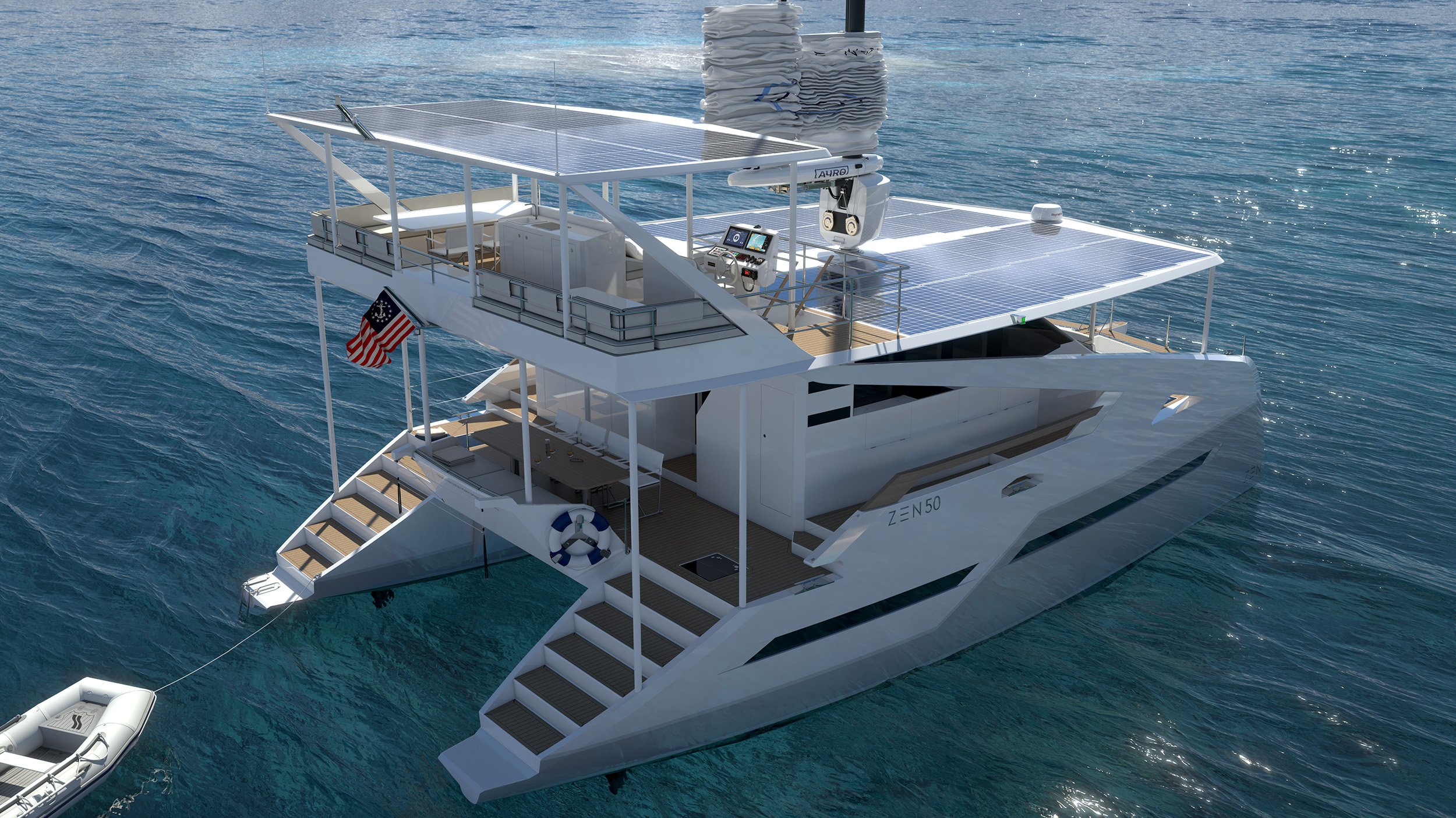
Greatest ratio SOLAR POWER / weight on the market
At 17 tonnes lightweight and 18,000 W of peak solar power, the ratio of the ZEN50 is at over 1 kW per displaced tonne of water or beyond 1:1 which is far beyond any other blue water CE Cat A yacht in this size range. Lots of solar power for little water to displace is the strong and healthy foundation the energy self-sufficient ZEN50 is built upon.
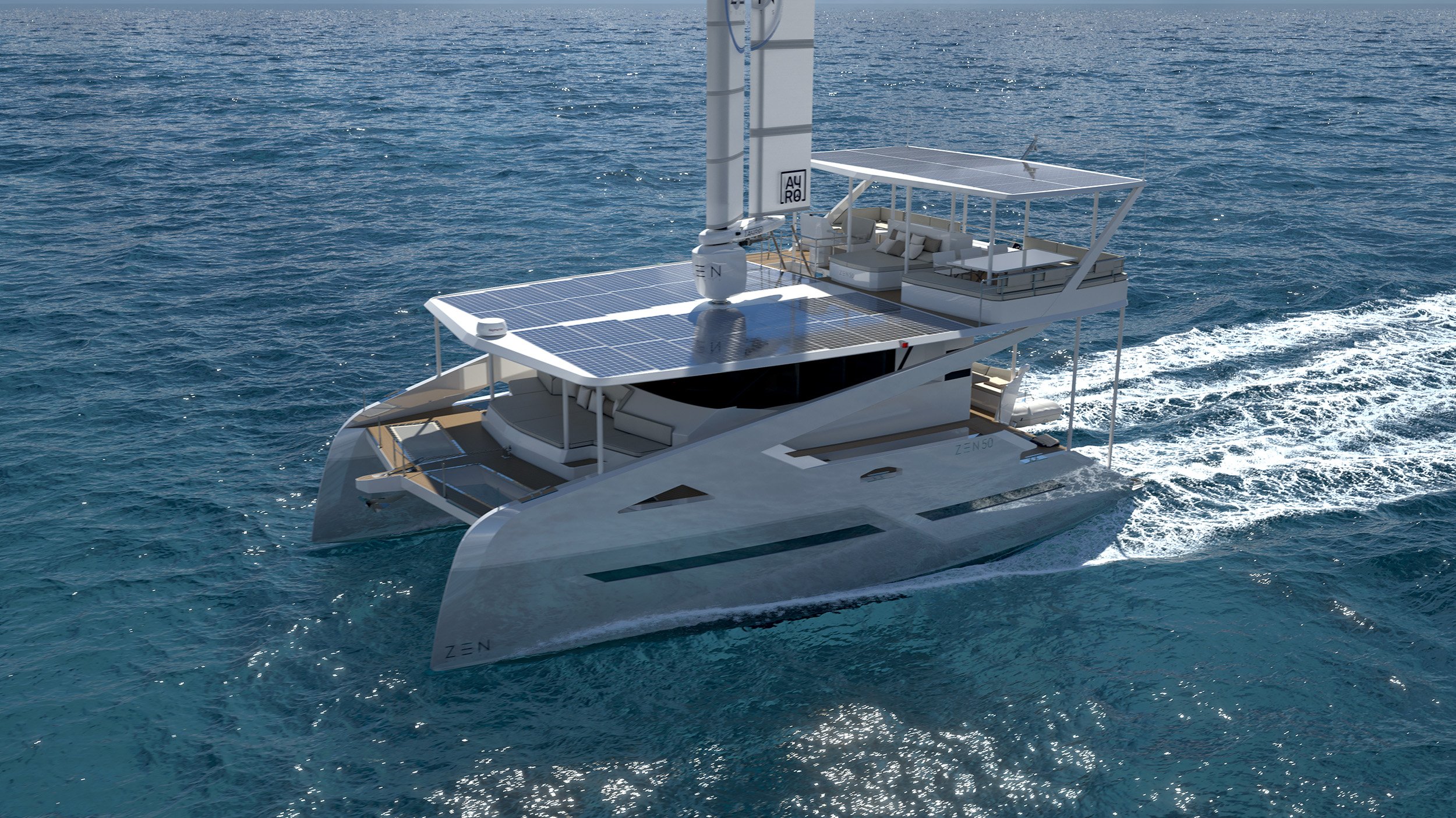
Performance CARBON sandwich hulls
The hulls of the ZEN50 have been designed from a blank screen for ultimate efficiency - understand minimum drag or minimal energy consumption for a range of speeds from 6 to 10 knots. Their shape is aggressive, sharp and slender. Their reverse bows cut through water like a sword cuts through butter and their curvature is reminiscent of graceful dolphin bodies. These hulls are undoubtedly of the performance type and are built with the best available composites: Carbon fibre and Corecell™. The combination of high strength, low weight and performance design allow the ZEN50 to reach speeds of up to 14 knots.
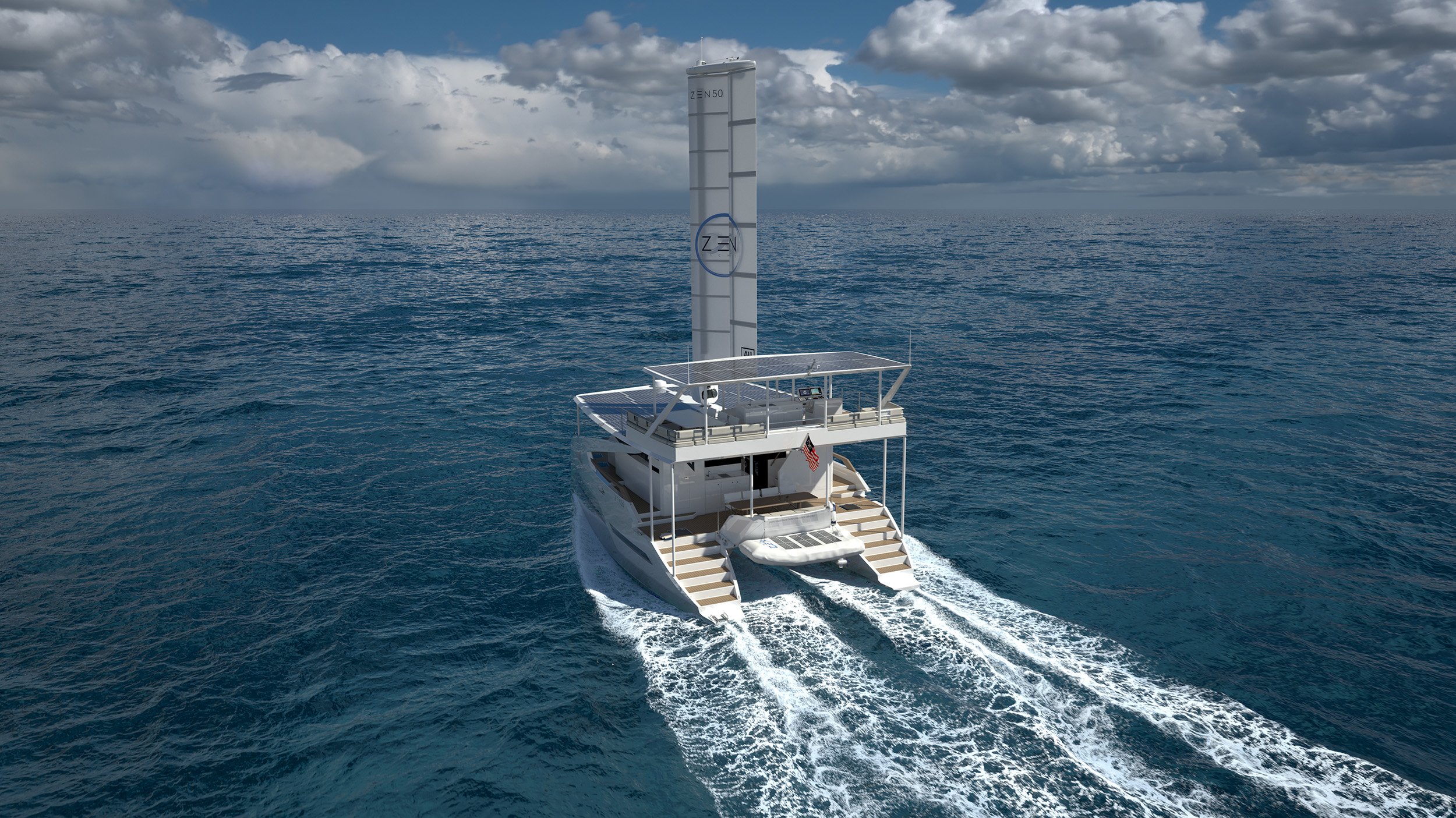
INFINITE range at high CONTINUOUS speeds
With maximized solar and wind power and minimized energy consumption… the ZEN50 can sail continuously at speeds varying between 6 and 10 knots. Thorough simulations in various sea states and weather system have consistently shown the ZEN50 will be able to achieve performance catamaran speeds continuously without using a genset. With the ZEN50, the world is your oyster and the wildest destinations are within your reach with this self-reliant vessel!

True ZERO-EMISSION operation
The first ZEN50 unit, whose construction started in March 2023, will not be equipped with a genset at all and will not have any fossil fuels onboard. The ZEN50 energy system with its very large capacity 160 kWh battery bank, has been designed to function for days in complete safety with minimal solar energy harvest and no wind. It is perfectly safe with no backup genset and operates 24/7 without any polluting emissions.
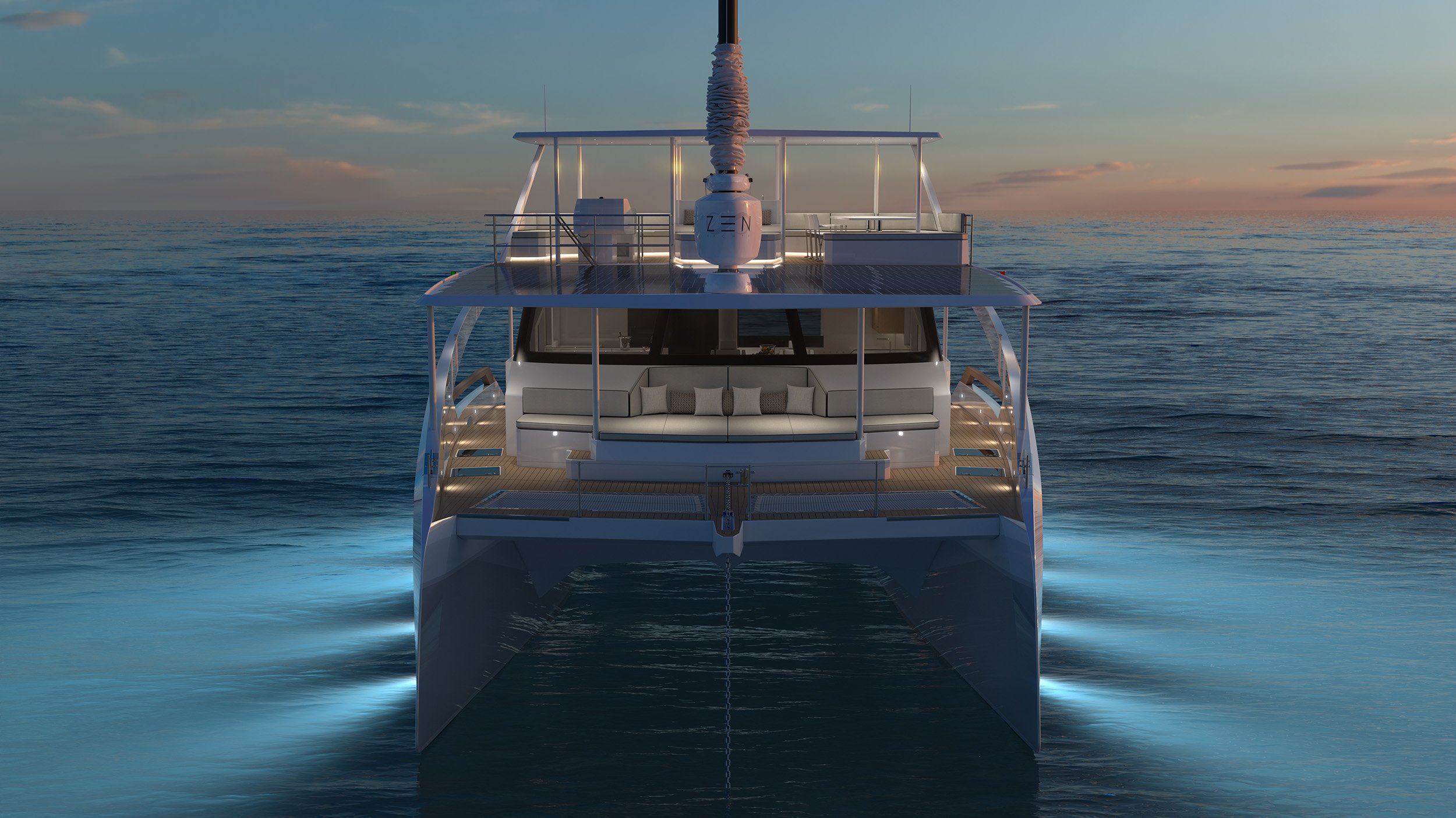
NO FUEL , no costs
Naturally, requiring no fuel to operate day in day out is great news for the environment, it is also fantastic news when sailing into remote areas where fuel bunkering might be near impossible or where the fuel quality might be an issue. Finally, it also makes a massive difference in this yacht’s costs of operation. Imagine the hundreds of liters of diesel saved over just a week, the obsolete engine maintenance schedules, the clogged filters and dirty tanks from another age… Welcome to a new burden-free, energy self-sufficient era, welcome to clean and graceful eco-yachting, welcome to ZEN Yachts.
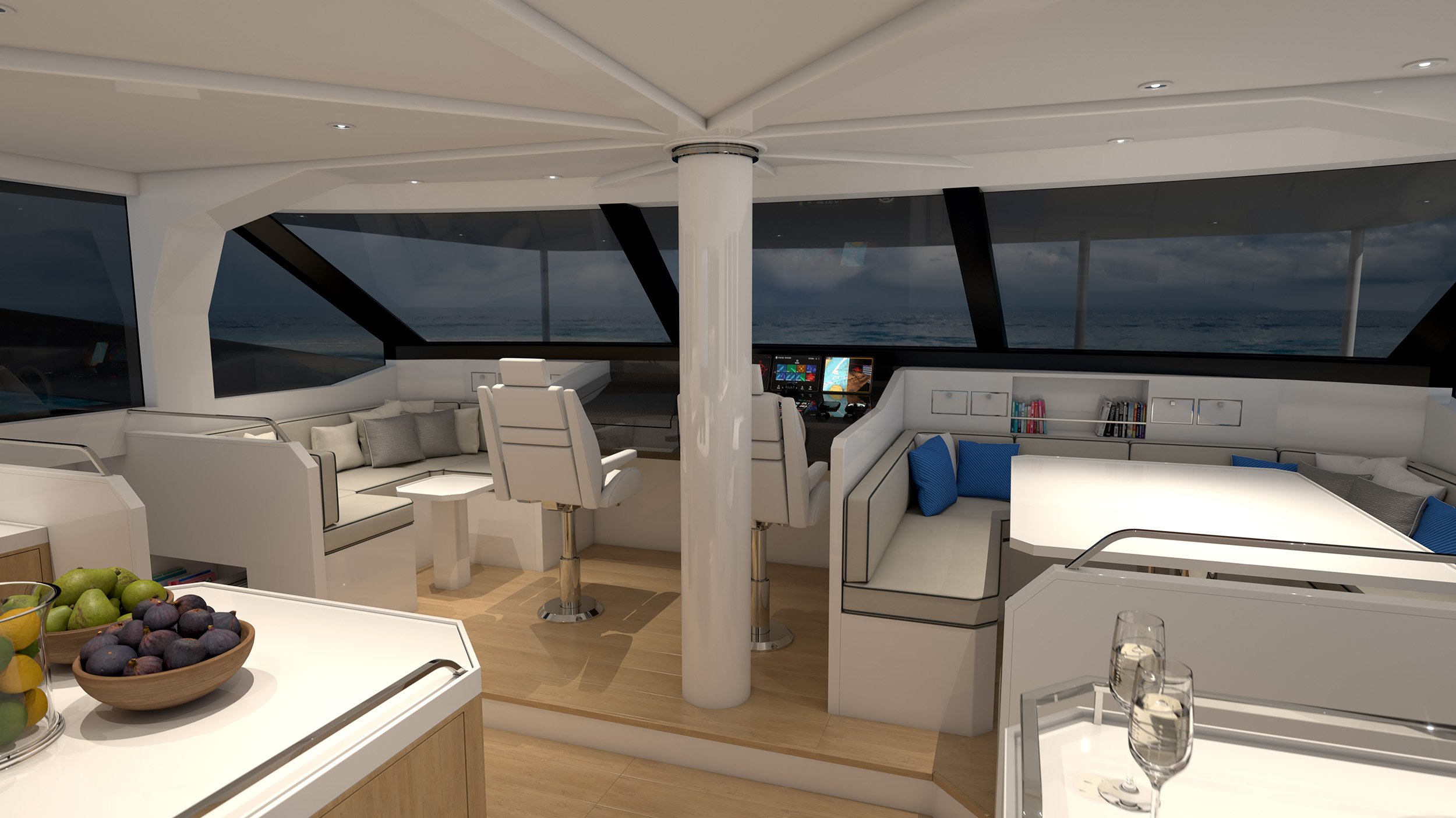
Highest SAFETY & reliability
At ZEN Yachts, we have made some design choices to attain energy self-reliance with the ZEN50 that reduces the habitable volume in the hulls, similar to performance catamarans. Where we have not and will never compromise is on safety. Our main voltage system is 48V making it perfectly safe to work on. The level of redundancy of the batteries and solar panels is 10! The main electrical architecture is split in 2 so that should anything happen on 1 hull, the entire vessel can still operate normally. There are 2 independent helm stations and the ZEN50 is packed with special safety features, nonsubmersible compartments and we can even offer an in-depth practical course on safety equipment usage and management. Sailing with the ZEN50 is not only exhilarating and clean, it is ultra safe!
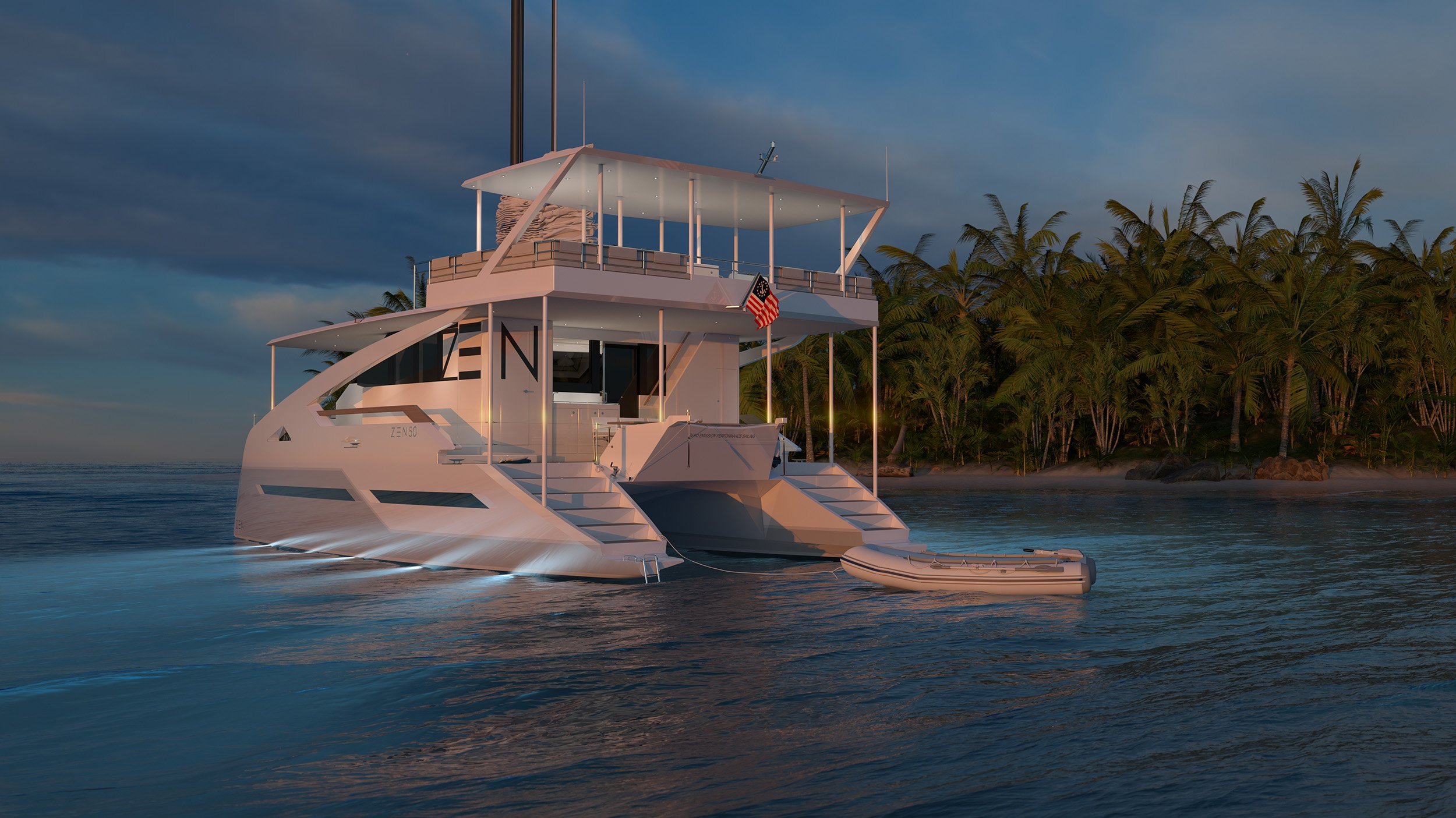
Unrivaled space & COMFORT
The ZEN50 offers the speeds of a performance catamaran, the comfort of a large motor yacht and the simplicity of an electric car. No less than 2 large day beds, 3 dining areas for over 10 people, 1 professional galley and 2 wet kitchens, 5 heads, up to 4 double ensuite cabins, 1 bunk double and 1 single together with both saloon and dining areas converting into extra sleeping areas, this is simply unrivaled on a 50 ft. catamaran. Add an electric tender, dive compressor, satellite internet, 2 helm stations (cockpit and flybridge), a solar roof that converts into a gigantic upper deck to enjoy the most epic sunrises and sunsets, welcome onboard the ZEN50!
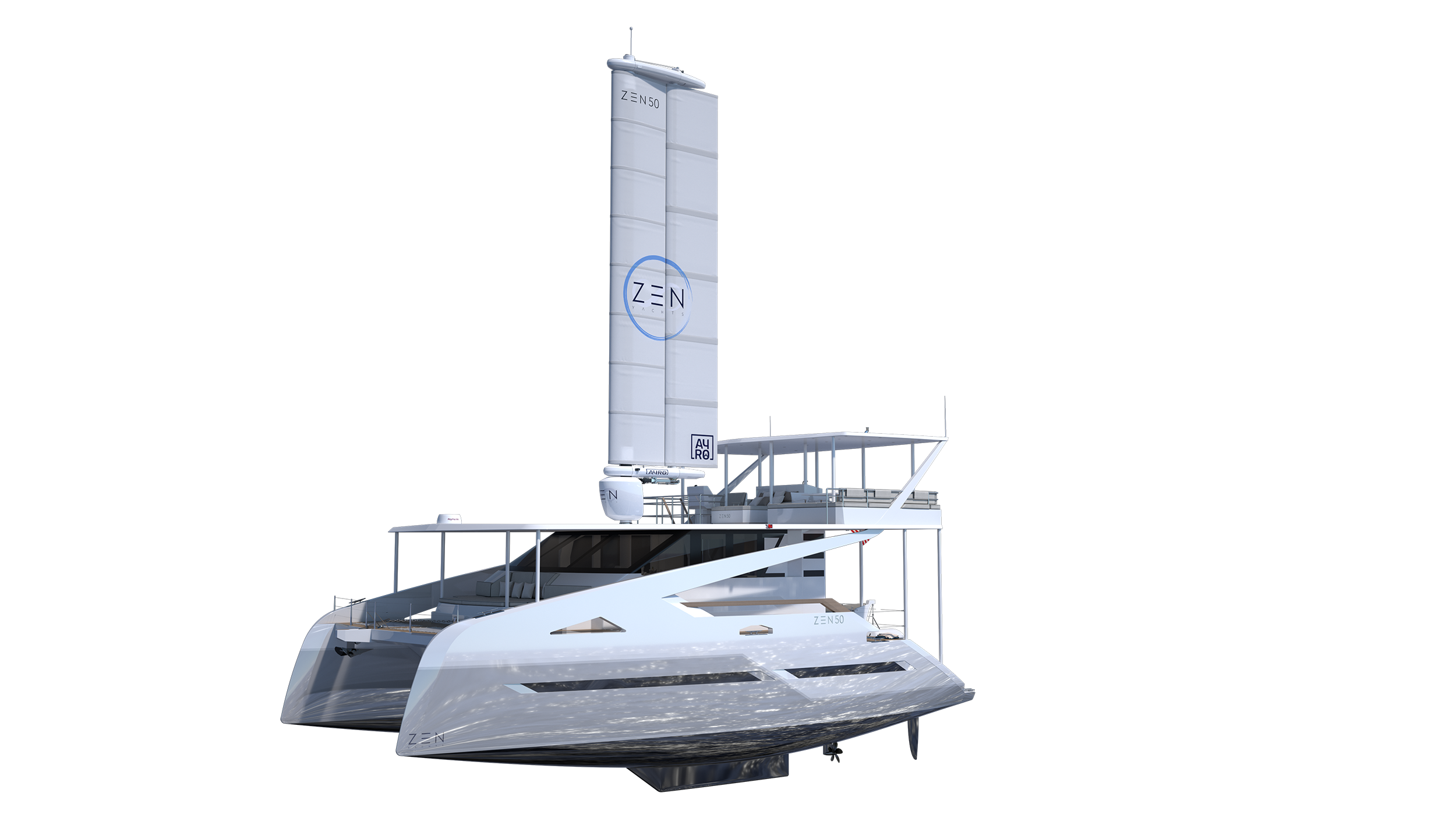
SPECIFICATIONS
Main particulars.
• Length Over All: 15.7m
• Beam: 8.4m
• Depth Molded: 2.7m at midship
• Displacement (light) : 17 T
• Draft (design): 1.3m (4.3ft) incl. keel
• Passenger Capacity: 12
• Berths: 12 (4 x double + 2 x single + saloon)
• Building Material: Carbon Fiber - Corecell™ composite
• Certification: CE Cat A - Unrestricted with 12 persons
Note: Some of the above figures may vary between versions
PROPULSION & ENERGY
• Propulsion: 2 x 50 kW brushless DC motors
• Main Battery Pack Capacity: 160 kWh Lithium
• Solar Roof Peak Power: 18 kWp
• Wingsail: Oceanwings® OWS 3.2 by Ayro©
• Backup Battery Pack Capacity (Nav/Com/Wing): 5 kWh Lithium
• Main System Voltage: 48V - Low voltage for total human safety
• Accommodation Voltage: 110V or 220V
SPEED & RANGE
• Max. Speed on e-motor only: 10 kn
• Max. Speed on e-motor & Wingsail: 14 kn
• Cruising Speed for continuous operation - solar only: 4.5 - 5 kn
• Cruising Speed for continuous operation - solar and wing: 6 - 10 kn
• Cruising Speed day time: 8 - 10 kn
• Range Over 24 h: 180+ nm
Note: These values may vary between versions and sea / weather conditions
EQUIPMENT INCLUDED - RACER VERSION
• Integrated power management system
• Solar power & energy storage system
• Electric propulsion system
• By-wire steering system
• Helm stations at cockpit & flybridge
• Galley counters, storage, sink, oven, stove, fridge, freezer
• 4 en suite heads with enclosed shower, toilet, sink & faucet (in each head)
• All cabin furniture (as shown in layouts)
• Aft deck fixed dining table and aft sofa with collapsible back rest (as shown in layouts)
• Fore deck day bed and lateral seats (as shown in layouts)
• Outdoor marine cork decking / indoor saloon natural bamboo decking
• All cushions In/Outdoor upholstered with Sunbrella® fabric
• 6 deck hatches
• 2 x 500 liter (2 x 132 gal) fresh water tanks
• 2 x 100 liter approx. (2 x 26 gal) fresh water tanks + 1 fresh water pump
• 2 x 350+ liter approx. (2 x 92 gal) holding tanks
• Railings, cleats and fore deck trampolines
• Mooring equipment: 33 kg Rocna® stainless steel anchor + 50 m stainless steel chain 10 mm + 150 m nylon rope + e-windlass
• Regulatory navigation equipment including navigation lights & mast
• 2 x chart plotter 16”; 2 x VHF with DSC button
• Regulatory Life Saving Appliances
• Critical spare parts kit
Note: The above equipment is for the Racer version. Cruiser & Explorer versions carry additional equipment
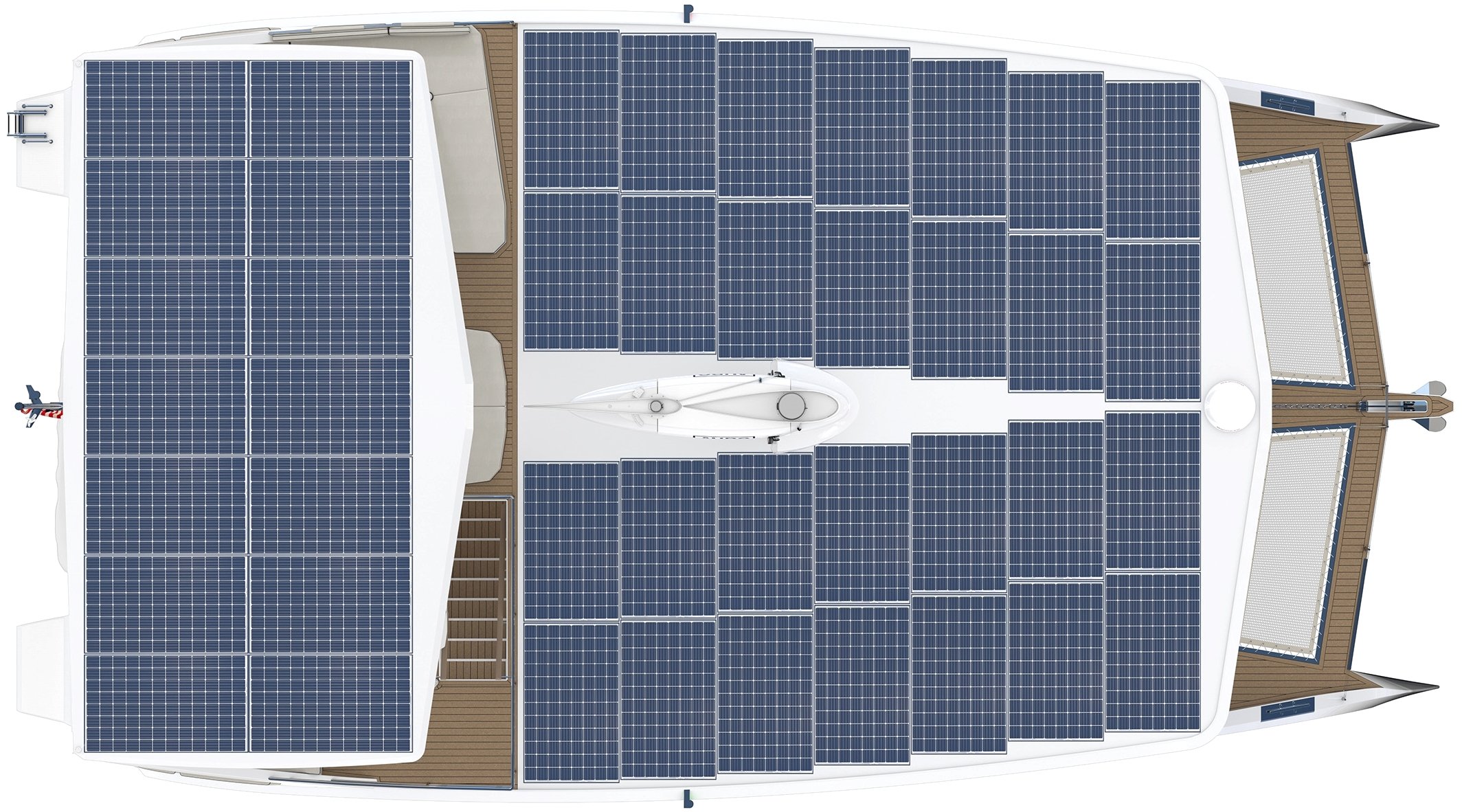
ZEN50 Solar Wingsail Electric Catamaran - Solar Roof Layout

ZEN50 Solar Wingsail Electric Catamaran - Flybridge Layout
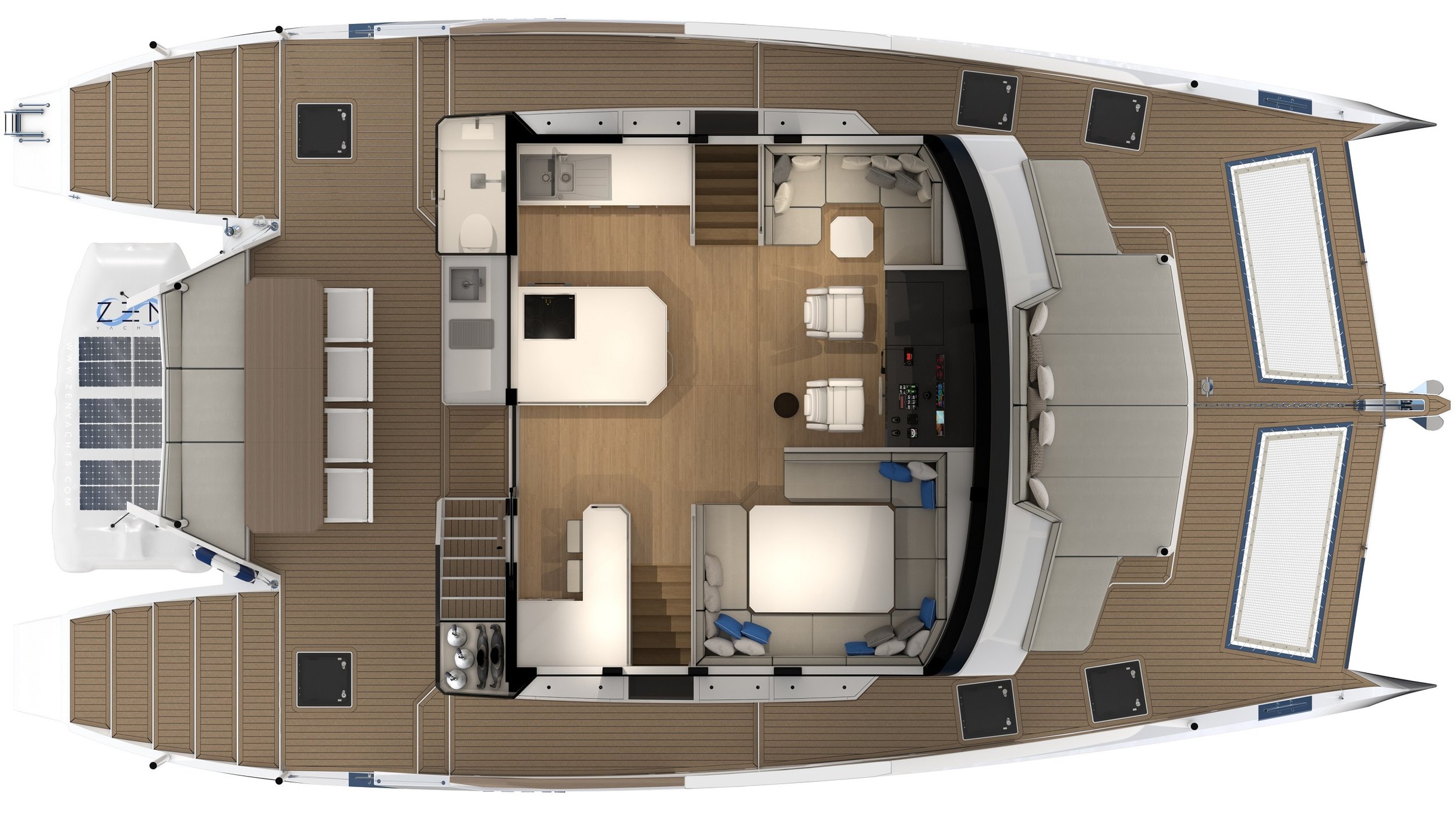
ZEN50 Solar Wingsail Electric Catamaran - Main Deck Layout - Asymmetric D (subject to changes)
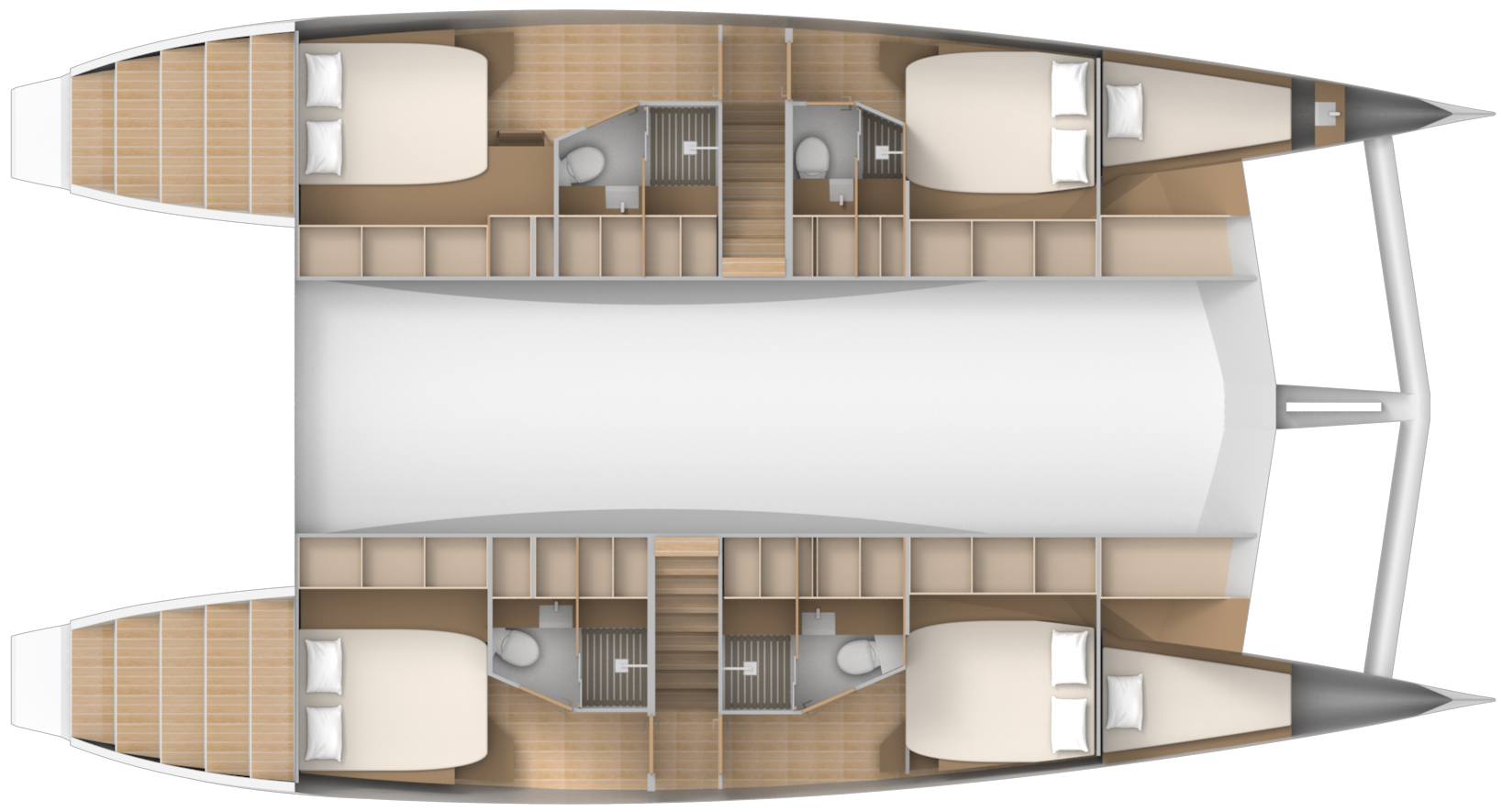
ZEN50 Solar Wingsail Electric Catamaran - Cabin Layout - Asymmetric D (subject to changes)
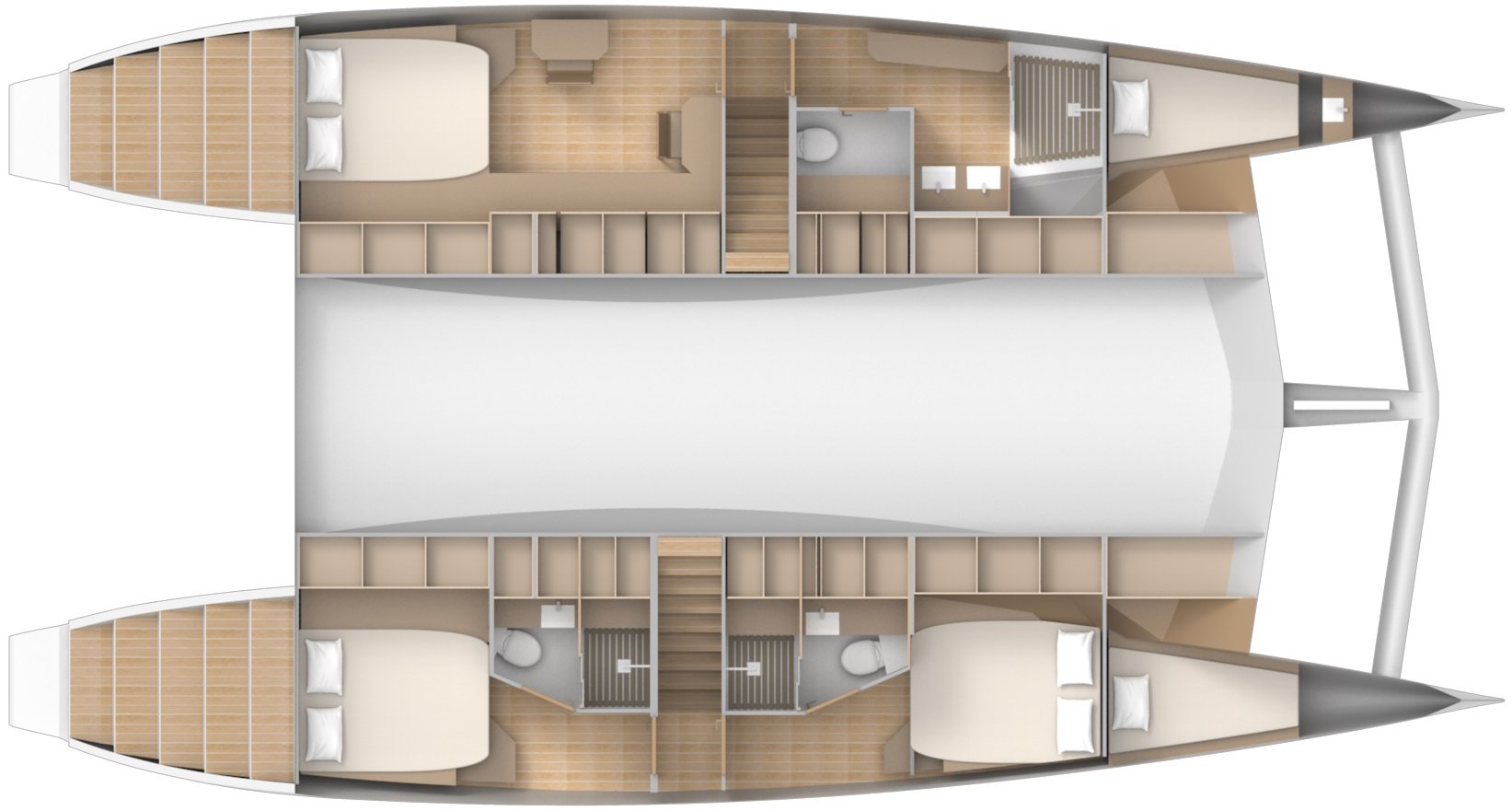
ZEN50 Solar Wingsail Electric Catamaran - Cabin Layout - Asymmetric E (subject to changes)
SOLAR & WINGSAIL
OCEAN RACER
Solar power & Wing, basic configuration, navigation, safety, fridge, etc.
EUR 2 150 000
WORLD CRUISER
Solar power & Wing, well equipped with A/C and water maker
EUR 2 400 000
ARCTIC EXPLORER
Solar power & Wing ultimate configuration with all available options
EUR 2 650 000
Solar power, basic configuration, navigation, safety, fridge, etc.
EUR 1 700 000
CONTINENTAL CRUISER
Solar power, well equipped configuration with A/C and water maker
EUR 1 900 000
TROPICAL EXPLORER
Solar power ultimate configuration with all available options
EUR 2 100 000
Ready to reserve your ZEN50?
Want more information .
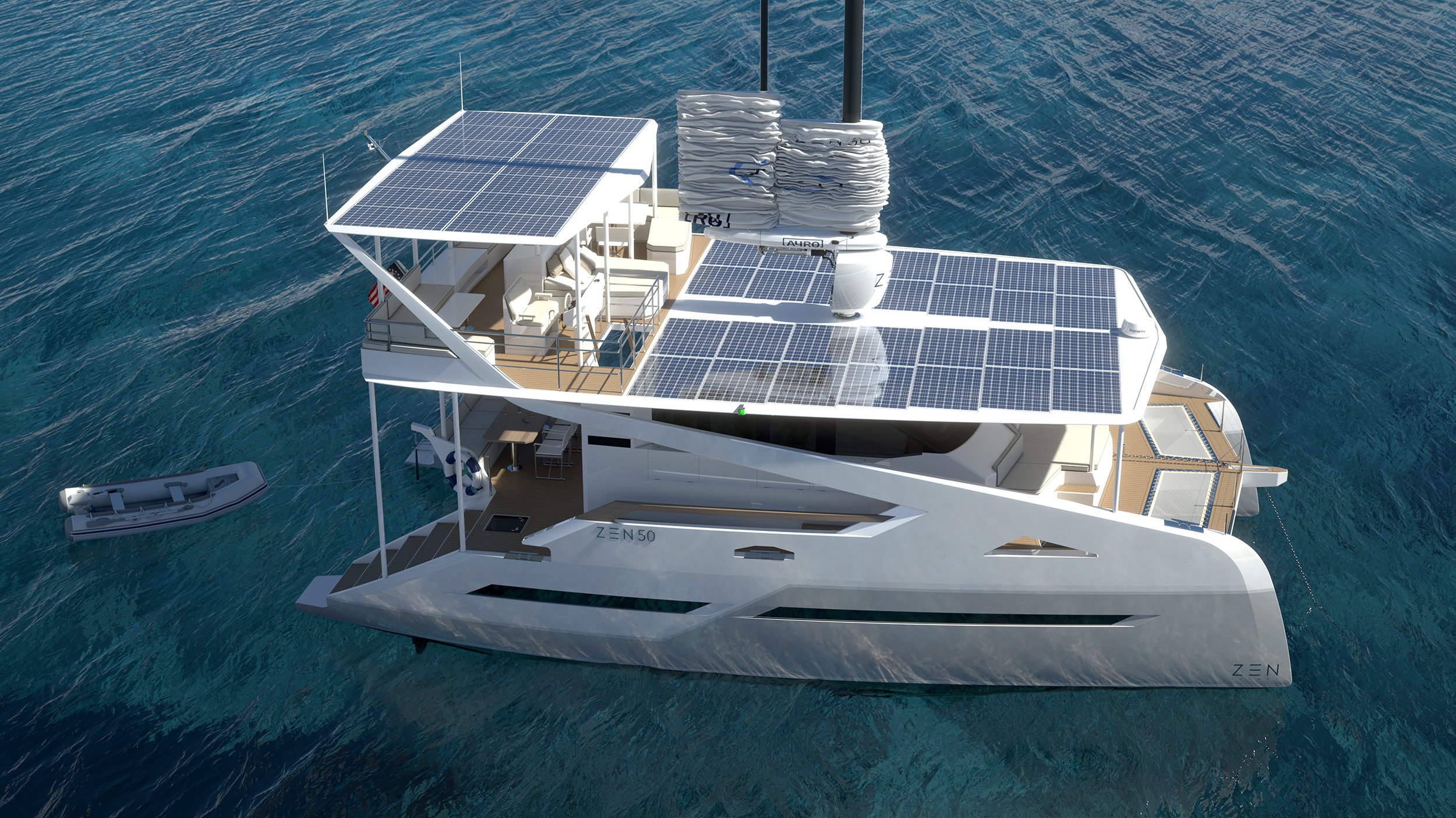
- THE PRINCESS PASSPORT
- Email Newsletter
- Yacht Walkthroughs
- Destinations
- Electronics
- Best Marine Electronics & Technology
- Boating Safety

Sunreef Power Eco Is A Think-Different Catamaran
- By Kim Kavin
- February 14, 2024
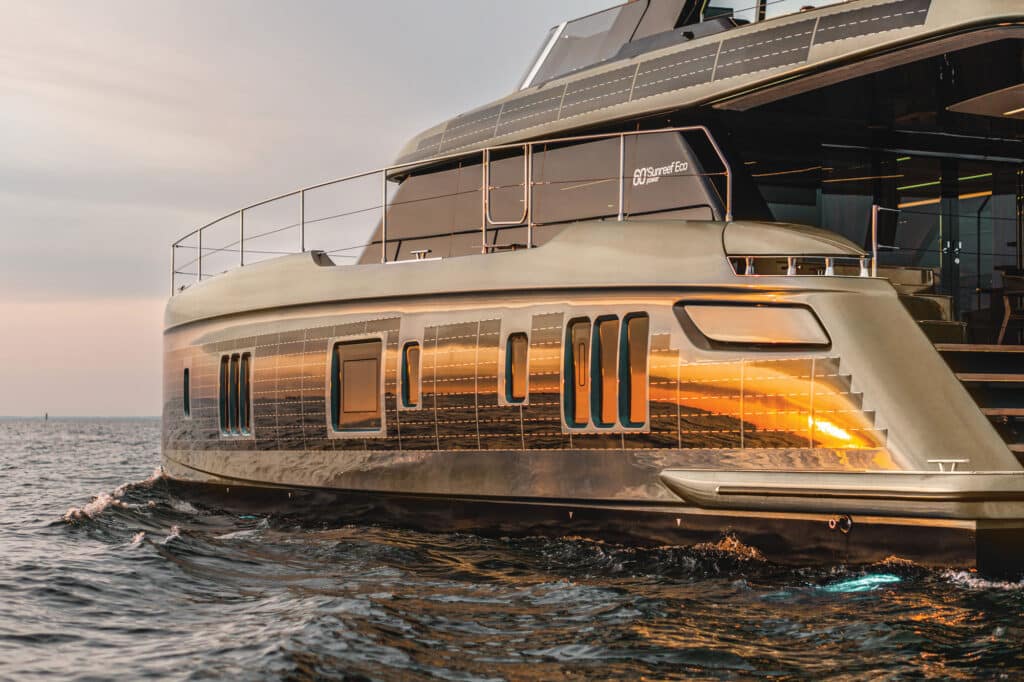
Any yacht that’s built with a “solar skin” is bound to attract owners who have at least a few thoughts about the environment. Such is the case with Sunreef’s Power Eco series of catamarans. Formula 1 driver Fernando Alonso recently took delivery of a 60 Power Eco, saying that sustainability considerations were fundamental to his vessel choice. The owner of the first 80 Power Eco , christened Sól , built the yacht entirely cruelty-free, including far more than avoiding animal-derived fabrics such as leather.
As just one example, there’s a composting machine on board Sól . It lets the chefs reduce trash by turning scraps into fertilizer for island farmers, who, in exchange, provide the yacht with locally grown microgreens. “This is definitely different,” says chef Sara Nelson. “I don’t know any other boat doing these things to the level that we’re doing them.”

The captain of Sól thinks about sustainability right down to the crew’s polishing tools for the hull. “You need woolies, but I had to go to the manufacturer to see if it was real wool or not,” Capt. Jack Gorman says. “These are synthetic wool. That’s what we’re going for. Everything down to the bottom paint is cruelty-free. Ablative bottom paints, if you put 20 gallons of that on your yacht, it sloughs off into the environment, and it’s bad for the reefs. We’re using a silicon base without biocides.”
The 80’s two rotating chefs trained in plant-based cooking with celebrity chef Matthew Kenney. Aboard Sól , they will prepare any type of food that guests prefer, but they are ready for charter clients who want all-vegan menus.
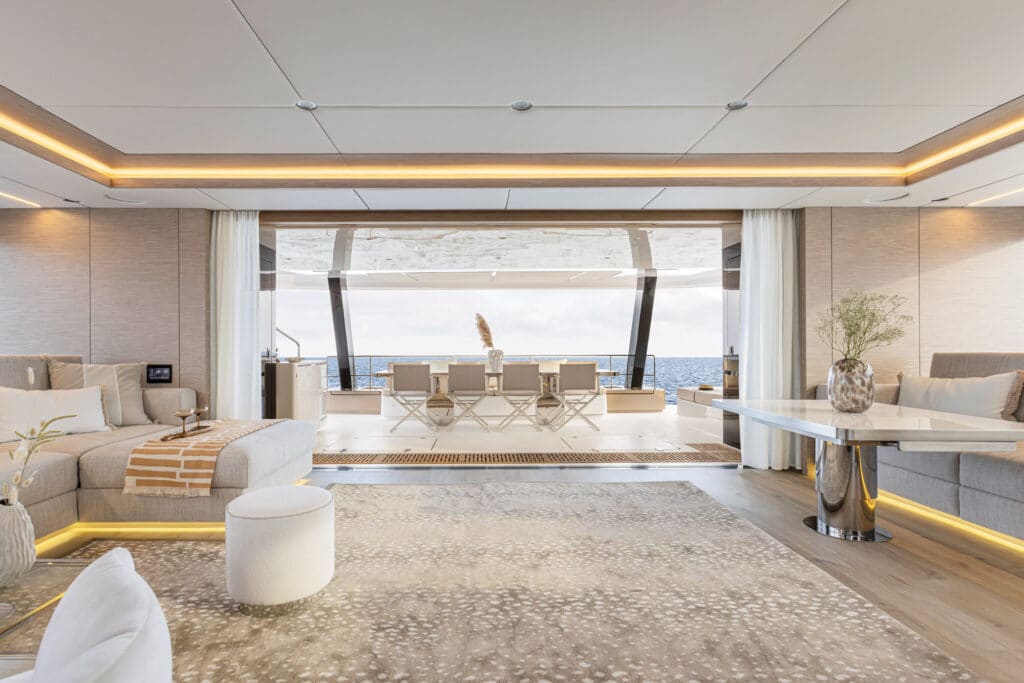
“Most people are reducers,” the 80’s owner says. “A small percentage of the world is vegan, but the majority of people have been looking for plant-based options—not necessarily three meals a day, but they will choose a plant-based dinner some percentage of their evenings.” Aboard Sól , he adds, “it’s delicious, exquisite, high-quality plant-based options.”
As their name implies, the Sunreef Power Eco yachts also have electric power. Sunreef has been adding energy-saving air-conditioning systems, along with custom battery banks that are lighter—and, therefore, can be bigger—than the types of batteries some other builders are testing.
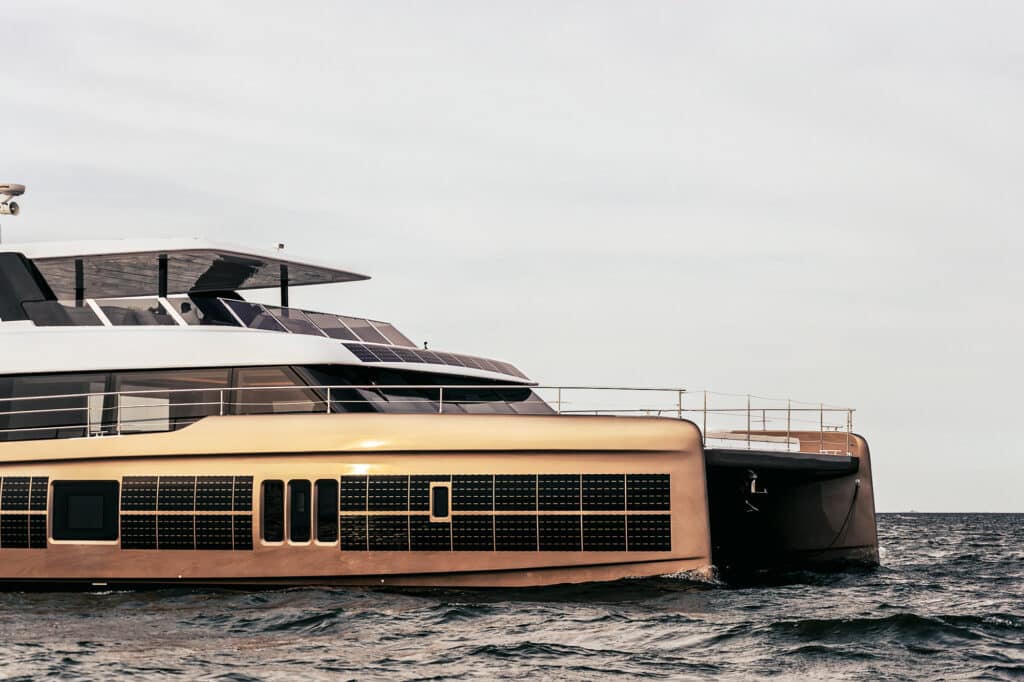
The result is the kind of cruising and charter experience that appeals to people who are eager to make an eco-friendly turn. As Alonso puts it, “long, fume-free and quiet cruises let you enjoy the seas on a whole new level. This yacht has some amazing technology that cannot be found anywhere else.”
Take the next step: sunreef-yachts.com
- More: Catamarans , Currents , January 2024 , Power Catamarans , Solar Powered Yachts , Sunreef , Sunreef Yachts , Yachts
- More Yachts
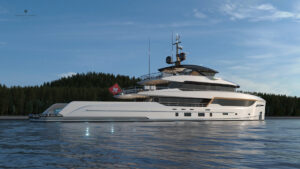
New Flagship for Bering Yachts: The B165
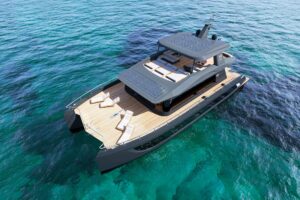
Power Catamaran Popularity Rising
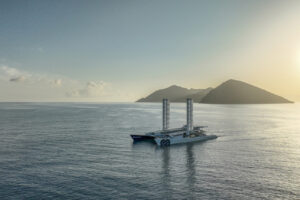
“Energy Observer” Zero-Emission Boat Showcases Sustainability
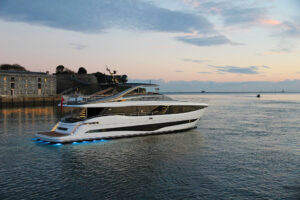
Princess Yachts’ Y95: A Flagship Flybridge
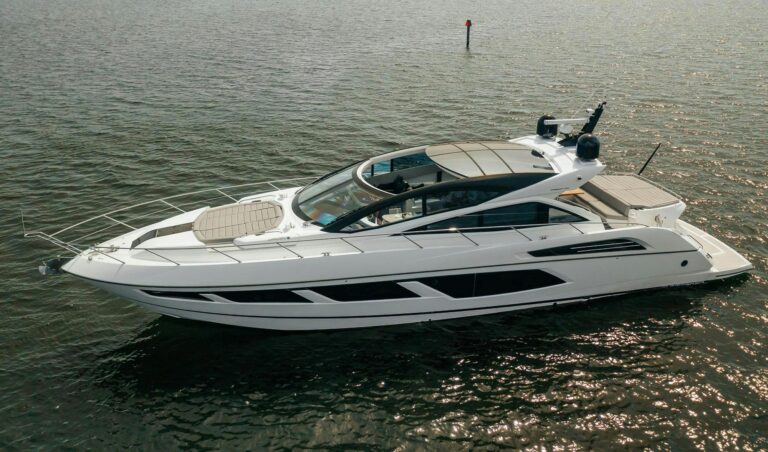
For Sale: Sunseeker Predator 68
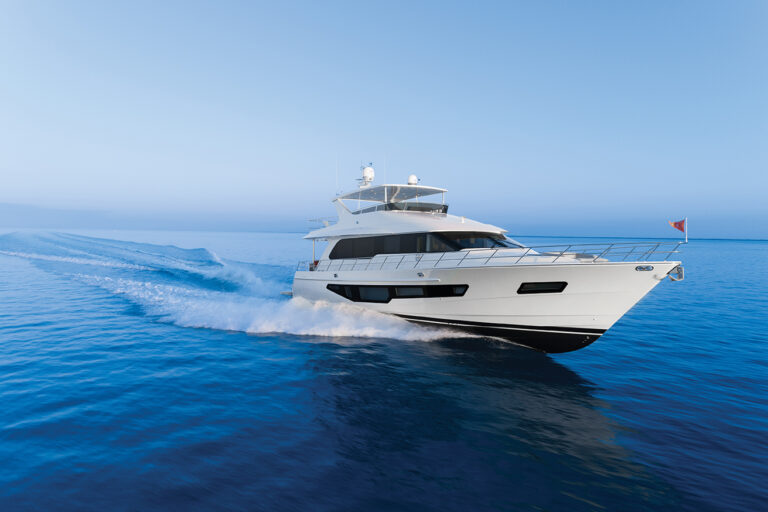
For Sale: CL Yachts CLB 72
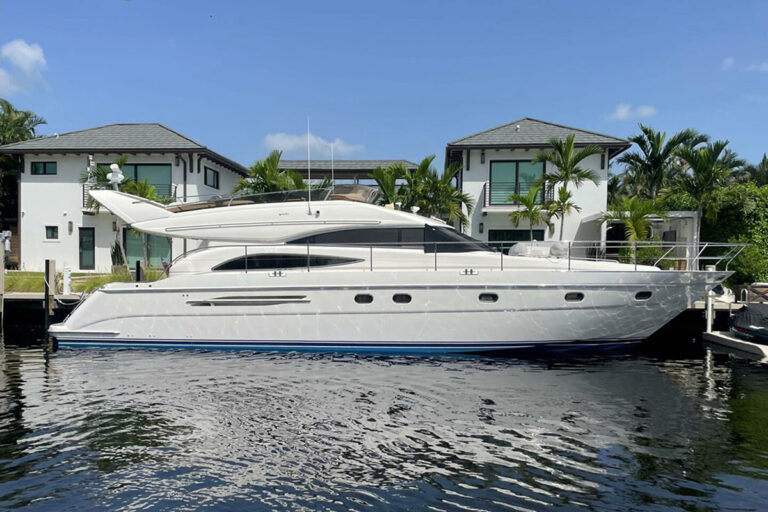
10 Yachts Under $500,000 You Can Have Today
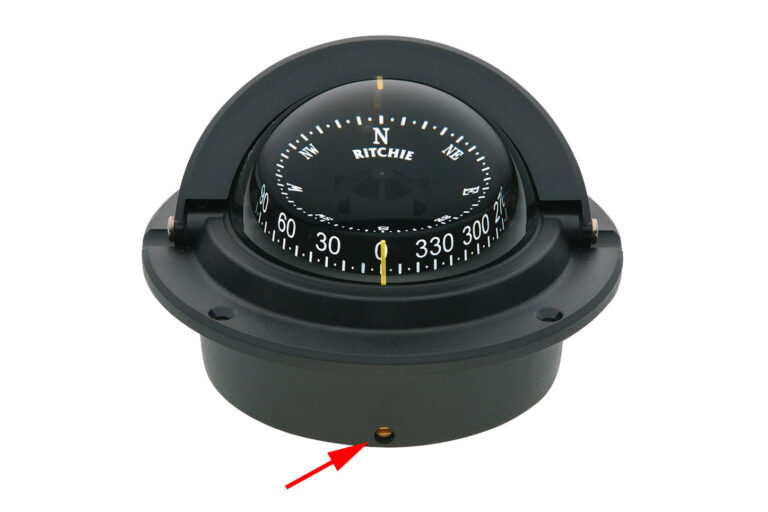
How to Swing a Compass on a Boat

- Digital Edition
- Customer Service
- Privacy Policy
- Email Newsletters
- Cruising World
- Sailing World
- Salt Water Sportsman
- Sport Fishing
- Wakeboarding

- solar electric yachts
- Soel Senses 62
- Soel Senses 82
- Soel Shuttle 14
- Custom model
SOEL YACHTS
Solar electric yachts.
With dedication and passion for high tech, sustainability and excellent design, Soel Yachts creates solar electric yachts that promise high efficiency, low emissions, outstanding comfort, low maintenance, and significantly reduced costs of ownership. We are driven by an unwavering commitment to accelerate the transition to sustainable and autonomous mobility on the water.

ENJOY THE RICHNESS OF THE SEA
Our solar electric catamarans combine all the elements for a luxurious and environmentally conscious aquatic lifestyle. With zero CO2 or noise emissions on board, you can reconnect with your senses and fully enjoy the journey.
electric models
The Soel Yachts portfolio offers solar electric catamarans for both private and commercial applications. With the vast experience gathered trough different projects worldwide and boats successfully performing on a daily basis for many years, we gladly can discuss individual requirements and find the ideal solution for your preferred electric yacht and destination
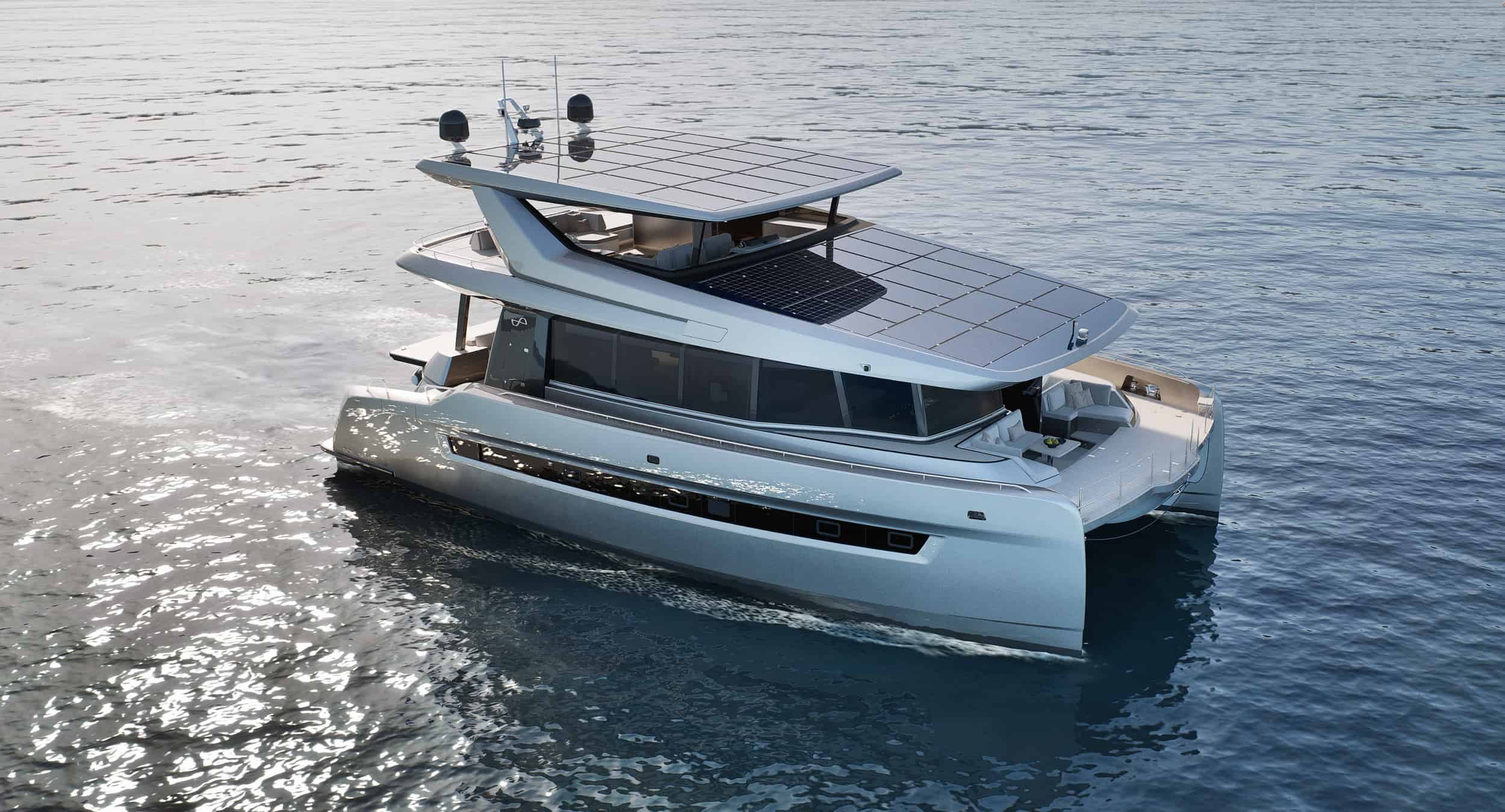
PIONEERS SINCE 2007
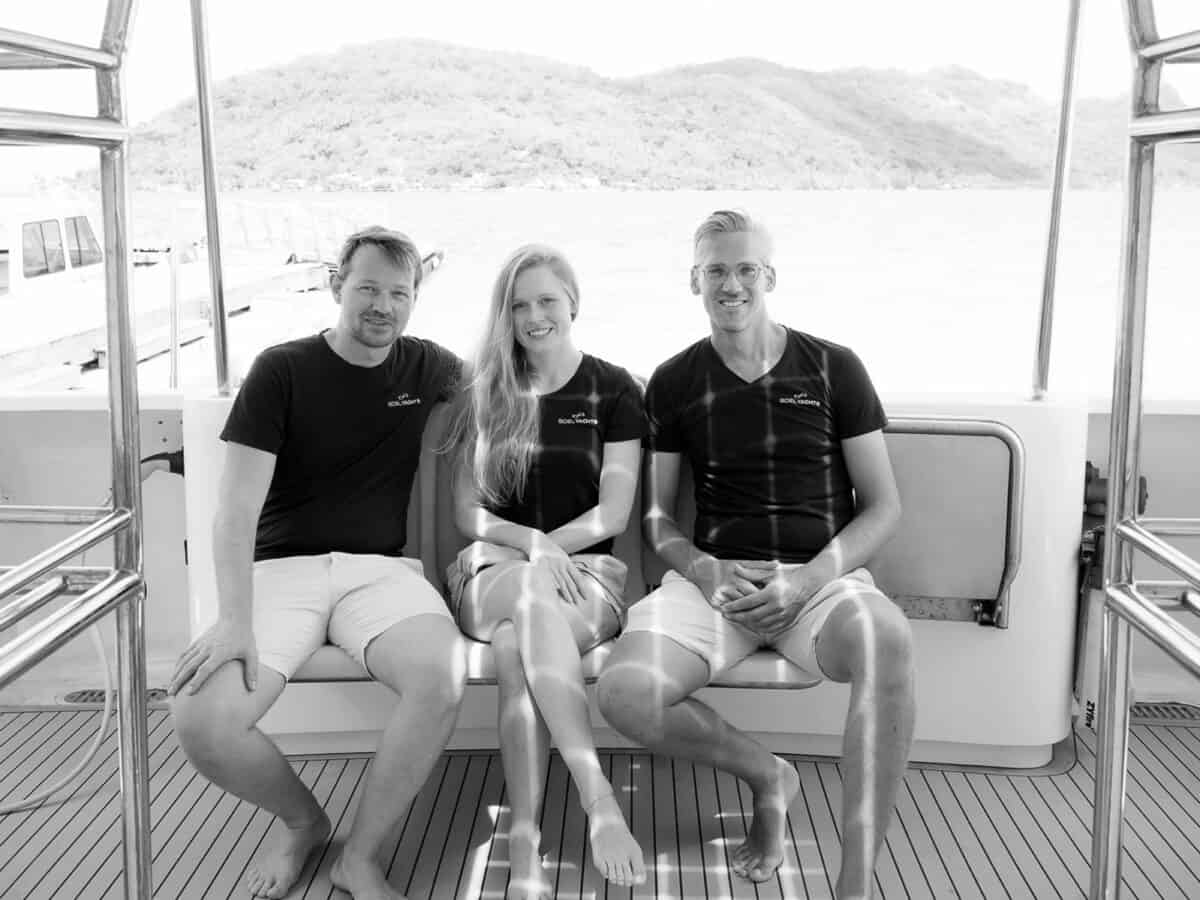
Bringing over 15 years of extensive expertise in electrifying solar electric yachts since 2007, we have been pioneers in the solar yachts industry. Our integral solar electric systems in-house have impressively powered more than 27 circumnavigations of the Earth across the world’s oceans, offering unmatched real-world testing and performance validation for an extraordinary and worry-free sailing experience.
LEARN MORE ABOUT US

INNOVATIVE TECHNOLOGY
At our core, we strive for the perfect balance between cutting-edge technology, purposeful design, and outstanding performance. Our innovative approach combines streamlined hull designs for electric propulsion, engineered in conjunction with our in-house systems, to ensure an exceptional range.
DISCOVER TECHNOLOGY
BOOK APPOINTMENT
It is undoubtedly the most effective approach to directly communicate your desires and preferences with one of our partners. They can provide you with a comprehensive presentation of the available options and take you on a virtual tour of your desired model. Our team eagerly awaits your message today to arrange your personalized appointment, which can be conveniently held either online or in person.
GET IN CONTACT


Five of the Best Solar Powered Yachts of 2023
- Thursday 10 December, 2020
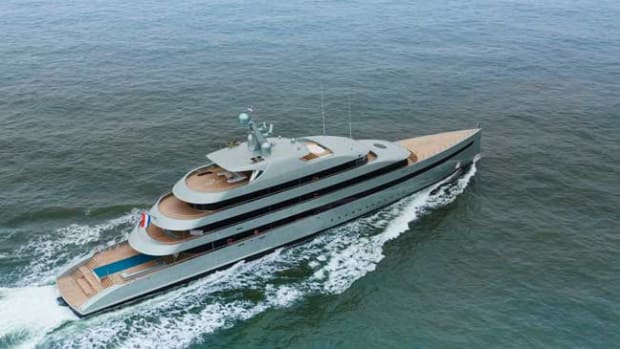
Silent Yachts founder Michael Köhler drew plenty of laughter across the industry back in 2005 when he announced he was moving away from diesel to build solar-powered luxury marine vessels. When his Köhler’s Solarwave 46 was launched five years later, though, those laughs turned to gasps.
Despite the limitations and expense surrounding the technology back then, he had achieved a stylish creation that had all of the mod cons and ran purely on the power of the sun. It should come as no shock then that Silent Yachts leads off our list of the top five solar-powered yachts on the market today.
Solar powered yachts are becoming increasingly popular in Australia, with more and more people looking for eco-friendly and sustainable ways to explore the country’s stunning coastline. These vessels harness the sun’s power to provide a clean and renewable energy source, reducing the need for fossil fuels and helping to protect the environment. With so many options on the market, it can be difficult to know which yacht is the best for you. To help you make an informed decision, here are five of the best solar powered yachts for sale in 2023.
Exploring solar-powered boats for sale
- Silent 80 Tri-Deck catamarans
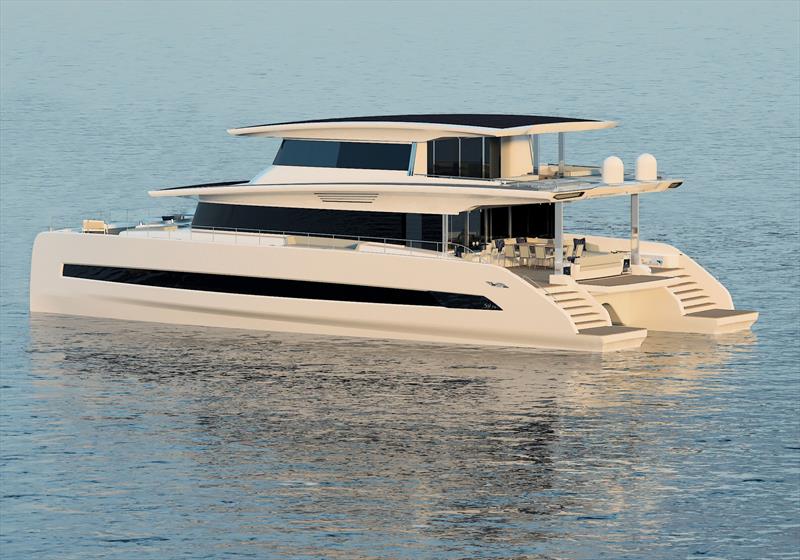
- Silent Yachts Catamaran Silent 55
The solar-powered Catamaran Silent 55 combines eco-friendly propulsion with luxurious accommodations. It is a 55-foot ocean-going catamaran with four staterooms and restrooms that is solar-powered and self-sufficient. The only mechanical components that need maintenance are the generators; there are no engine noises or vibrations.
The most powerful E-Power+ propulsion option, which combines the largest battery bank with the strongest electric motors, is available on this fully equipped vessel. As a result, faster speeds can be maintained for much longer while optimising the amount of energy stored for backup and used when necessary. E-Power+ provides the best solar-powered yachting experience.
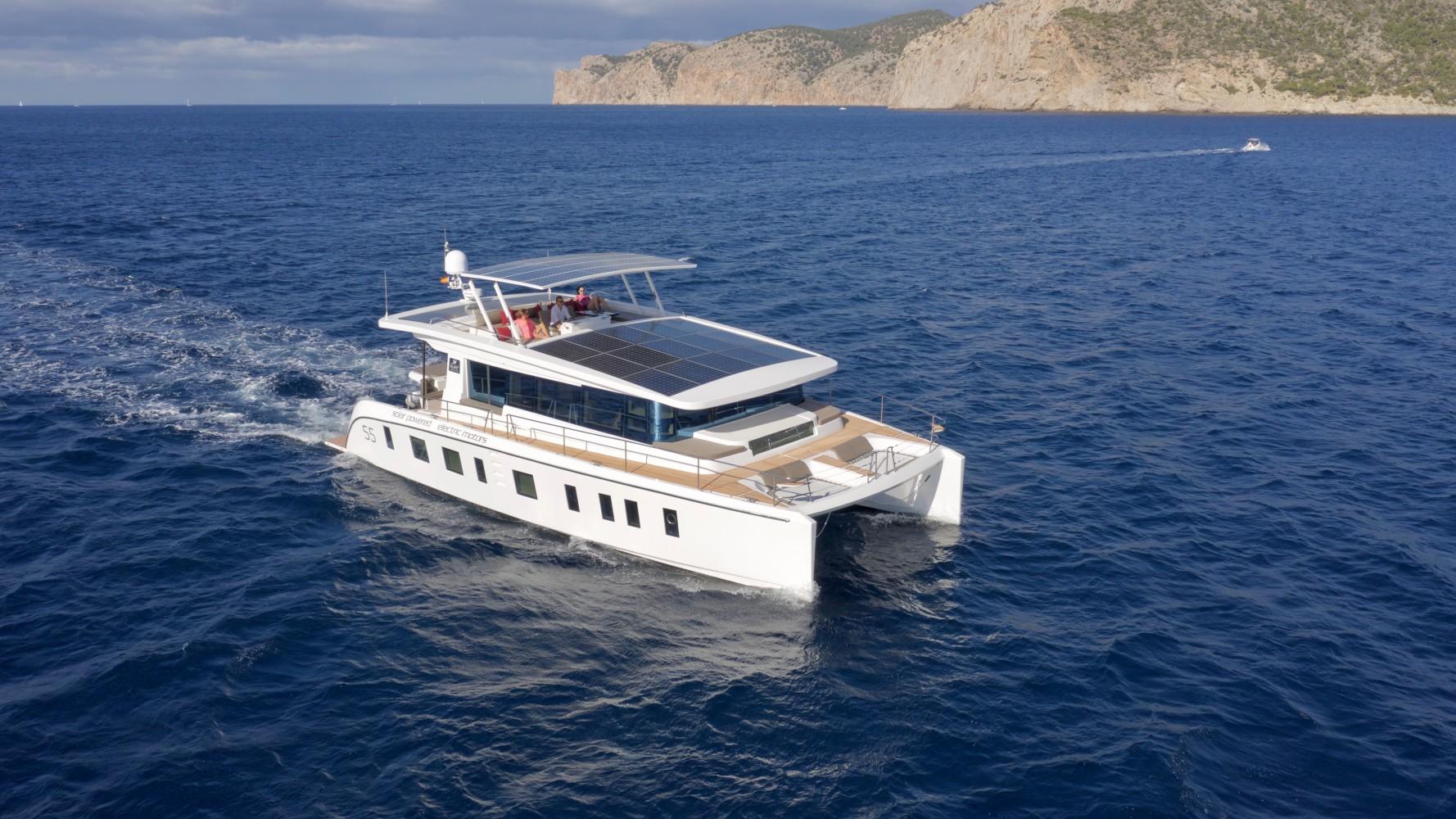
- Serenity Yachts Serenity 64
The Serenity Yachts range is focused on power and can run indefinitely on its array at a cruising speed of between four and six knots while it has top speeds of up to 16 knots. It has electric and hybrid motors that also power all of the amenities and the 64-foot vessel is available in several different layouts.
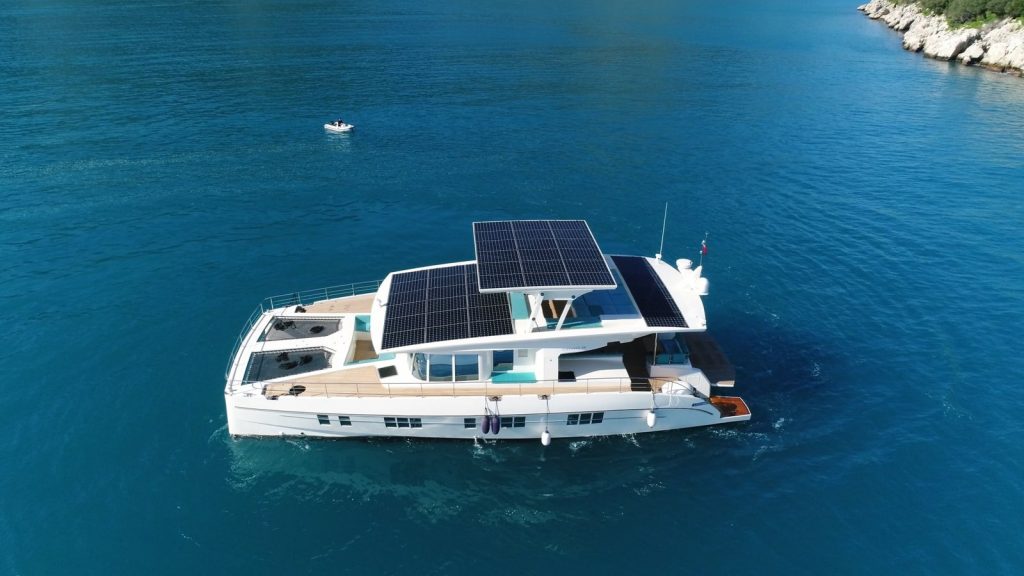
- Serenity Yachts Serenity 74
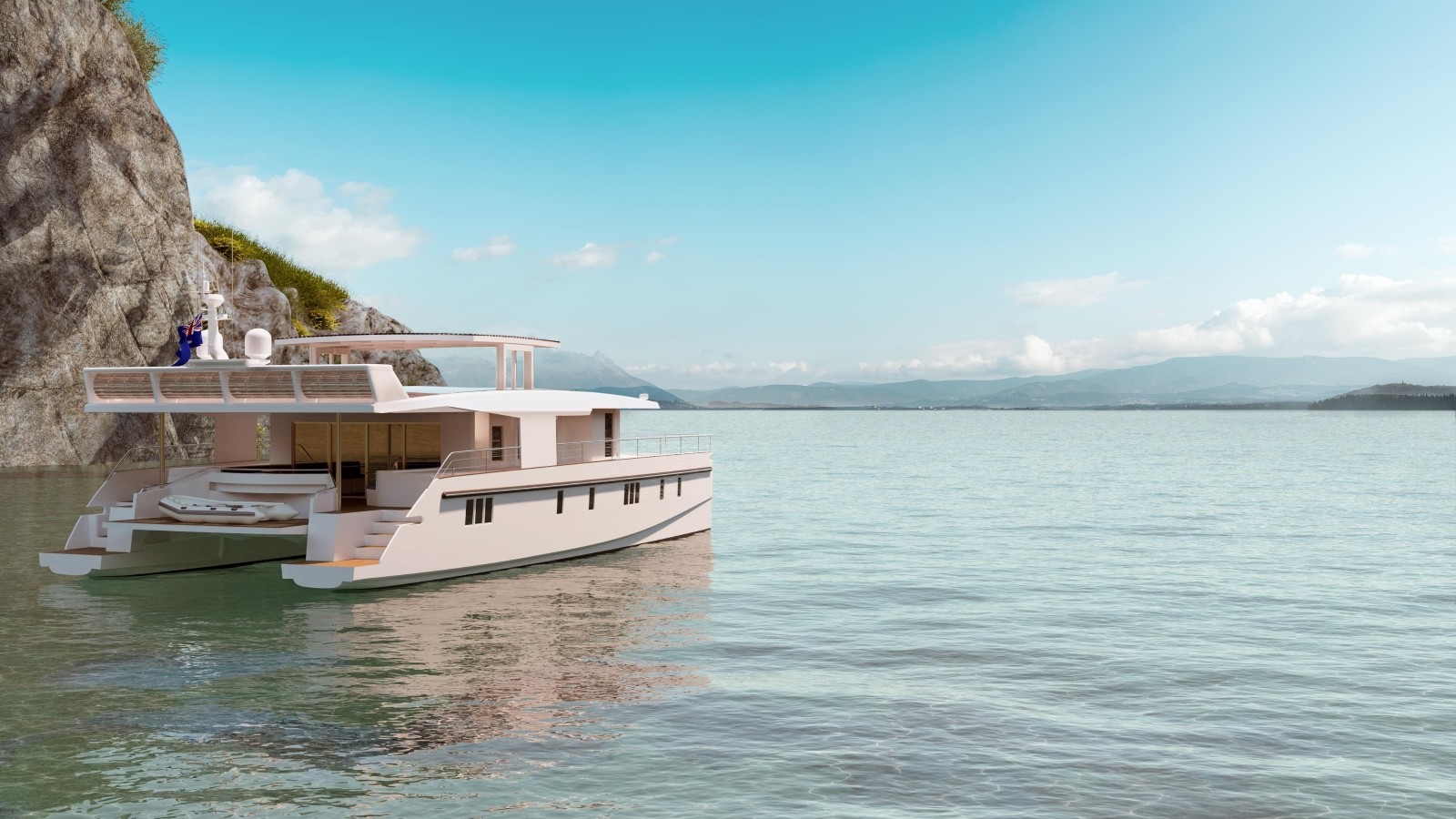
- Soel Senses 48
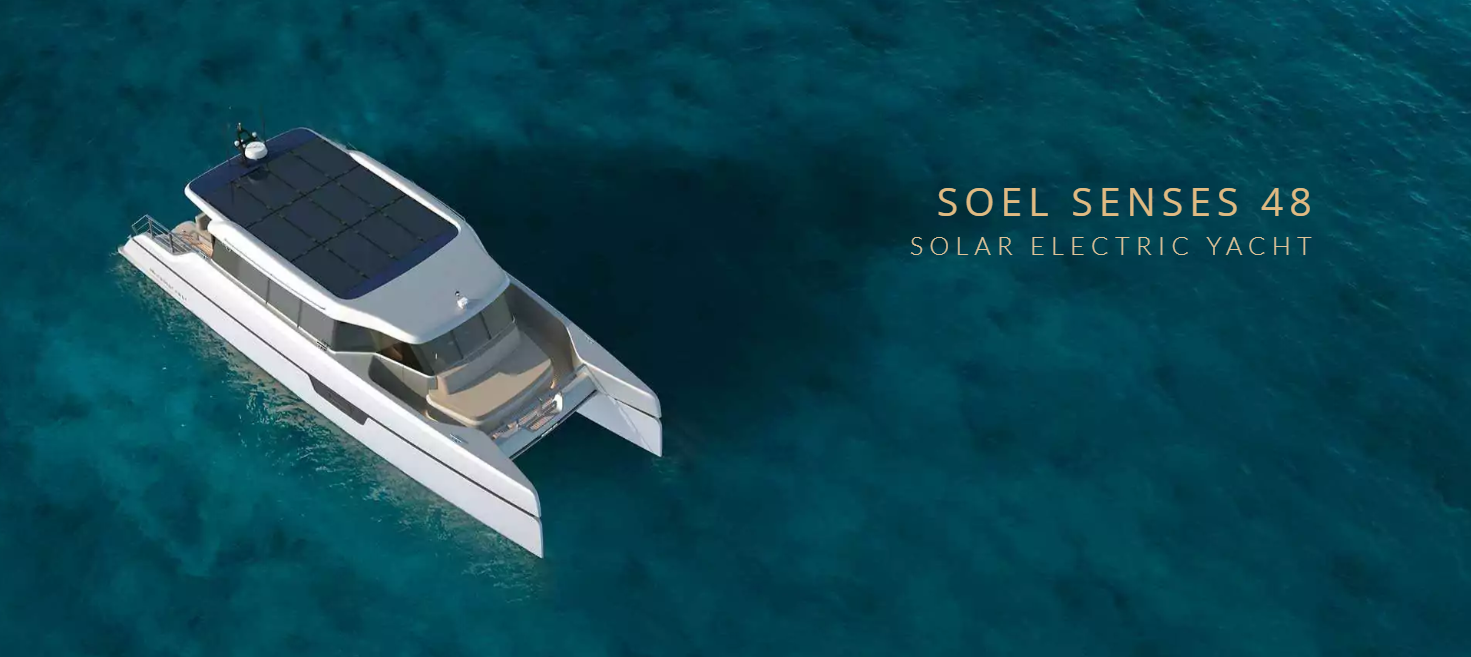
Updated February 2023
Latest Products
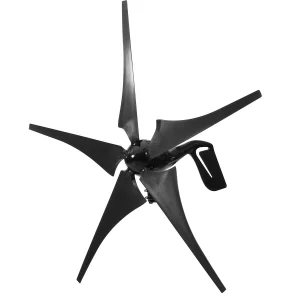
800W Peak 12V/24V 5 Blades Black Wind Turbine Power Generator With Charge Controller – 24V
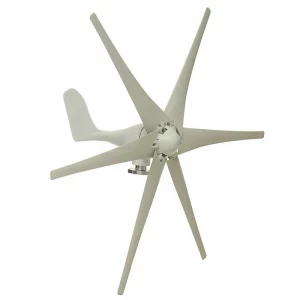
800W Peak 6 Blades 12V/24V/48V Horizontal Wind Turbine Generator Residential Home Wind Power Generator – 48V
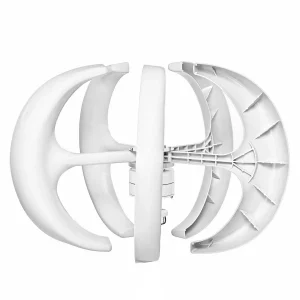
400W 12V/24V 5 Blades Lanterns Wind Turbine Generator Vertical Axis Windmill With Controller – 12V
Related blogs.
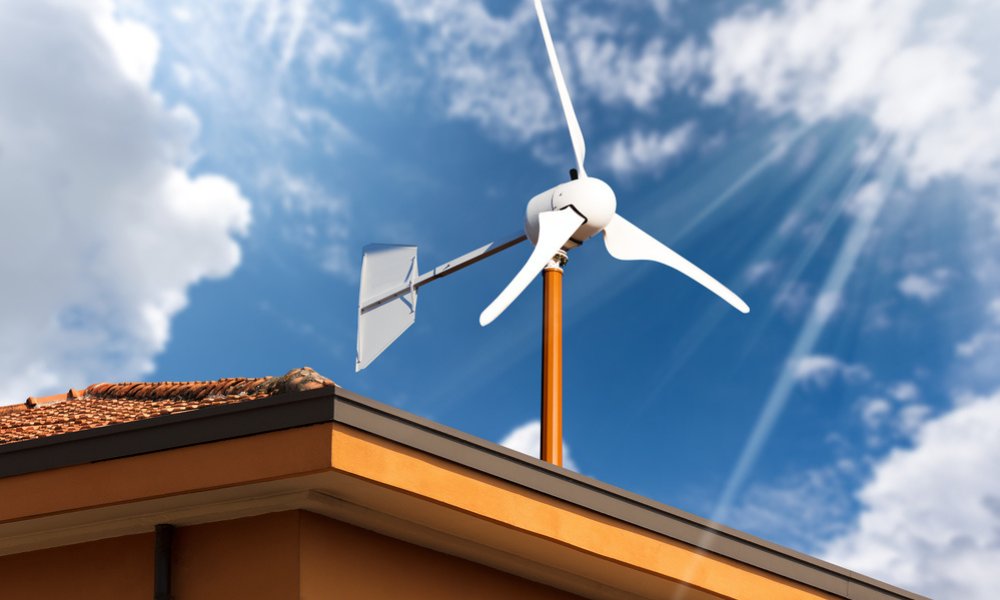
Harnessing the Breeze: Residential Wind Turbines and their Synergy with Solar Panels
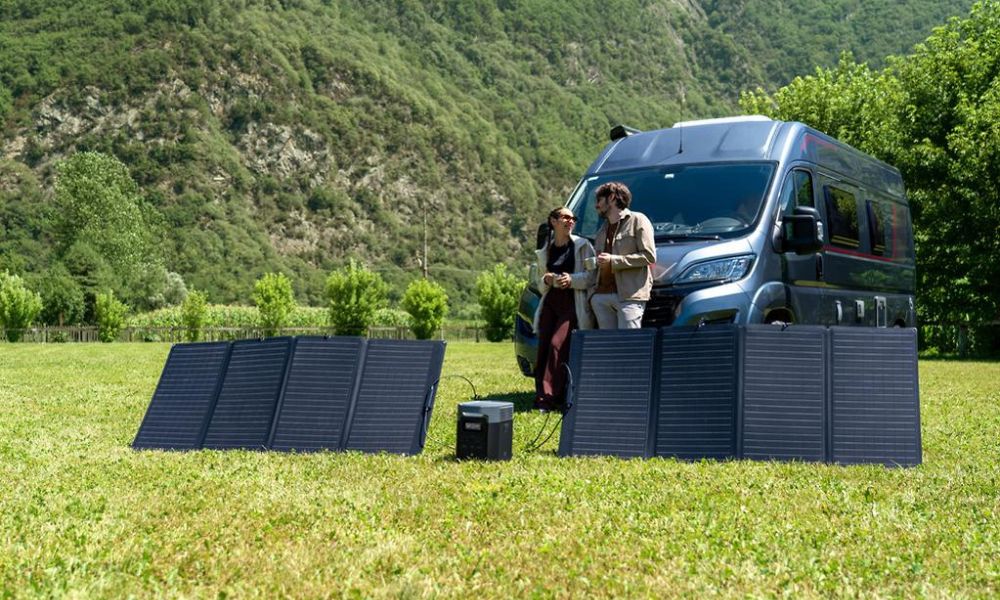
Exploring EcoFlow’s Delta 2 Portable Power Station and 220W Bifacial Solar Panel
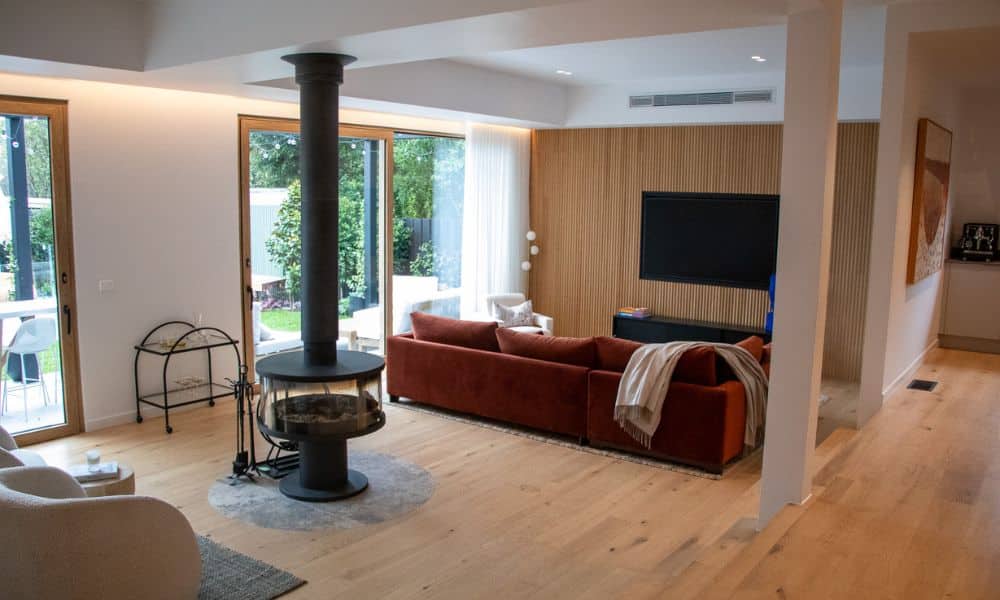
Unveiling the Elegance: House 5 on The Block 2023
Subscribe to energy matters' newsletter.
Stay up to date with the latest renewable energy news and special offers!

©2023 Energy Matters Marketplace
Site Map | Terms & Privacy | Refund Policy
Marketplace
- Retail Store
- Wholesale Store
- Learning Centre
- Monthly Specials
Information
- Free Solar Quotes
- Solar Calculator
- Recommended Products
About Energy Matters
- Why Energy Matters?
- Store Terms & Conditions
How Do Solar-Powered Boats Work? 7 Innovative Vessels That Run on Solar
Solar boats can serve ordinary functions for more sustainable transportation.
David Kuchta, Ph.D. has 10 years of experience in gardening and has read widely in environmental history and the energy transition. An environmental activist since the 1970s, he is also a historian, author, gardener, and educator.
:max_bytes(150000):strip_icc():format(webp)/professional-headandshoulders-b7be2761c16e44438607bf932fc1993c.jpg)
- Wesleyan University, University of California, Berkeley
:max_bytes(150000):strip_icc():format(webp)/ScreenShot2021-04-07at1.57.45PM-bcef177316c94cdf998457c694cce6d5.png)
- University of Tennessee
Finnbarr Webster / Getty Images
- Renewable Energy
- Fossil Fuels
When Greta Thunberg crossed the Atlantic in 2019 to address the 2019 UN Climate Action Summit, she sailed aboard the Malizia II , a racing yacht powered by hydro, solar, and sail. The Malizia II raised the international profile of powering boats with renewable, carbon-free energy.
Installing solar panels on the Malizia II and other boats is a challenge. The panels and electronic equipment can be exposed to corrosive saltwater, strong winds, and extreme weather conditions. The panels must conform to the shape of the vessel, but cannot interfere with the work of the crew. Fortunately, these are challenges that many boat owners have overcome. In a growing industry, flexible solar panels capable of being installed on a boat can cost as low as $200 . Solar power isn't just for high-end racing yachts.
One of the virtues of a solar-powered boat is its infinite range when paired with lithium-ion batteries on board, which can store the energy produced by the solar panels. Like a sailboat, a solar-powered boat never needs to make refueling stops.
Spurred on by competitions like the Solar Splash (which calls itself “the World Championship of Collegiate Solar Boating”), the Solar Boat Regatta , the Dutch Solar Challenge , and Solar Sport One , engineers and innovators in sustainable transportation have turned solar-powered boats from a novelty item on the sea to vessels that can serve many functions.
The Malizia II
Mark Lloyd/Alea / Getty Images
The Malizia II is a 60-foot (18-meter) monohull boat weighing 8 tonnes. It was launched in Monaco in 2015. While it has participated in a number of races and regattas, it is best known for transporting Greta Thunberg to the United Nations Climate Action Summit in 2019. But it was built for racing—capable of speeds of up to 25 knots, it is one of the fastest boats of its class.
The Solliner
The Solliner is a line of small catamarans meant for day boating, from Green Dream Boats . At 21 feet (6.2 m), it can accommodate up to 10 people in a U-shaped seating area. They are fitted with four solar panels that allow for navigation without the need for an outside energy source. They can sail at up to 12 km/hr. Solliner boats have been seen around the world, such as the one pictured here in Poland. In the United States, they are sold by Infinity Solar Boats.
Samarjitbharat / Wikimedia Commons / CC BY-SA 4.0
The Aditya is India's largest solar boat and the world's first solar-powered ferry. Carrying approximately 1,700 passengers per day , it is 30 times cheaper to run than the diesel ferry it replaced. In 2020, it won the Gustave Trouve Award for Excellence in Electric Boats and Boating, an international award. The Indian state of Kerala, which commissioned the Aditya , plans on replacing the entirety of its diesel fleet with solar ferries. The Aditya is a 20-meter-long catamaran ferry boat made from glass-reinforced plastic with photovoltaic panels on its roof. It seats 75 passengers at a time.
The Interceptor
The Interceptor sounds like a racing boat, but it is a 24-meter (78 ft) solar-powered barge whose role is to intercept 50 tons of trash a day from Malaysia's rivers—most of it plastic that would otherwise reach the sea. The Malaysian Interceptor is one of a series of Interceptors created by The Ocean Cleanup , the largest effort to remove plastic waste from the oceans, 80% of which stems from 1,000 of the world's rivers. Other Interceptors are (or will be) stationed in Indonesia, the Dominican Republic, and Vietnam.
MS Tûranor PlanetSolar
Pascal Le Segretain / Getty Images
A 31-meter catamaran, the MS Tûranor PlanetSolar is the world's largest solar boat and the first to sail around the world. On its round-the-world voyage, it sailed at an average speed of 5 knots—not racing yacht speed, to be sure, but to be expected from a 6-meter-wide scientific research vessel weighing 89,000 kg (nearly 100 tons), 8.5 tons of which are lithium-ion batteries stored in the ship's two hulls. It was launched in 2010.
The 537 square meters of solar panels are sturdy enough to be walked on, and provide electricity stored in 6 blocks of lithium-ion batteries, allowing the Tûranor PlanetSolar to travel over 60,000 km (37,282 m) in 584 days without fuel stops.
The Ecowave
The Ecowave ( Ecowolna ) is Russia's first solar-powered catamaran. In 2018 it conducted a scientific expedition to explore the potential for solar-powered trams for the Neva, Oka, and Volga rivers. Launched from St. Petersburg, the Ecowave expedition covered more than 5,000 km (3,106 m) over 90 days, traveling the Black and Caspian Seas as well as major rivers of Russia. The catamaran is 11.6 metres long.
The solar panels cover an area of solar panels is 57 square meters (613 sq ft) and are capable of producing 9 kW of power. Lithium-ion batteries allow the vessel to sail for 20 hours without recharging.
While apparently no longer plying the waters of the Lot river in France, the Kevin was a solar-powered hotel boat that offered river cruises focused on sustainable river tourism. Calling his converted barge “ the first solar boat-hotel of the world ,” owner Dominique Renouf launched Kevin in 2011. The vessel was 97 feet (29.50 m) long, equipped with a solar water heater, and able to accommodate 14 overnight passengers in 6 cabins.
4FR / Getty Images
Solar-powered boats can be as humble as tour boats on Turkey's Lake Eğirdir or on Lake Altaussee in the Austrian Alps. Like ferries, tour boats are ideal candidates for solar power, as their regular routes allow for batteries to be sized with enough electricity to power voyages of days when the sun isn't shining.
Solar boats have barely entered the mainstream boating market, but the technology is within the financial reach of most boat owners, as the cost of solar panels has dropped precipitously over the past decade. Any boat with a large-enough surface exposed to the sun can attach solar panels to it, and with a little wiring and (optionally) battery storage, infinite sailing is an increasingly affordable possibility.
" Largest Solar-Powered Boat Completes Around the World Voyage ." Guinness Book of World Records , 2012.
- What Is Greener? Boat vs. Plane Emissions
- Best of Green Awards 2021: Eco Tech
- Best of Green Awards 2021: Sustainable Travel
- The 7 Best Solar-Powered Generators of 2024
- How Do Solar Panels Work?
- What Are Solar Trees? How Do They Work?
- What Are Solar Shingles? How Do They Work?
- Solar Ovens: What Are They? How Do They Work?
- How Do Solar Windows Work?
- Do Solar Panels Work on Cloudy Days? At Night?
- Do Solar Panels Work When It Snows?
- How Do Solar Lights Work? Types, Uses, and Environmental Impacts
- Solar Water Heaters: What You Should Know
- How Does Solar Battery Storage Work?
- What Is Passive Solar Heating? How It Works and Limitations
- What Is Solar Charge Controller? Do You Need One?
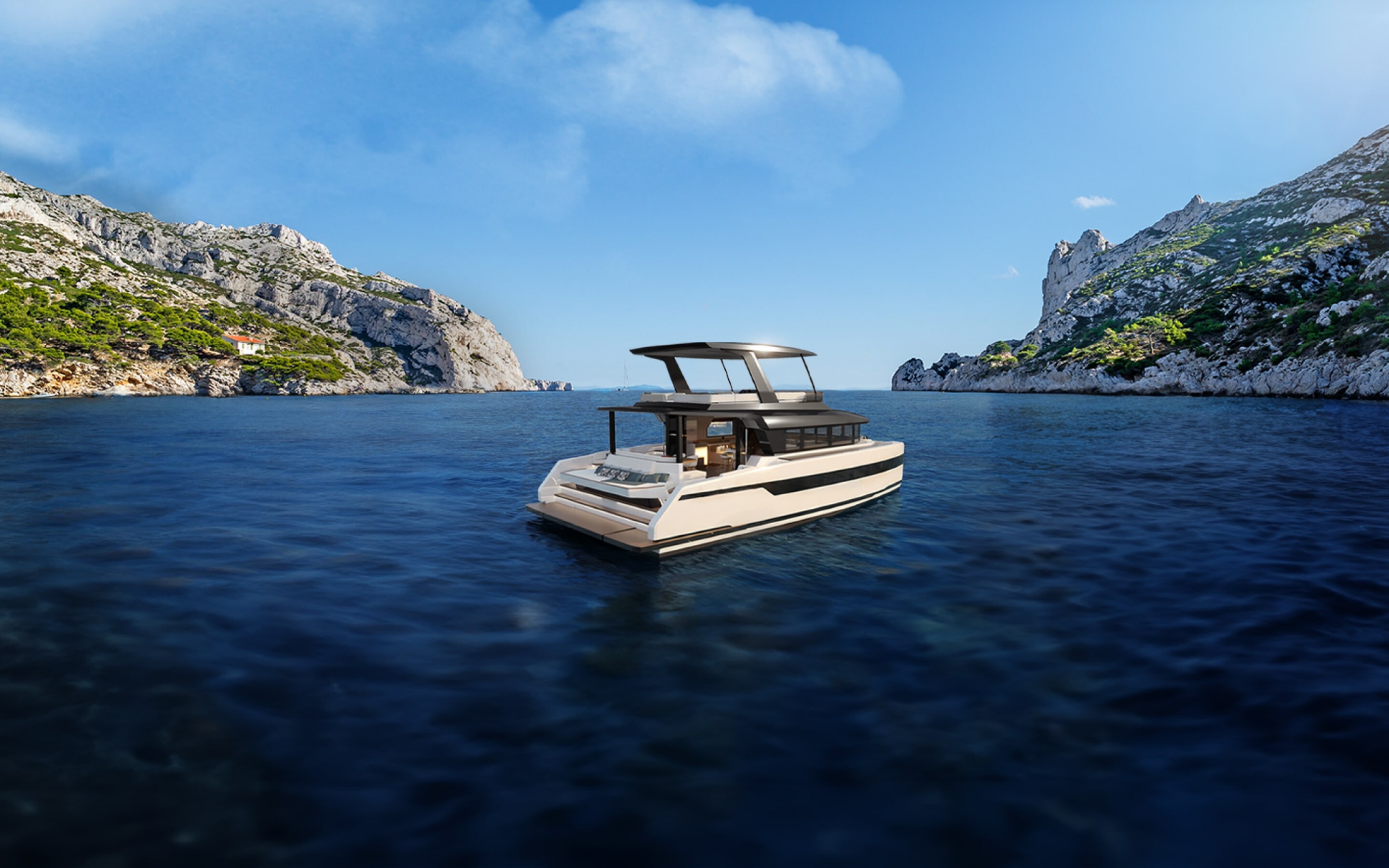
Solar electric motor yachts

Embark on a slow cruising
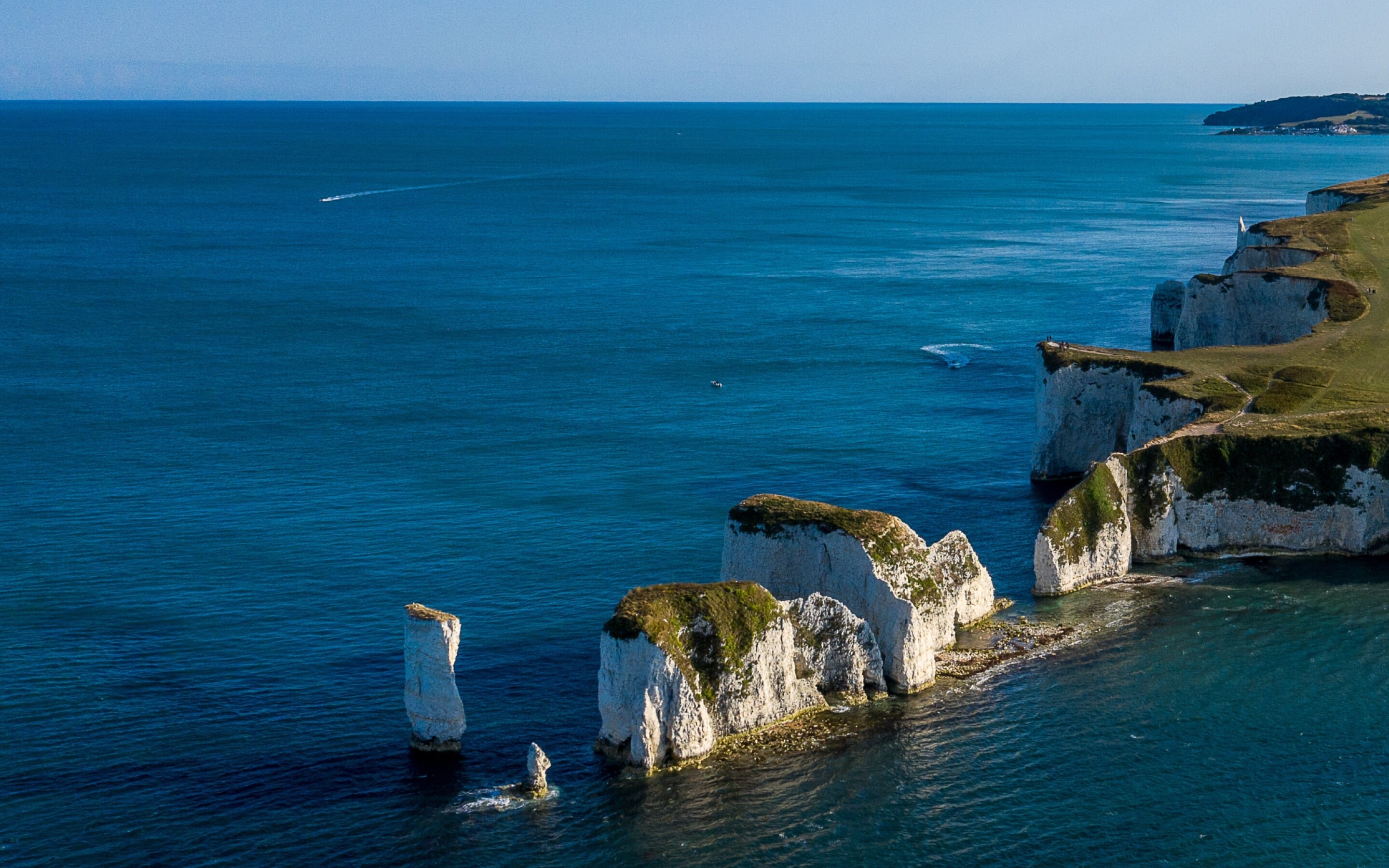
Sailing with Whisper Yachts in 2024
- Full autonomy
- Solar electric energy
- Luxury design
Whisper Yachts embarks the best of technology aboard solar-powered yachts designed to be both in harmony and respect with the sea.
Whisper Yachts offers an exclusive 50 ft luxury yacht powered by green energy that provides a way of sailing more handy, comfy and eco-friendly.
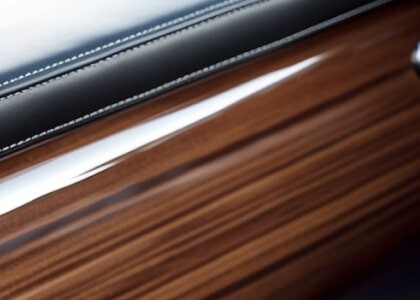
The perfect balance between luxury and sustainability
A new way of exploration, bring innovative and environmental solutions to sea navigation.

Green technology
Whisper Yachts is constantly innovating and adapting its products to push back the limits of responsible navigation, placing respect for seas and oceans at the heart of their concerns.
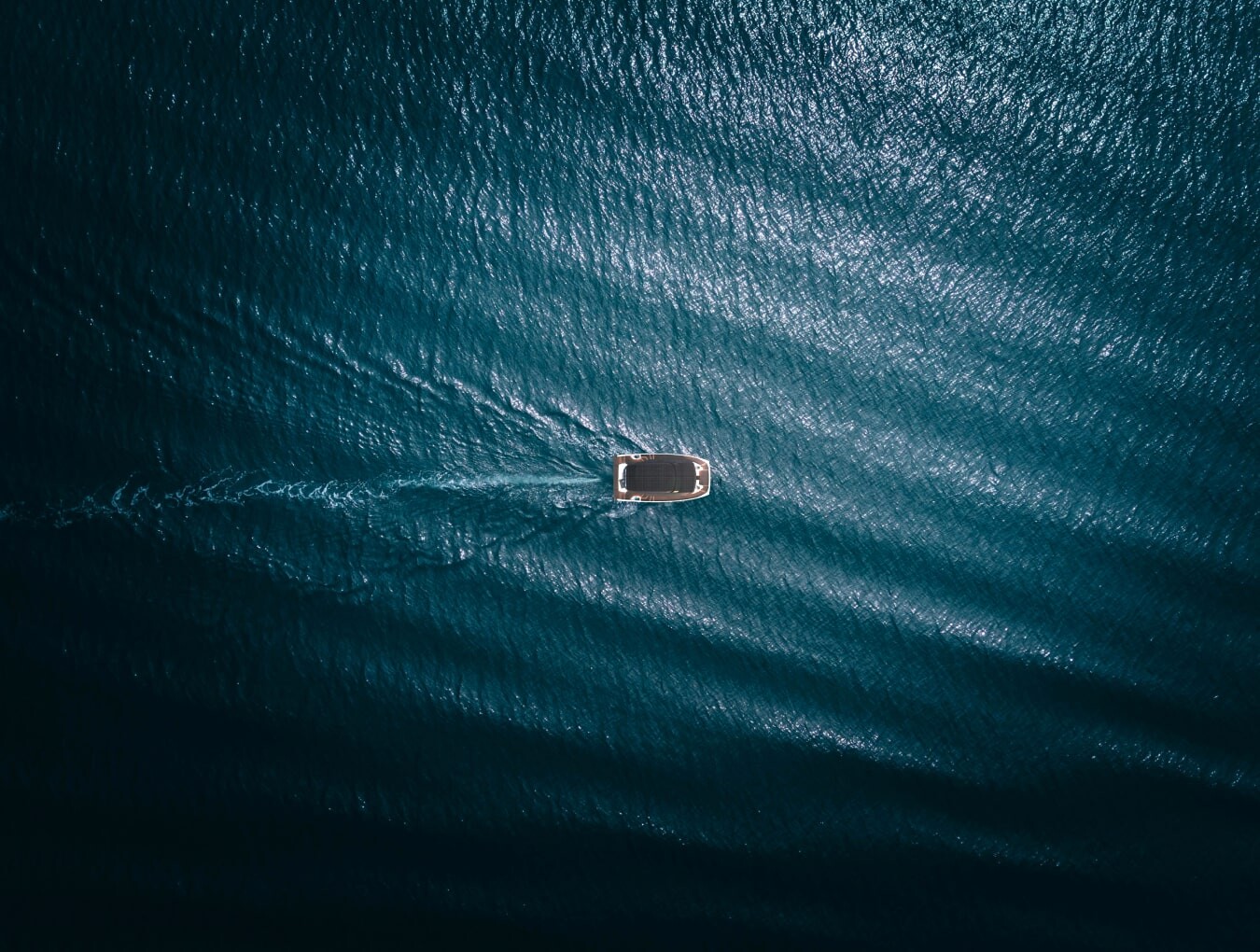
Slow cruising
With Whisper Yachts, reveal your pioneering spirit. Enjoy a sense of belonging in the middle of the immensity, delight the beauty of the oceans without damaging them.
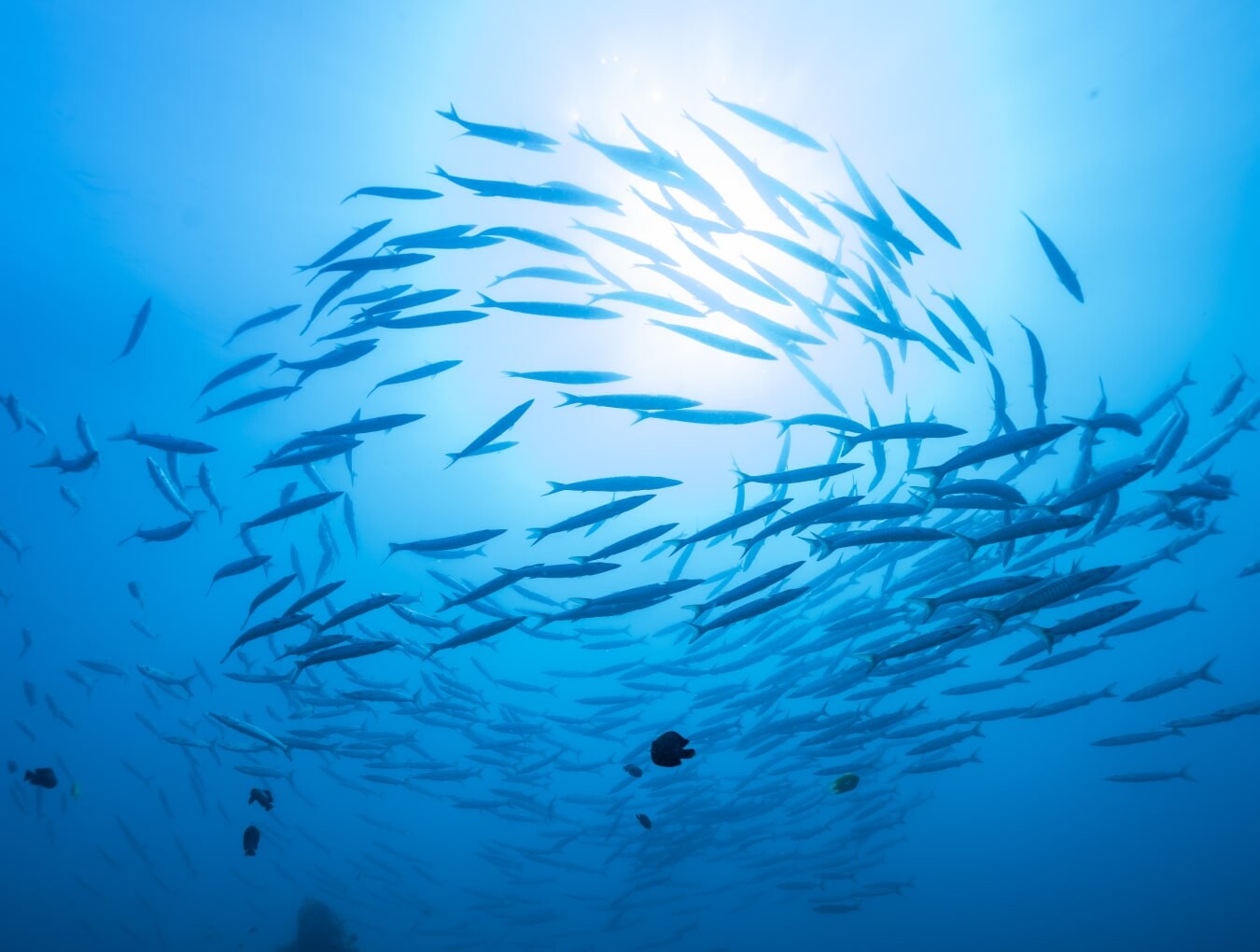
Respect of the seas
Whisper Yachts reduces the carbon impact on the environment by 90% and is working to reduce to 100%.
Sustainable by nature, the design team is committed to always selecting sustainable materials without compromising quality.

Whisper Yachts offers a range of green energy luxury yachts with 100% solar electric motor yachts that provide a way of sailing more handy, comfy and eco-friendly.
Whisper Yachts exists to bring sustainable and environmental solutions to sea navigation.
Whisper Magazine
The latest from whisper yachts' world.
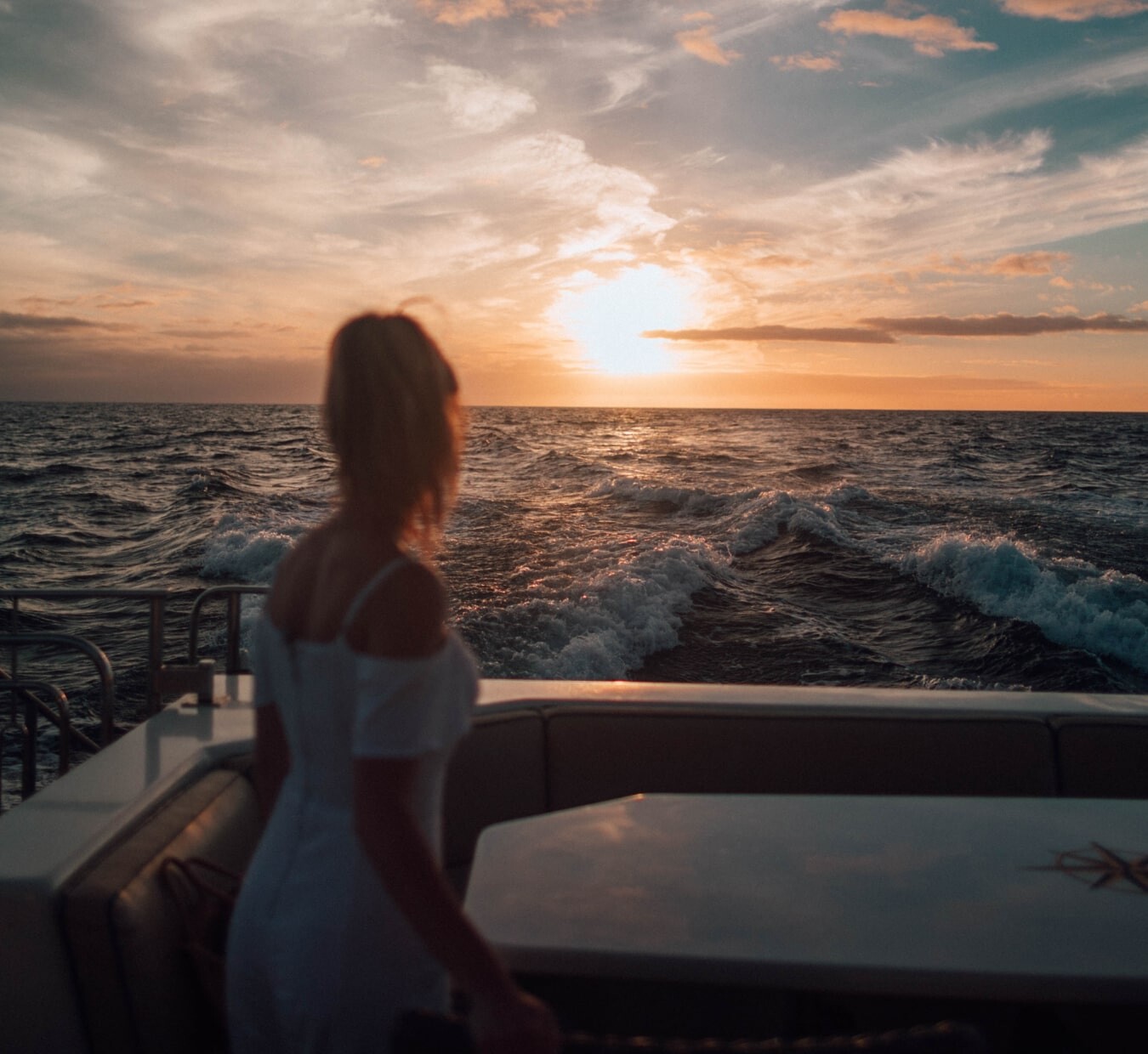
- Environment
- Green energy
In this time of reflection and renewal, Whisper Yachts invites us to welcome 2024 with a resolution that transcends the traditional, by personally committing to the preservation of our planet. This commitment takes the form of an unparalleled sailing experience aboard their solar electric yachts, a perfect fusion of luxury, technology, and ecological awareness.

- Exploration
Returning to nature, an escape from contemporary chaos
In a world where every second counts, where the incessant notifications from our devices constantly remind us of our duties and responsibilities, the anxiety of immediacy has become a tangible reality. Crowded streets, ever-present screens, and the breakneck pace of modern life have created a stifling atmosphere, leaving little room for serenity and contemplation. The relentless waves of often alarming information overwhelm us, leaving us in search of a sanctuary, an escape.
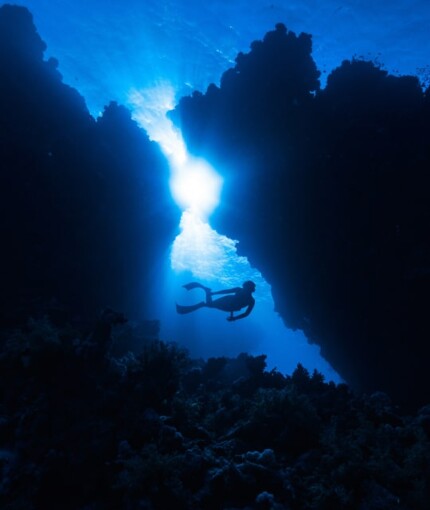
Merging luxury with ocean conservation
Since the earliest days of terrestrial existence, the oceans have been the stage for an eternal dance of life. These vast expanses of saltwater, stretching as far as the eye can see, witnessed the birth of the first life forms and have been the silent observers of the evolution of millions of species. These deep and mysterious seas have inspired countless legends, myths, and tales of adventure, reflecting the fascination and reverence they educated humanity.
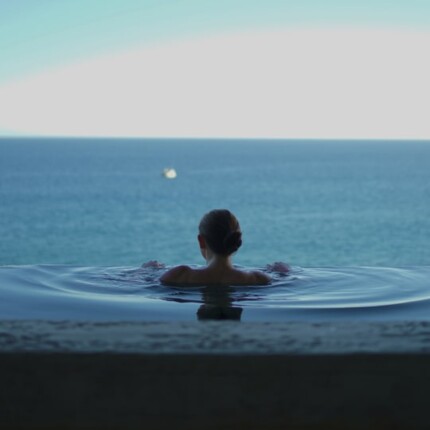
Where modularity meets opulence
Your yacht, a symbol of luxury and innovation, is equipped with the latest technologies, offering you an unparalleled sailing experience. But what about tomorrow, when the technology will so much improve that you will dream of having it onboard ?
The Whisper Yachts are designed to be able to easily upgrade all high tech equipment when you decide so.
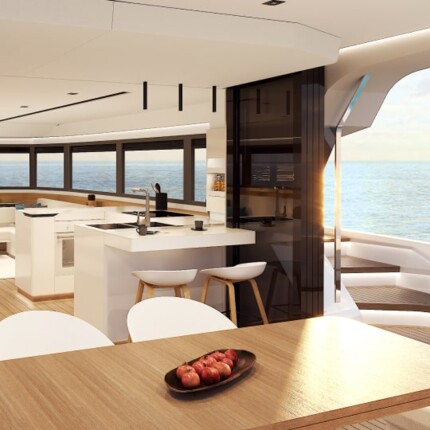

Redefining luxury with innovation and design
Embark now on this symphony of the sea, where each voyage aboard a Whisper Yachts becomes an ode to grace, elegance, and the poetry of sailing. With Guy Marchal, Symphony Marine, Berret Racoupeau Yacht Design, and the innovative vision of Torqeedo, let yourself be carried away to a new horizon, where dreams and reality merge in perfect harmony upon the glistening waters.
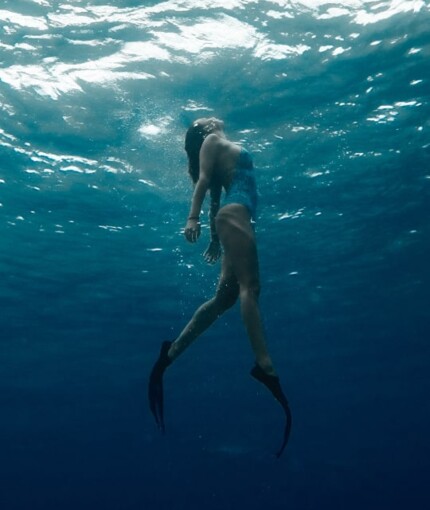
Reconnect yourself with the sea
Picture an escape, a glimmer of hope. Imagine gliding silently over azure seas, under an endless sky, aboard a luxurious catamaran. Whisper Yachts invites you to this retreat, to the experience of slow cruising, a journey where every moment is cherished.
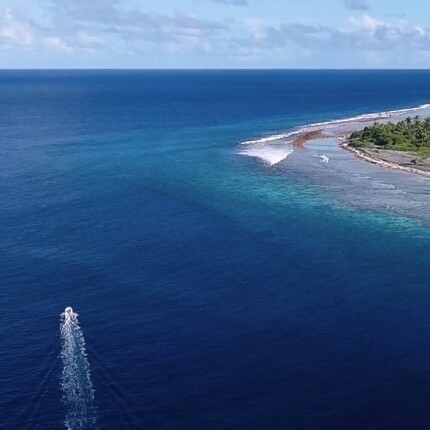
The poetic journey of eco-responsibility with slow cruising
In the azure expanse of the nautical realm, a quiet revolution is taking shape on the horizon. A new era is unfolding, intertwining eco-responsibility, the rise of solar electric motor yachts, as Whisper Yachts, and the refined art of slow cruising.
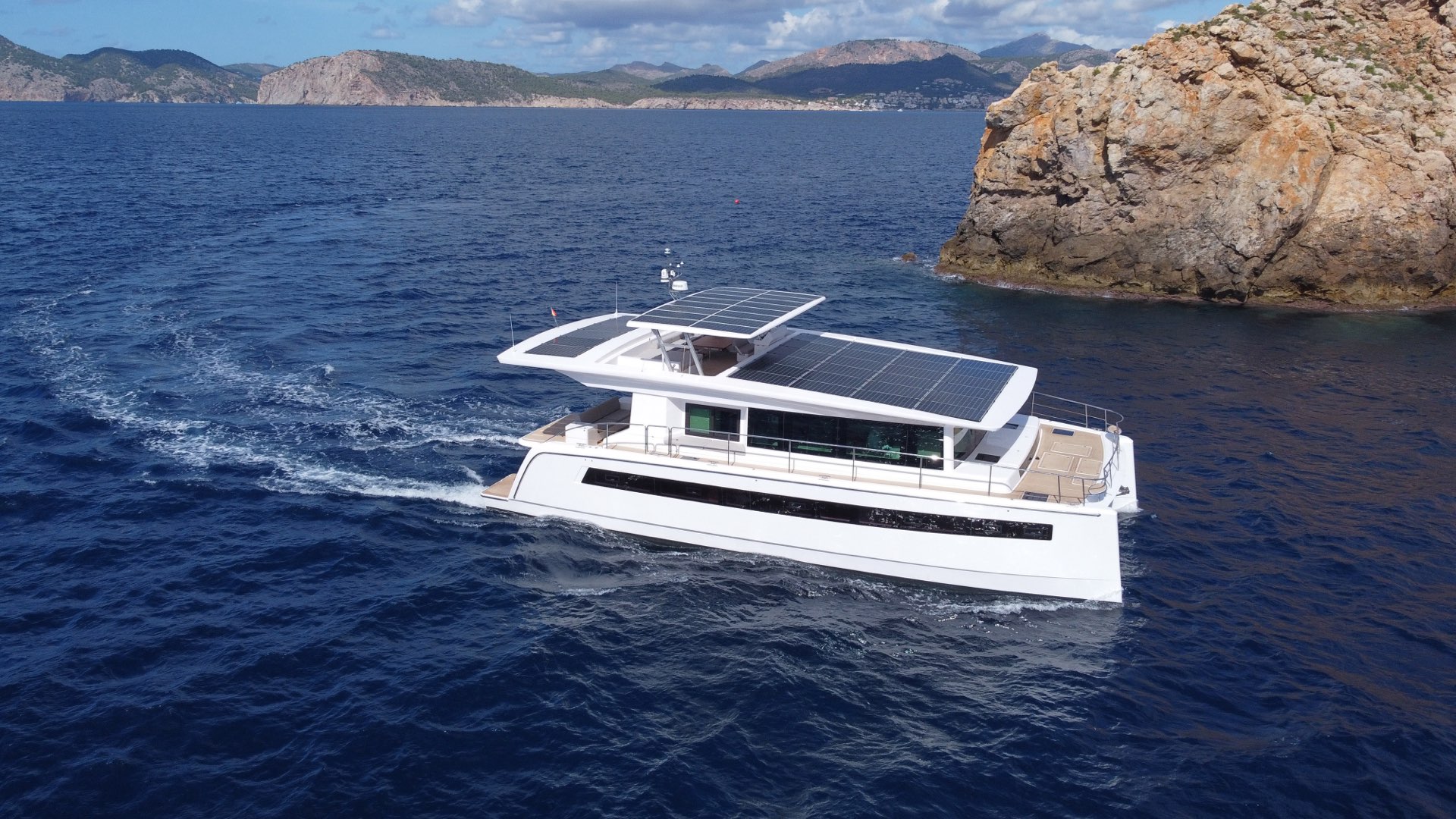
Silent Yachts
Creators of the world’s first series produced, solar-powered electric yachts.
Unlimited Range
Noiseless cruising, zero emission, minimal maintenance, pioneering solar powered yachting since 2009.
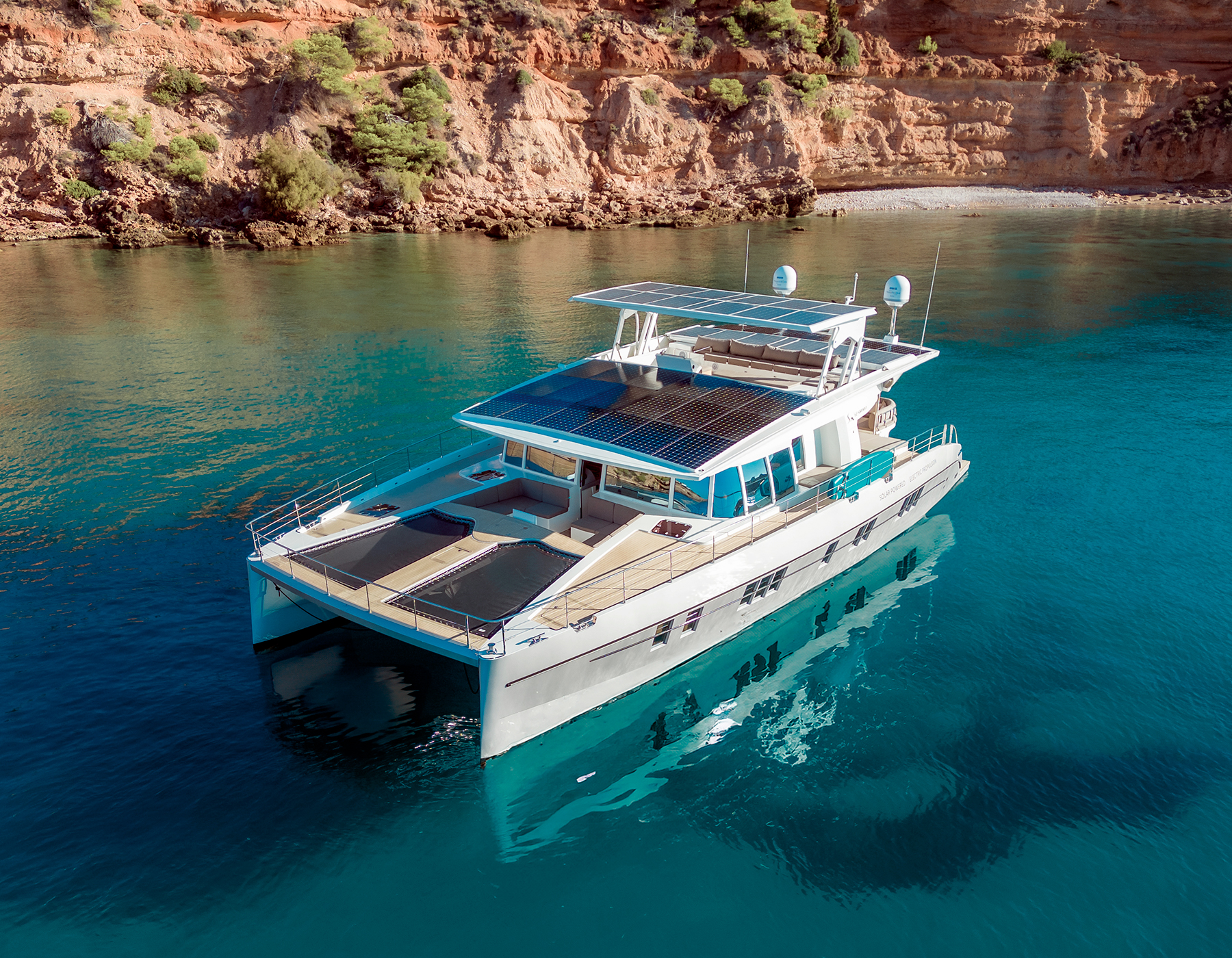
The Original Solar Yacht
As the original inventors of series produced solar-electric yachts, we pioneered this innovative approach. Our first model, the Silent 64, was launched to the market in 2016, several years before any other shipyard considered the possibility of going electric.
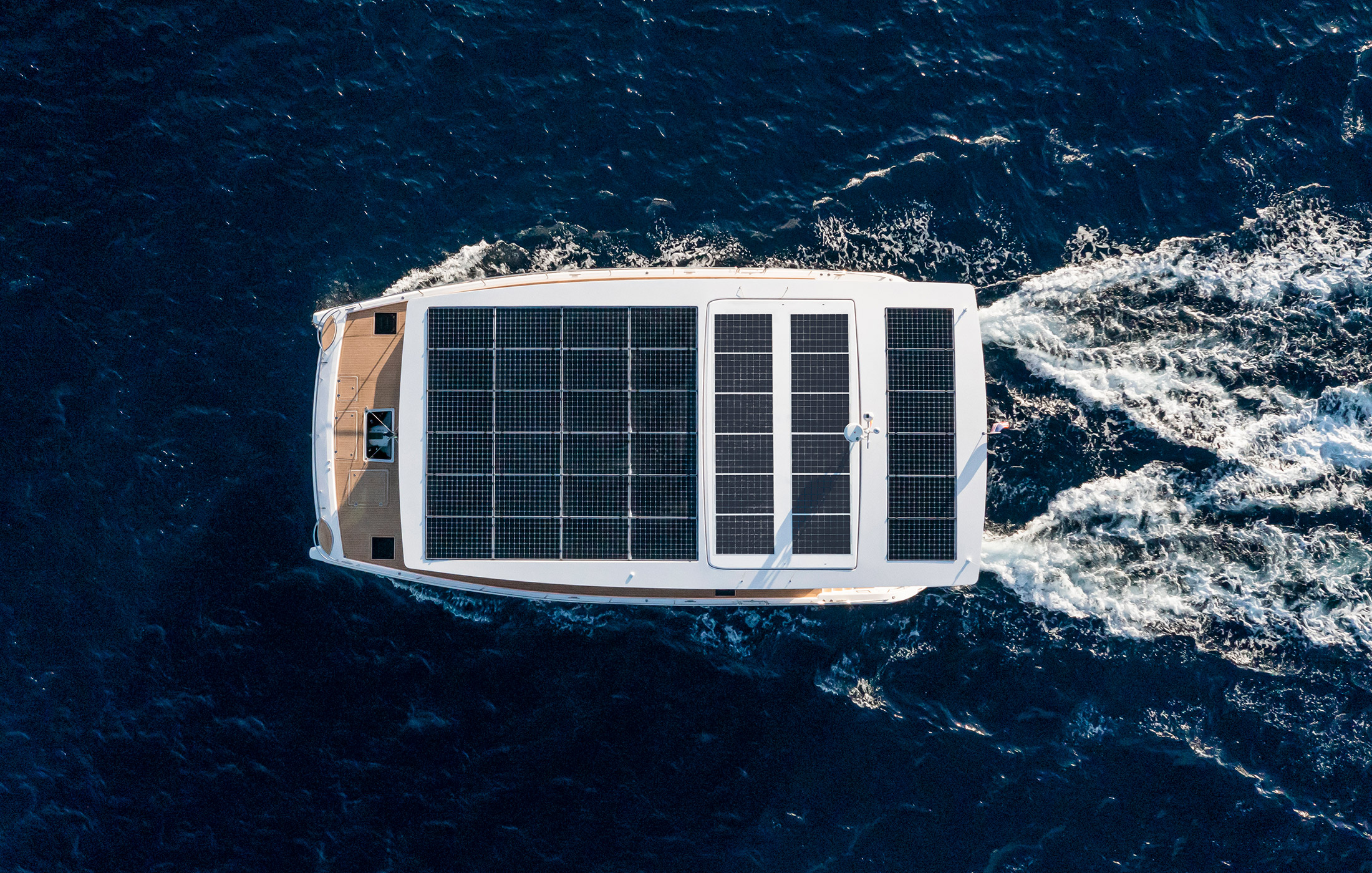
Leading Technology
Our founders began to research alternative energy sources to power yachts during the mid 1990s. Today, the technology of our in-house developed solar-electric drivetrain has been perfected and is multiple generations ahead in terms of reliability, performance and efficiency.
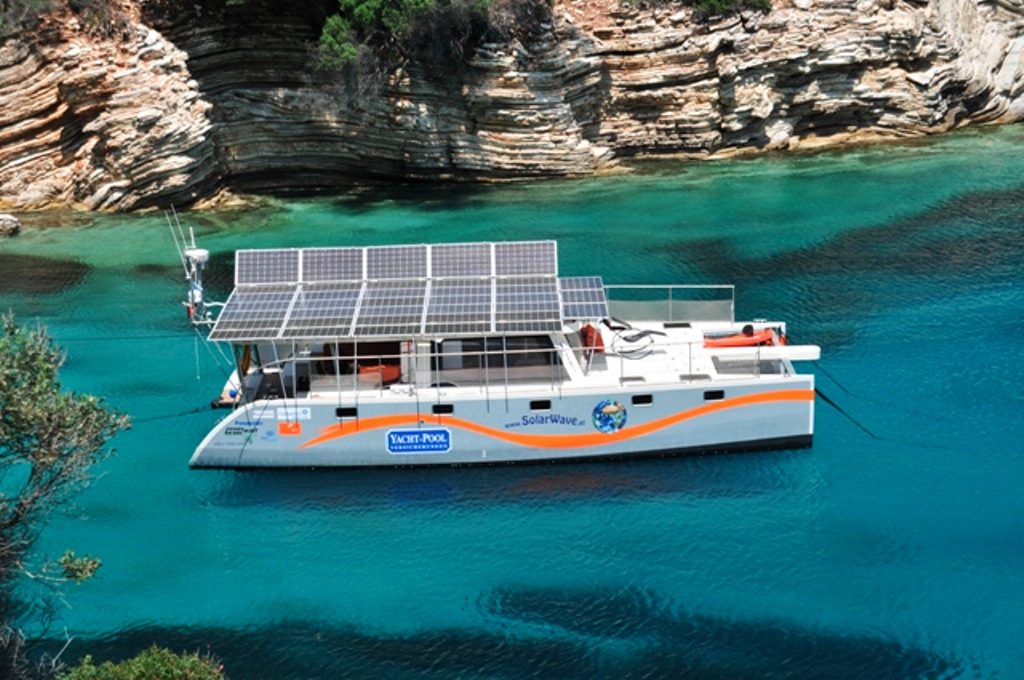
Historical Track-Record
In 2009, the Solarwave 46 was launched as our first prototype of a fully solar-electric, self-sufficient ocean-going catamaran. Since then, our electric yachts have cruised many 10.000s of nautical miles, performing flawlessly during a variety of weather conditions.
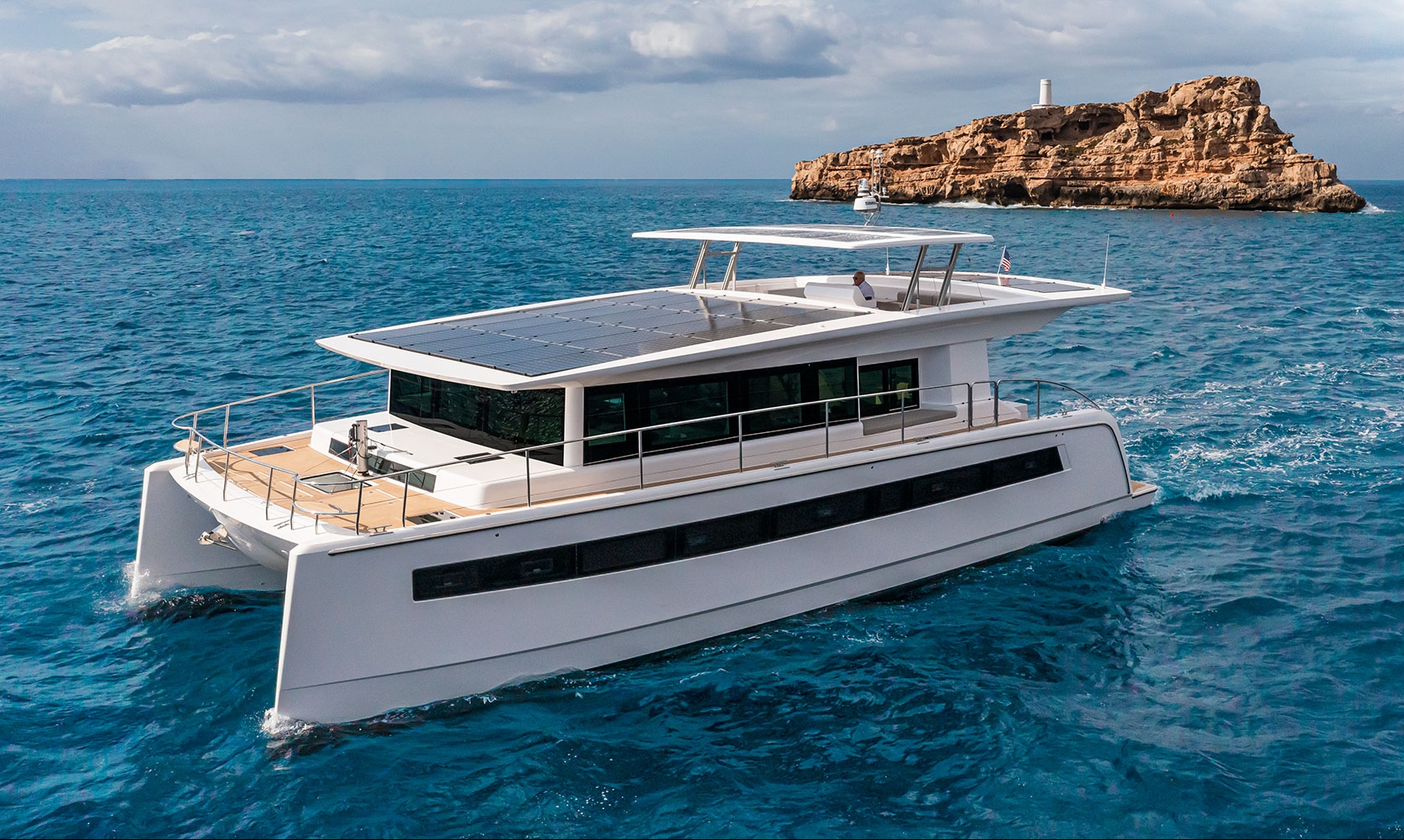
Enabling Self-Sufficiency
What differentiates a Silent is the unprecedented level of autonomy provided by our yachts. Being able to produce your own energy enables a fully self-sufficient lifestyle on board. Travel the oceans sustainably while making them your infinite playground.
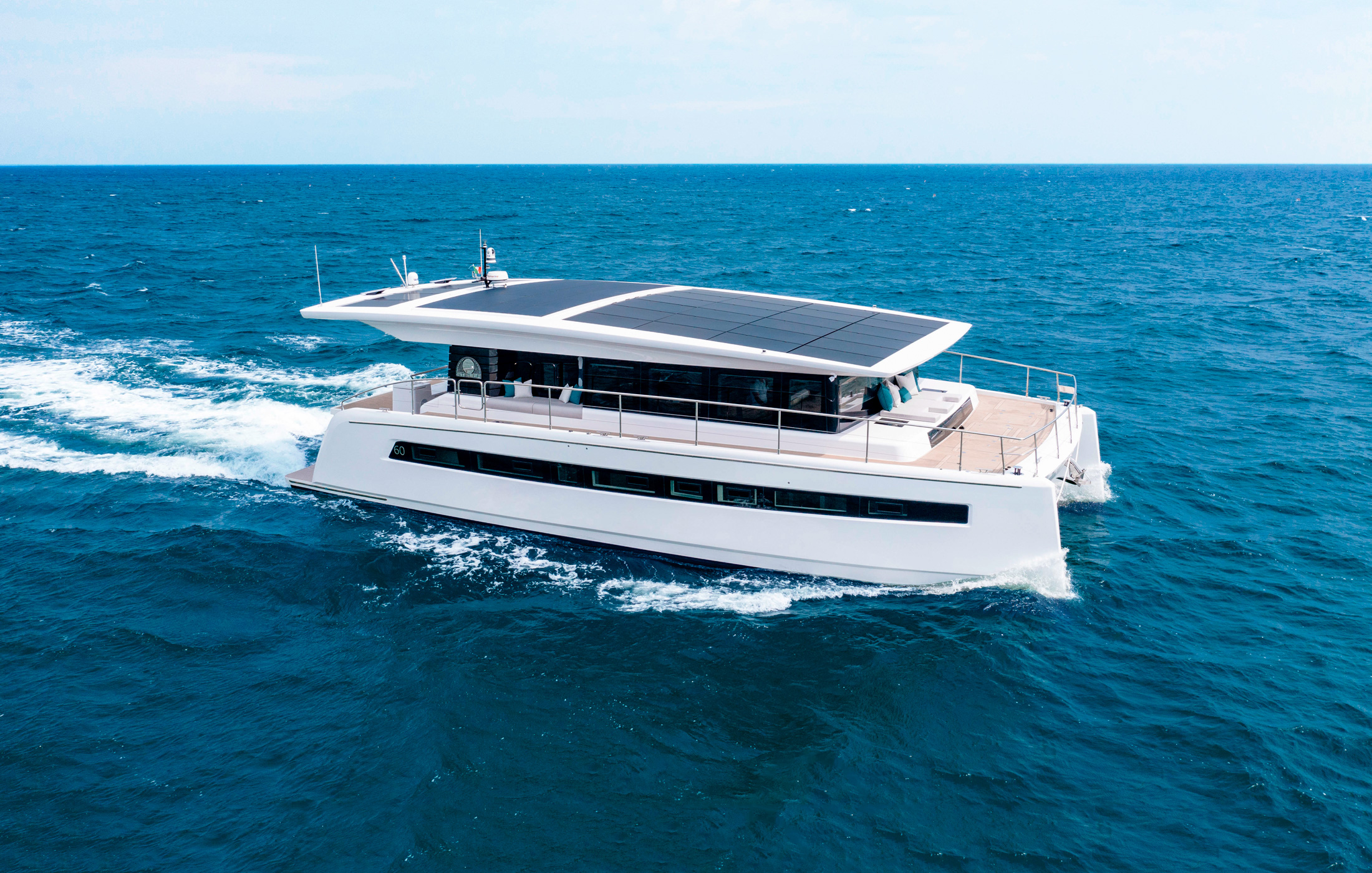
The award-winning entry to solar-electric yachts.
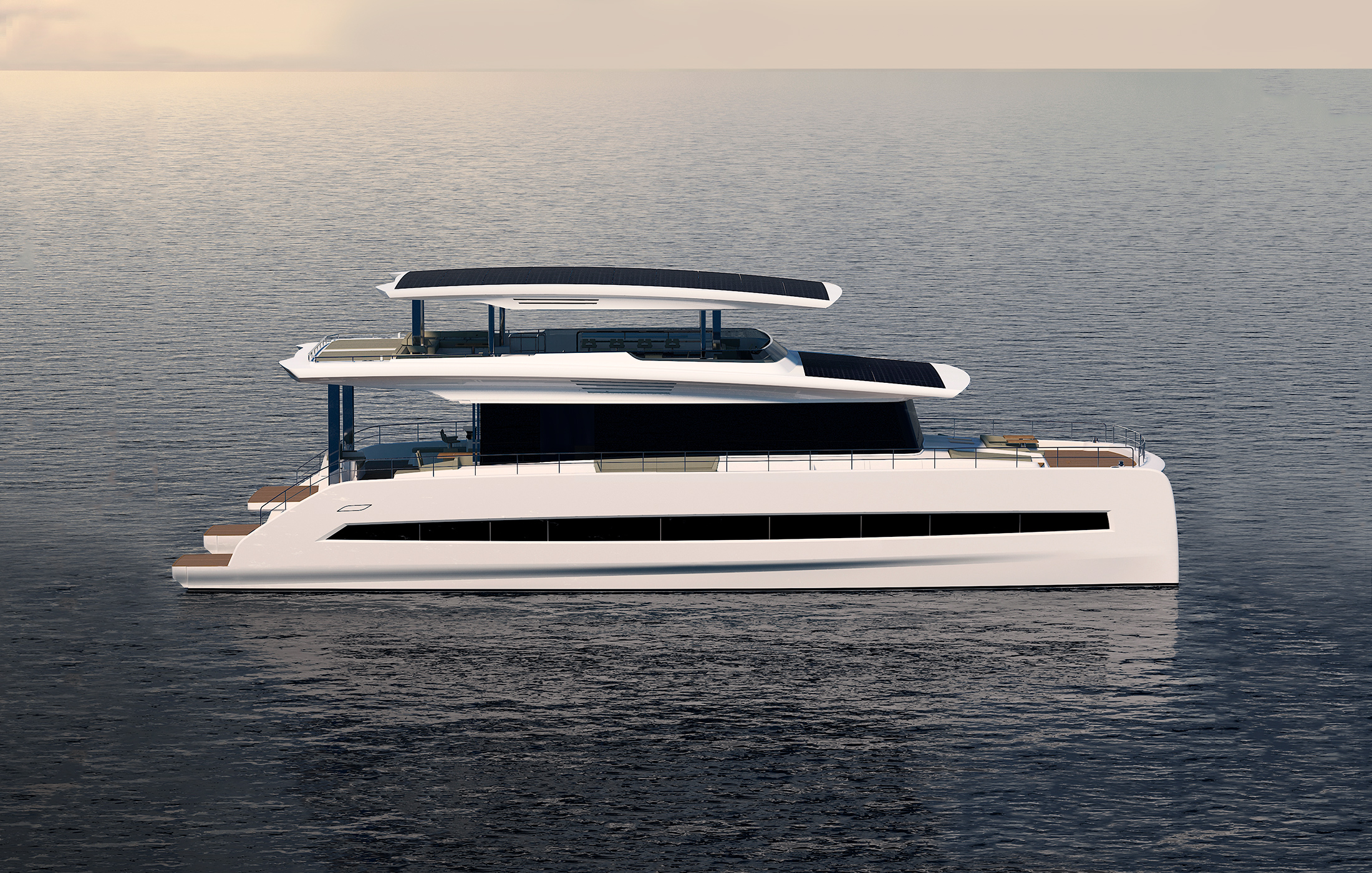
Timeless design meets state-of-the-art technology.
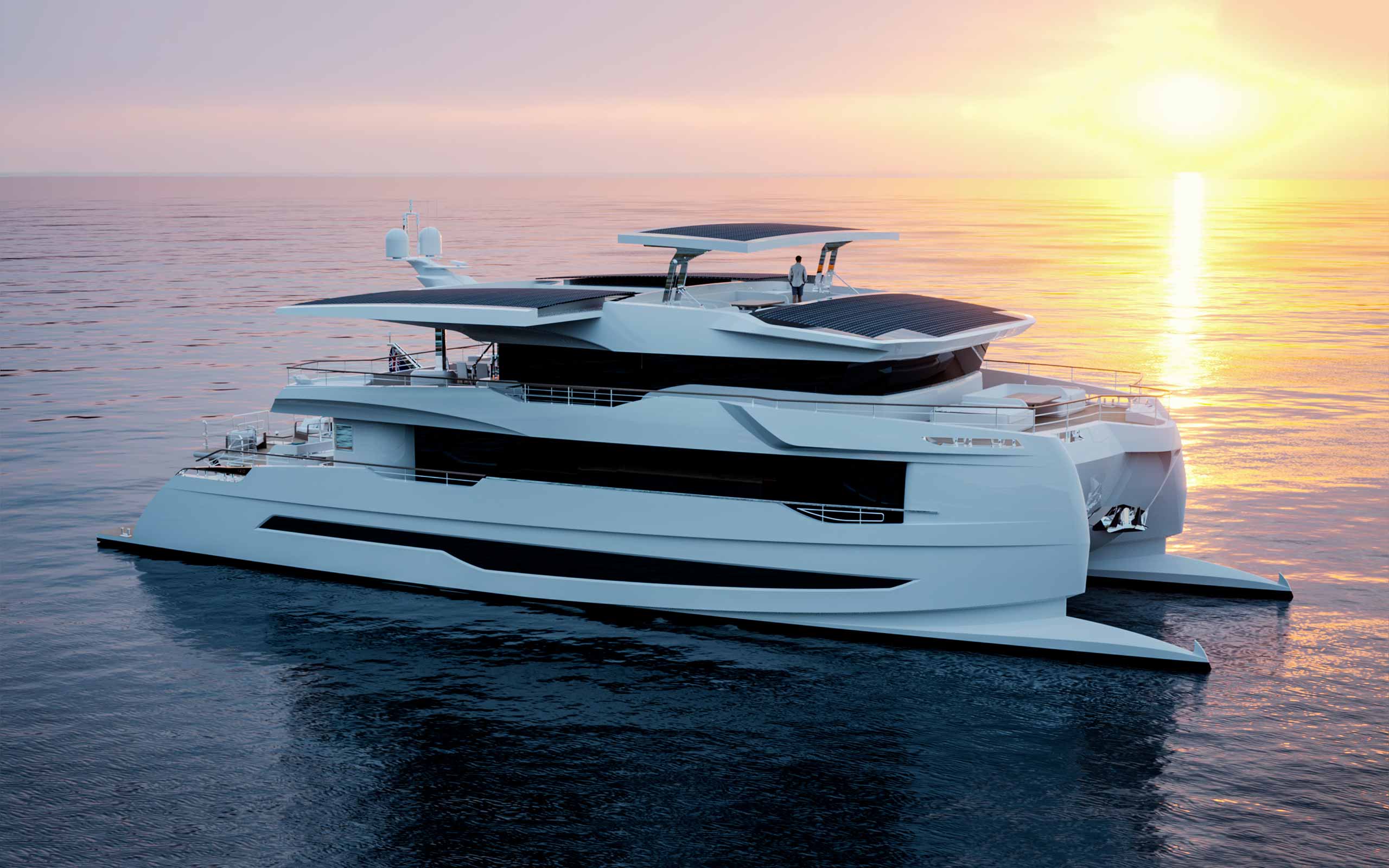
120 Explorer
The boldest expression of solar powered yachting yet.
What Makes Us Unique
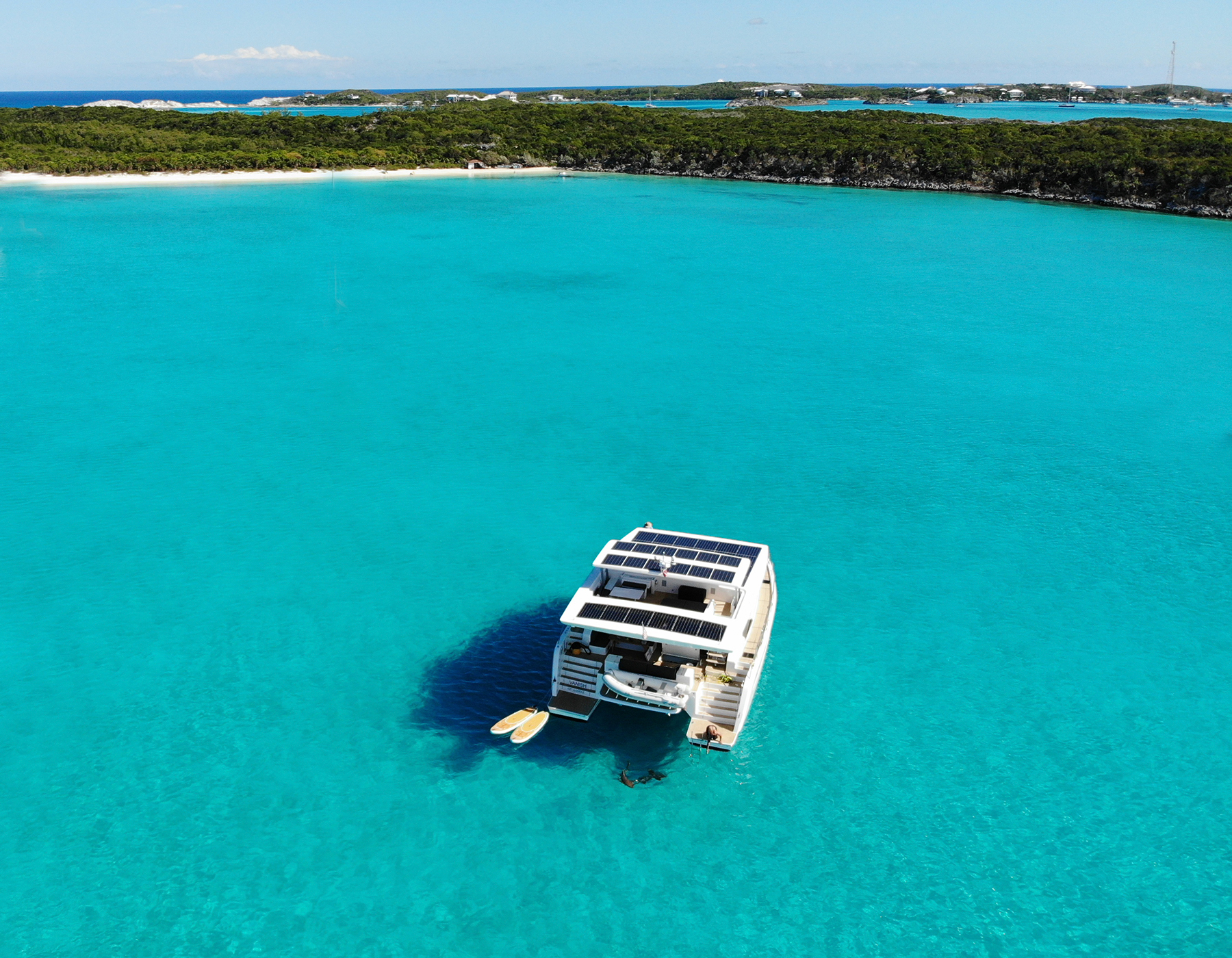
The tranquility on board of our yachts is unique. A lack of noise, fumes and vibrations create a deep connection with the sea. Luxury and sustainability finally merged into a holistic experience, working hand in hand with nature by minimizing the impact on the marine environment without compromising comfort.
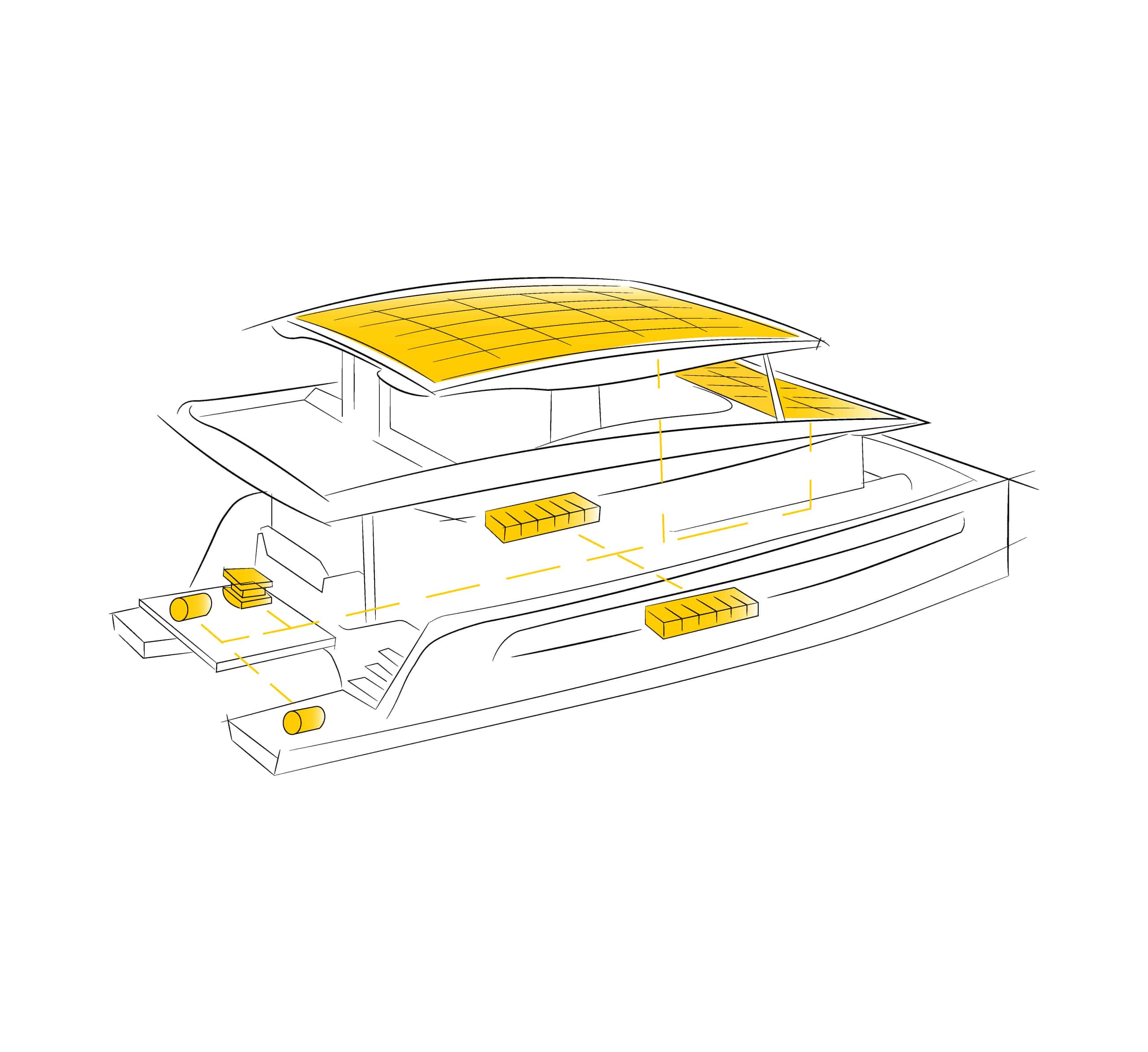
For optimal performance and efficiency, our solar-electric drivetrain integrates seamlessly with all onboard systems. Compared to fossil fuelled powertrains of motoryachts, electric powertrains have very few moving parts, resulting in minimal maintenance, maximum reliability and significantly lower running costs.
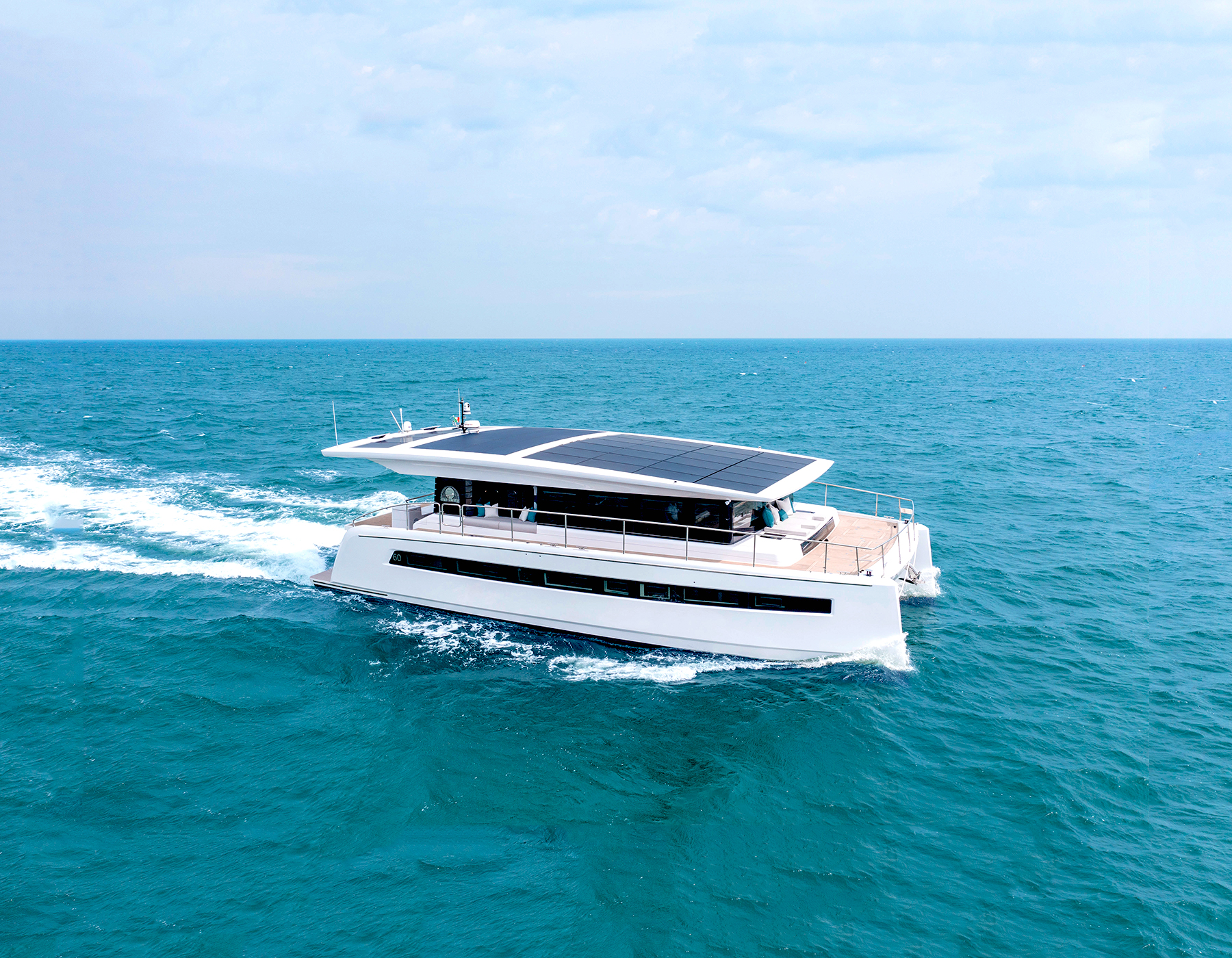
The ability to recharge your own batteries with the sun marks a new era of freedom. Depending on cruising speeds and weather conditions, a Silent has virtually unlimited range, enabling you to live a fully self-sufficient lifestyle on board. Unbound by the limitations of fossil fuels, you are free to explore the horizons.
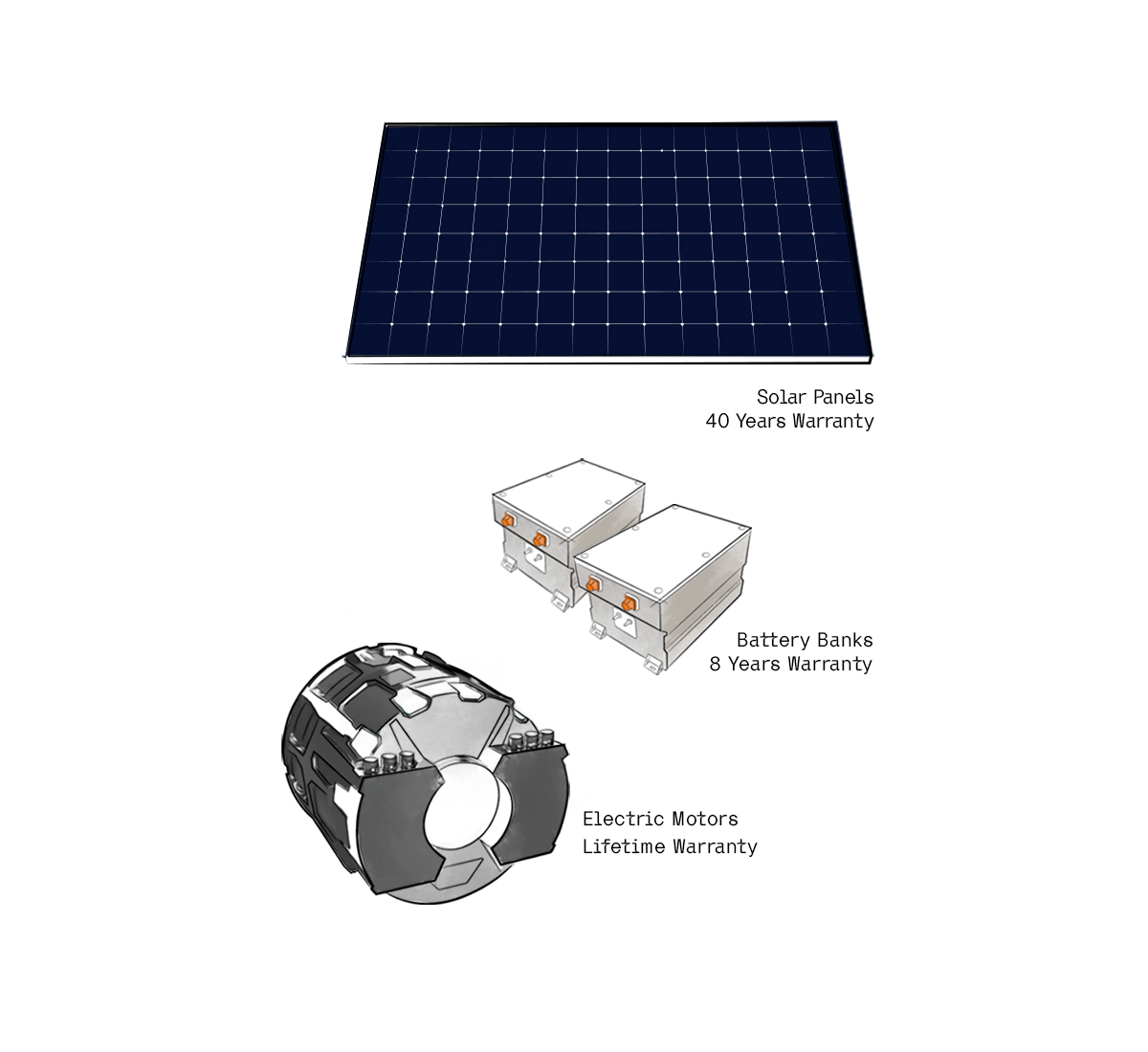
The technology powering our yachts today has been pioneered by our founders almost three decades ago. Continuous upgrading and steady optimization of the entire system are some of the key reasons our in-house developed solar-electric drivetrain offers a comprehensive portfolio of assurances and warranties.
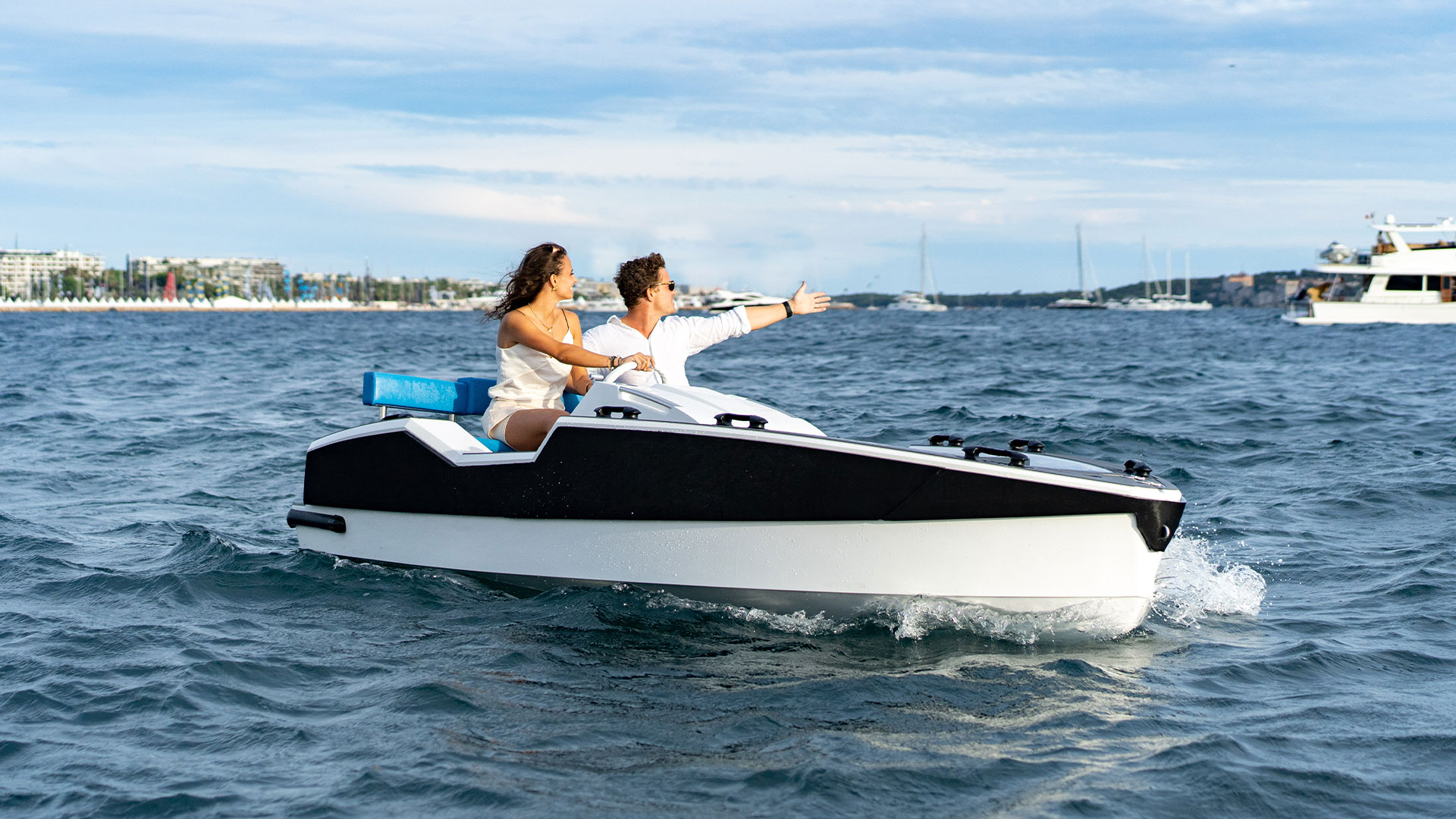
Powered by an advanced jet propulsion system, the fully electric Tender Series perfectly complements the experience on board of our catamarans. Following the same philosophy as our electric yachts, it was developed with a strong focus on being spacious, lightweight and efficient.
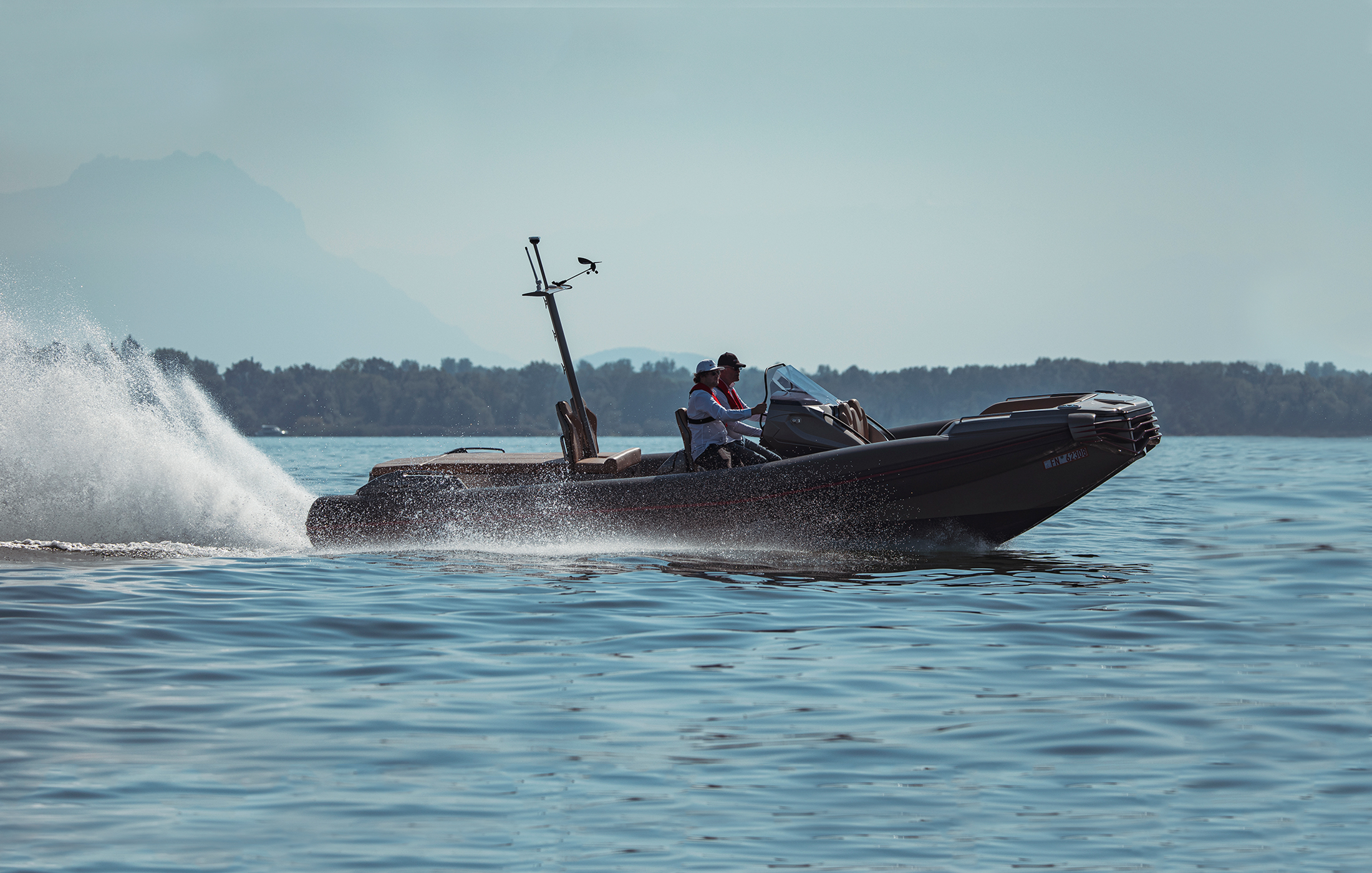
As a new breed of Silent, the Speed 28 combines futuristic design with blistering pace. Her high-performance drivetrain is supported by triple foils and embedded solar cells on the hardtop. Advanced hydrodynamics and latest AI management make for a stable ride which always remains comfortable.
Why Silent Yachts
A sensible approach to yachting which works in self-sufficient harmony with nature and creates a completely new experience on board.
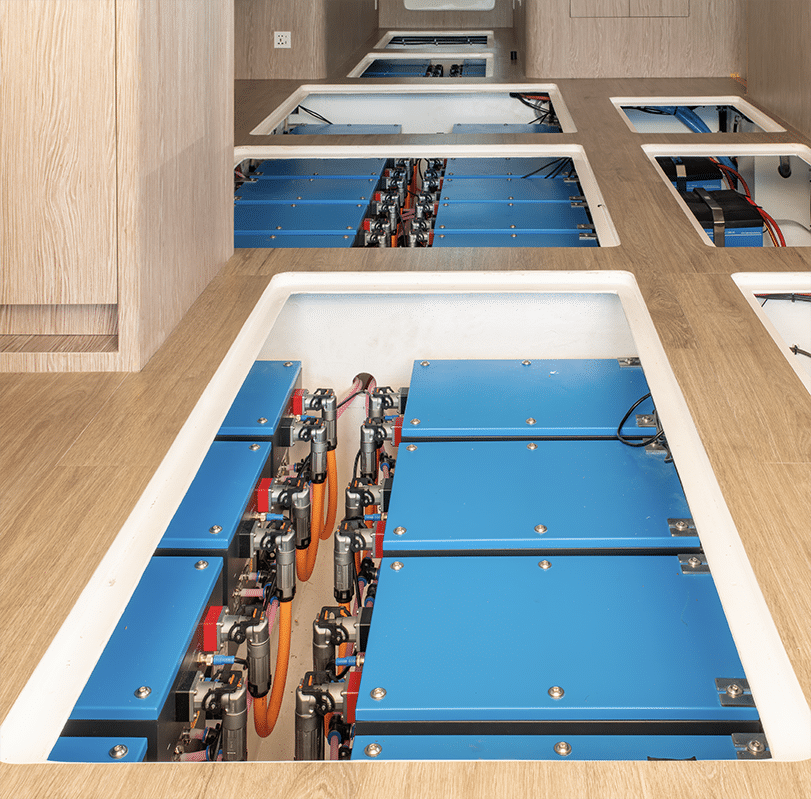
New Silent Drivetrain
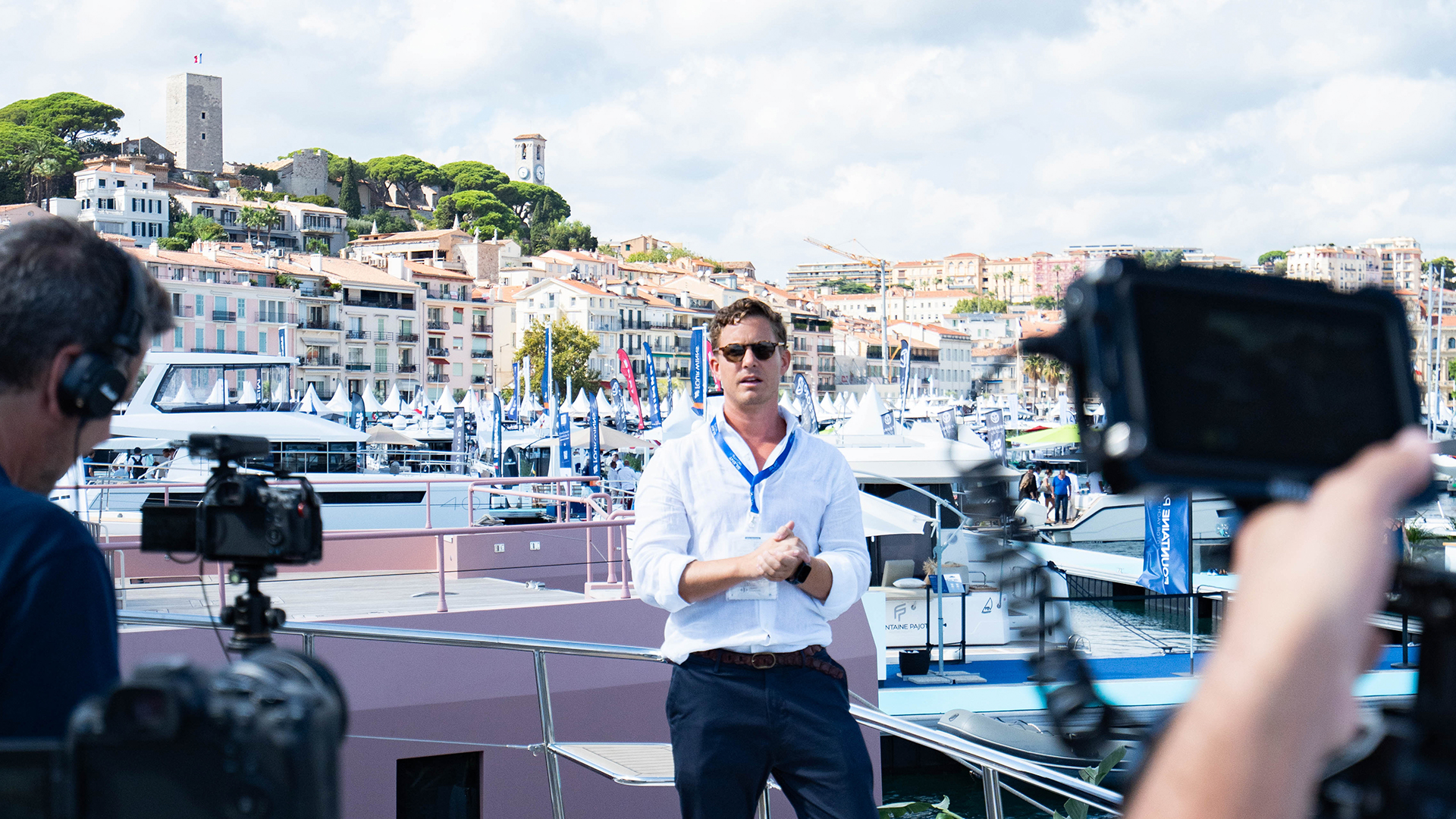
Tech shorts 2023
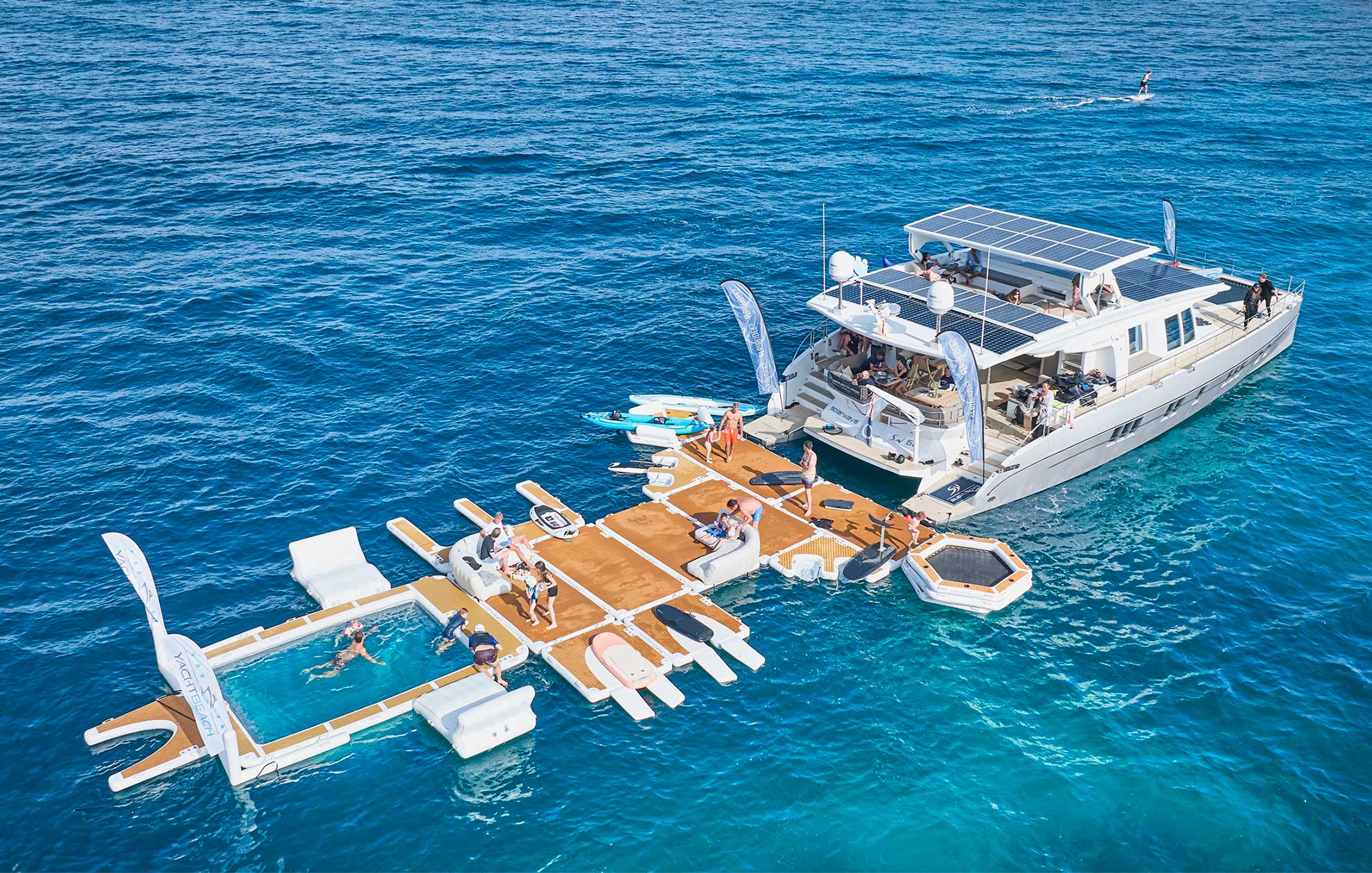
Electric power event on the water
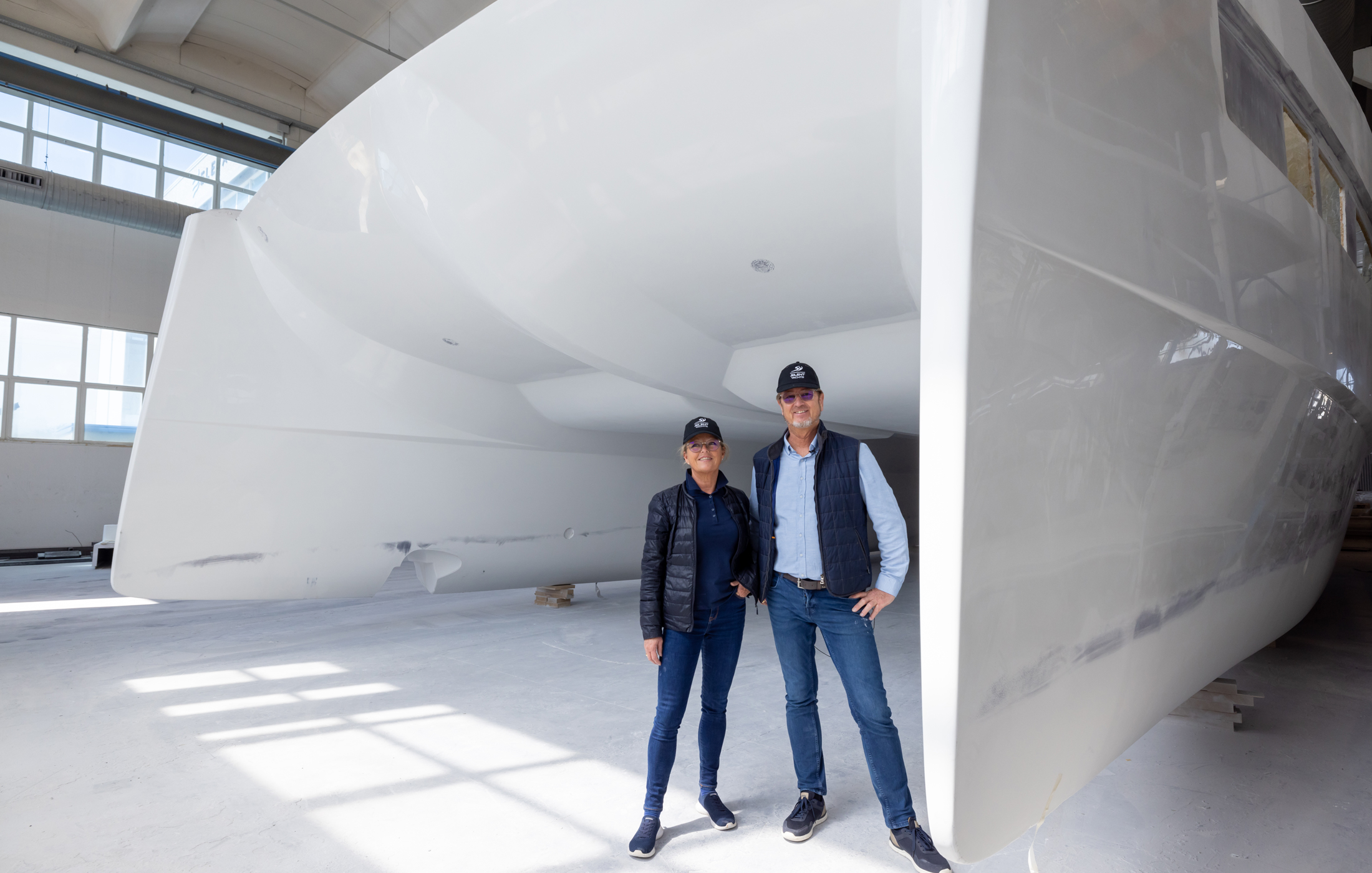
Shipyard tour Italy by Michael & Heike
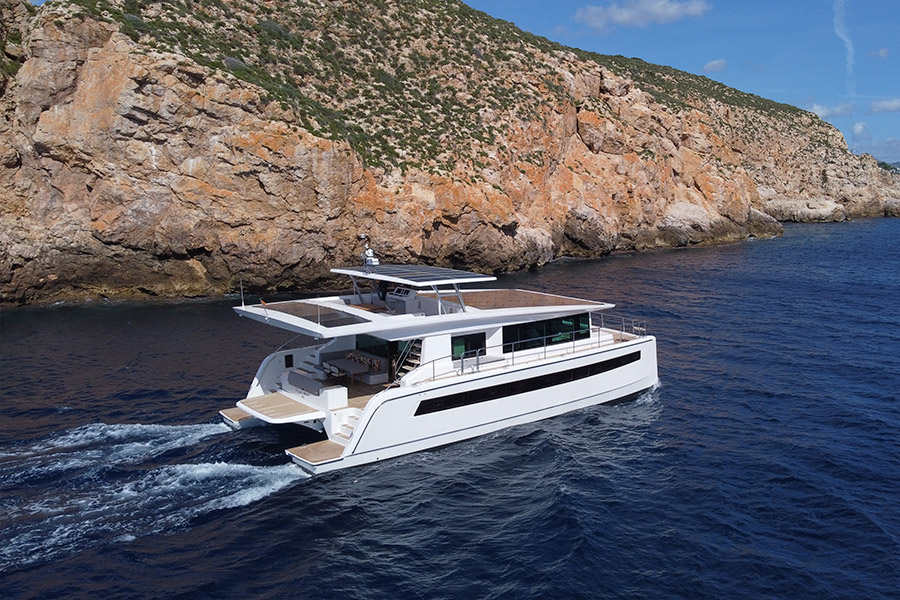
What is the range of a solar electric yacht?

Where are Silent yachts built?
“The Tesla of the seas! An amazing founding couple, a highly innovative product as well as a really cool story behind it. Furthermore, a lot of love and attention has been invested into every single detail – truly impressive!” Frank Thelen / TV Personality, Founder, Angel Investor & Disruption Expert
While the present has brought us the dawn of smart cars, I strongly believe the future will bring us solar powered smart boats – and I definitely want to be at the frontline of that journey. Michael Jost / Former Head of Group Strategy of Volkswagen Group
The idea of sailing while charging your own battery is super powerful to me – solar powered sailing is the perfect love story! Jochen Rudat / Former Tesla Central Europa Director, Advisory Board Silent Group
Elon Musk single handedly forced an entire industry to go electric, as a matter of fact if they don’t all go electric now they will soon die. I would like to see the same thing happening for boating. You are not just selling boats – you are the actual leading edge of a crucial and much overdue revolution to sustainable transport!” Klaus Obermeyer / Emmy Award Winner
I am completely excited about solar catamarans. I knew before they are great but now I truly believe this is the future. After so many boats I’ve seen in over 18 years with Boote Exclusiv, this yacht truly blew my mind. Such a silent and peaceful cruising experience – just the way it should be. Martin Hager / Editor in Chief for Boote Exclusiv - Yachts
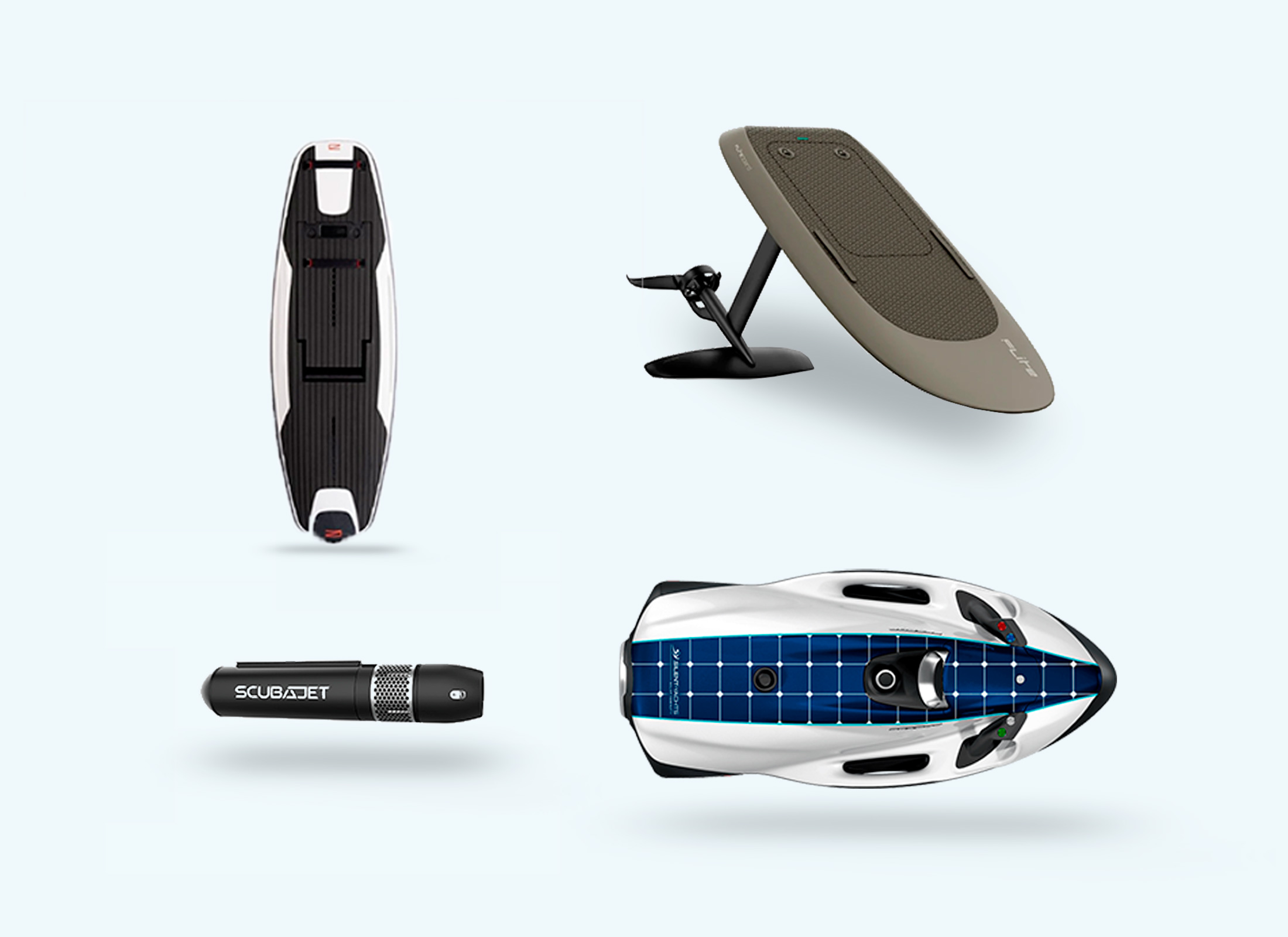
Recommended water toys, accessories and products to enhance every Silent voyage:

Electric boats
Electric yachts, this new solar electric yacht with its own spa pool and theater awaits you.
Renowned luxury yacht maker, Sunreef, released plans for a new 108-ft (33-m) solar-powered electric superyacht complete with its own pool spa and indoor theater. Did I mention it’s also fully autonomous?
Best known for its comfort, stunning beauty, ultra-luxurious accommodations, and high performance, Sunreef continues to push the boundaries with its luxury catamarans.
Sunreef is well known around the world for its luxury sailboats, power catamarans, and superyachts, with customers including Tennis superstar Rafael Nadal.
On Friday, the company revealed its latest superyacht, the 33M Sunreef Explorer Eco. Sunreef says the new model “rewrites the rules with bold architecture and a fresh approach to travel.” Perhaps most importantly, the 100-ft-long yacht travels silently without harmful fumes or vibrations.
Powered by two 400-kW electric motors, a 990-kWh battery pack system, and two 300-kW range extenders, the 33M Sunreef Explorer Eco “was designed to take you to the most remote cruise grounds in silence.” However, no specifics were mentioned on the range yet.

Made from aluminum and advanced composite materials, the electric yacht’s design maximizes the space for harnessing solar energy.
With included solar panels built into the hulls, superstructure, bimini roof, and entire full-beam bow terrace, the electric superyacht’s photovoltaic system can generate up to 50 kWp of clean solar energy.
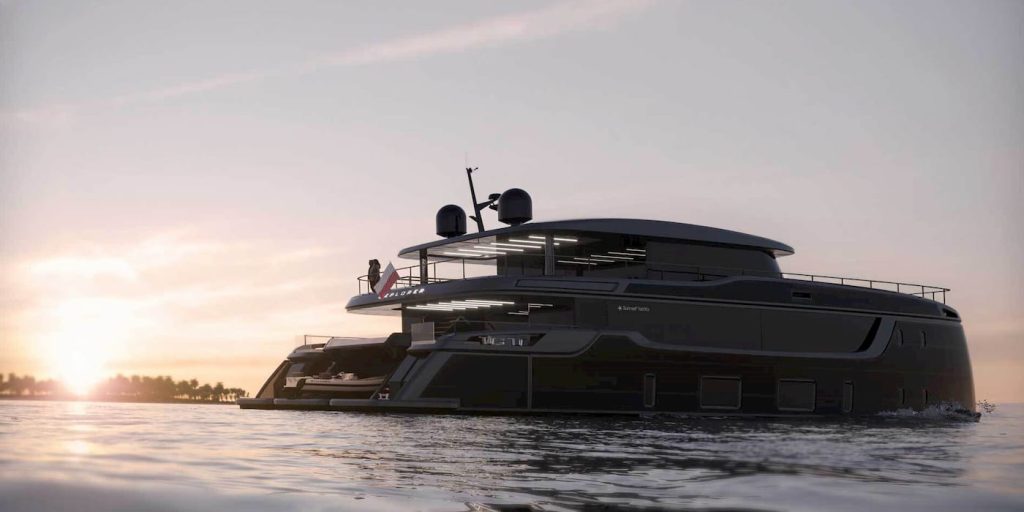
The 33M Sunreef Explorer Eco enhances efficiency with energy-saving air conditioning and a smart energy recovery system. It also features a rainwater collection system, water-saving traps, watermakers, and an ultra-efficient boiler using heat recovery.
On the inside, you will be blown away by the vastness of the 535 m² of living space that can be customized to include a spa, a library, or a gym.

It also has space for ten guest rooms and seven crew members. The large main suite has an outdoor deck area, while the level below it features an outdoor pool, bar, and dining area.
This is luxury living at its finest with no emissions. What do you guys think? Are you ready for Sunreef’s new solar electric superyacht? Although the price is not yet listed, you can imagine how much it will cost for all of this.
FTC: We use income earning auto affiliate links. More.

Peter Johnson is covering the auto industry’s step-by-step transformation to electric vehicles. He is an experienced investor, financial writer, and EV enthusiast. His enthusiasm for electric vehicles, primarily Tesla, is a significant reason he pursued a career in investments. If he isn’t telling you about his latest 10K findings, you can find him enjoying the outdoors or exercising

- Gear Directory
- Multihull Sailor
- Boats for Sale
- Real Estate
- Maintenance & Hardware
- Water Sports
The Best Solar Panels for Boats of 2024
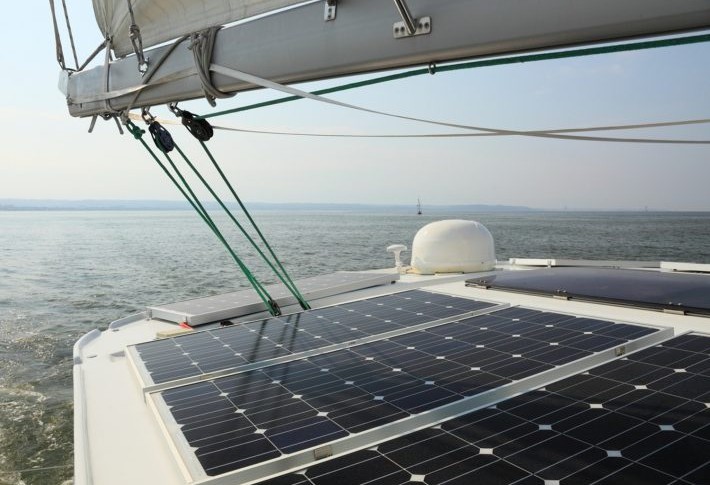
Solar panels are a great way to give your boat energy and power. If you like taking long rides on motorized watercraft, having solar panels can reduce your energy costs. They also make sure that the boat is efficient and never runs out of power in an emergency. There are multiple options for solar panels available, which can make the market search even more confusing. To help you find a suitable pick, we have shortlisted and keenly reviewed our favorite solar panels for boats in 2024.
A top-quality product not only lasts long but also delivers efficient results. This is why it is essential to invest your money in high-end solar panels. All our products are selected based on their overall performance and ability to deliver high-end results.
Our Top Picks
- Best Overall: Renogy Solar Panels for Boats Shop Now ➔
- Most Lightweight Design: Rophie Solar Panels for Boats Shop Now ➔
- Premium Kit: TopSolar Solar Panels for Boats Shop Now ➔
- Best Backup Kit: ECO-WORTHY Solar Panels for Boats Shop Now ➔
- Simple Installation: Sunway Solar Panels for Boats Shop Now ➔
- Premier Foldable Panel: EF ECOFLOW Solar Panels for Boats Shop Now ➔
- 1 What to Consider When Buying Solar Panels?
- 2 Size
- 3 Type
- 4 Accessories
- 5 How Do Solar Panels for Boats Work?
- 6 Installation
- 7 What Are Care Requirements to Enhance the Life of Solar Panels for Boats?
- 9 Cleaning
- 10 What Are the Properties of Charge Controllers for Solar Panels for Boats?
- 11 Basic charge controllers
- 12 Mid-range charge controllers
- 13 Max power charge controllers
- 14 Conclusion
Can solar panels for boats run a trolling boat motor?
How long does it take for a solar panel to charge your boat’s battery, why do people consider installing solar panels for boats, the best solar panels for boats, best overall.
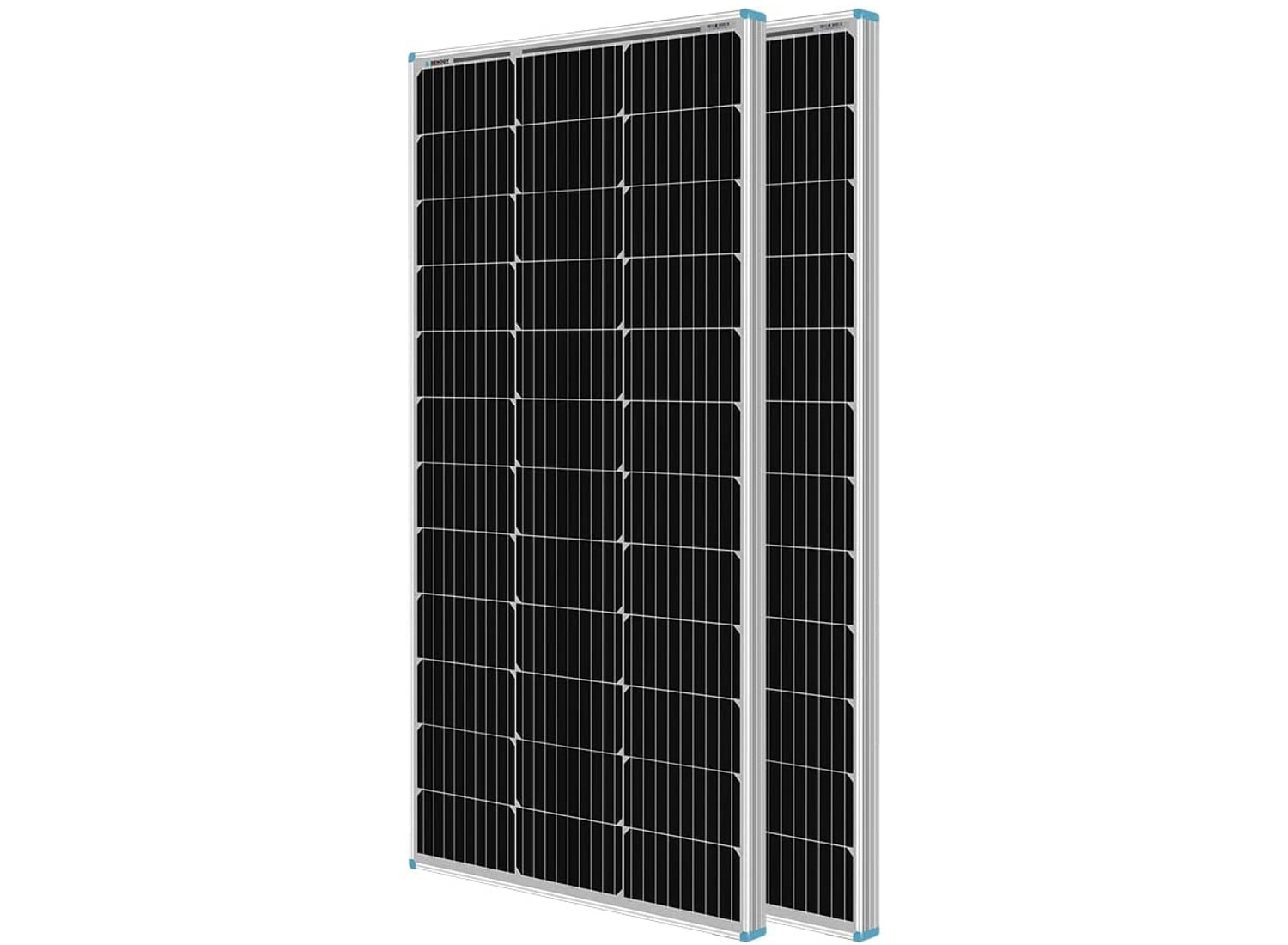
Renogy Solar Panels for Boats
The Renogy are 100W monocrystalline solar panels providing an average of 400-500Wh or 33-41Ah of electricity per day, so you have reliable performance. It has bypass diodes that protect the solar cells from overheating, so you don’t have to worry about maintenance. In addition, it features a corrosion-resistant aluminum train providing extended outdoor use without any extra damage.
These solar panels come with pre-drilled holes on the back so that you can install and mount them without spending money on professional help. They measure 42.2 x 19.6 x 1.38 inches and weigh 14.3 pounds, making them lightweight and convenient. Moreover, you can install them on boats, rooftops, cabins, and more for multifunctional use. Because of their efficiency and reliability, these solar panels stand at the top of our list.
- They are weather-resistant
- These solar panels maintain cell temperature
- Provide reliable performance
- Only compatible with Renogy ground mounts and brackets
Most Lightweight Design
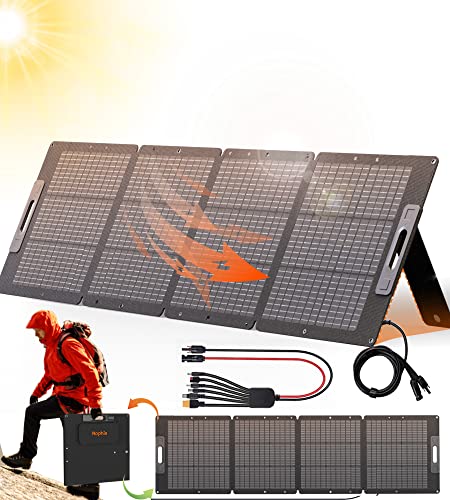
Rophie Solar Panels for Boats
The Rophie Solar Panels easily stands out on this list. Designed with impeccable efficiency, they accelerate solar charging to the next level, making it ideal for outdoor enthusiasts and off-grid boat owners. These solar panels convert sunlight into power rapidly, while their ultra-light, foldable design ensures convenience during transport and installation. Don’t let their light weight fool you, though, as they pack an impressive 200 watts, delivering unmatched power performance for your boat or outdoor camping.
These panels don’t just excel in efficiency and power; they’re also built to endure. Their IP67 waterproof grading ensures that they remain operational even under challenging weather conditions. Their high-quality MC-4 connectors further optimize power transfer while ensuring safe and secure connections. Plus, their compact design won’t take up much space, proving to be the optimal choice for boat owners who value both power and convenience.
- Lightweight and easily transportable
- Durable and water-resistant
- High-performance with 200W
- Can be a little pricey
Premium Kit
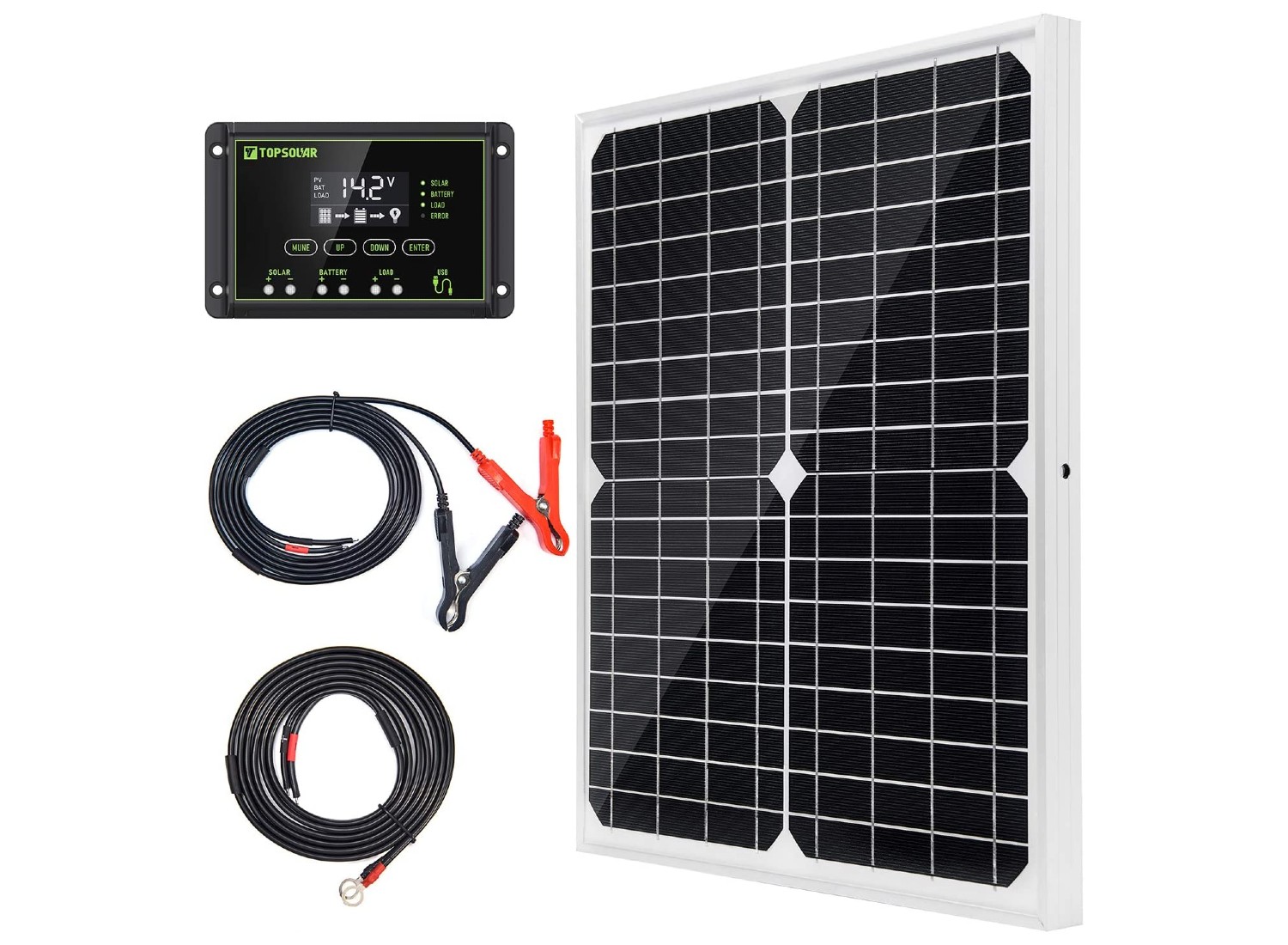
TopSolar Solar Panels for Boats
The TopSolar Solar Panels are available in a kit containing 20W solar panels, a solar charger regulator of 12V/24V, two 6.5-foot cables with alligator clips, and an O-ring terminal to have a complete experience while on the go. They are perfect for off-grid 12-volt battery charging systems providing you with various DC applications like cabins, boats, battery-operated gates, and more. They come with a 10A solar charger controller preventing the battery from overcharging, discharging, and risk of short circuit for a safe experience.
These solar panels have aluminum and tempered glass frames, ensuring a durable and weather-resistant use. Weighing 2.75 pounds and measuring 2.32 x 13.86 x 17.13 inches, they are compact and portable.
- Easy to store and carry
- They come in a complete kit
- Provide excellent weather resistance
- Not suitable for large areas and machinery
Best Backup Kit
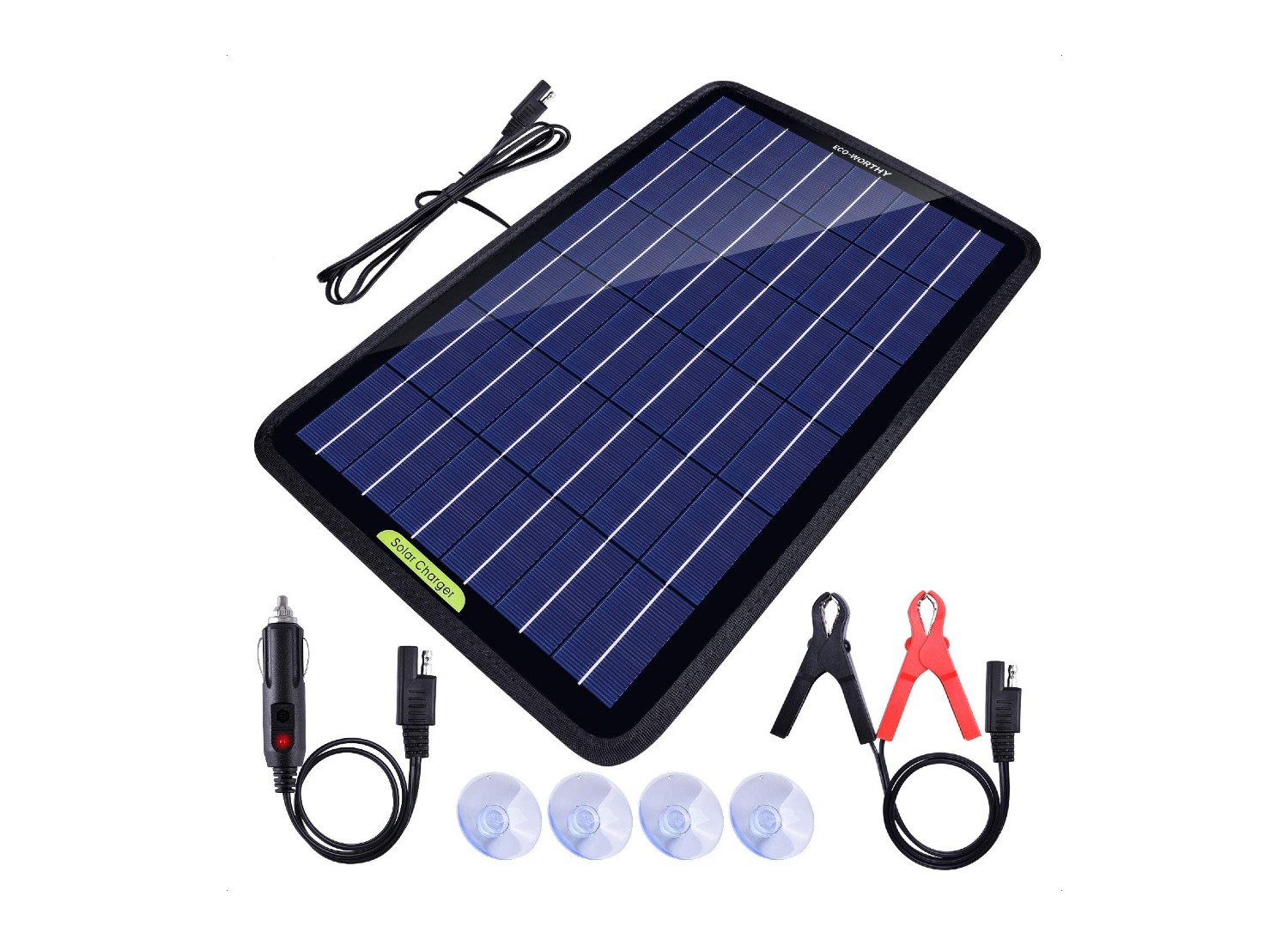
ECO-WORTHY Solar Panels for Boats
The Eco-Worthy Solar Panels are 10W 12V solar car battery chargers that can be used to recharge boats, motorcycles, boats, snowmobiles, and tractors. They feature a cigarette plug option supplying you with constant power when needed. This kit includes a cigarette lighter adapter, one pair of battery clips, and four-piece PVC suckers ensuring maximum results in no time.
They also have energy-saving, built-in blocking diodes that prevent reverse discharge from maintaining and extending battery life for maximum durability. It measures 1.4 x 9.6 x 15.3 inches and weighs only 1.5 pounds, so you have a compact product at hand
- They are available in a complete kit
- These panels are lightweight and compact
- They can recharge different types of vehicles
- Only designed for vehicles
Simple Installation
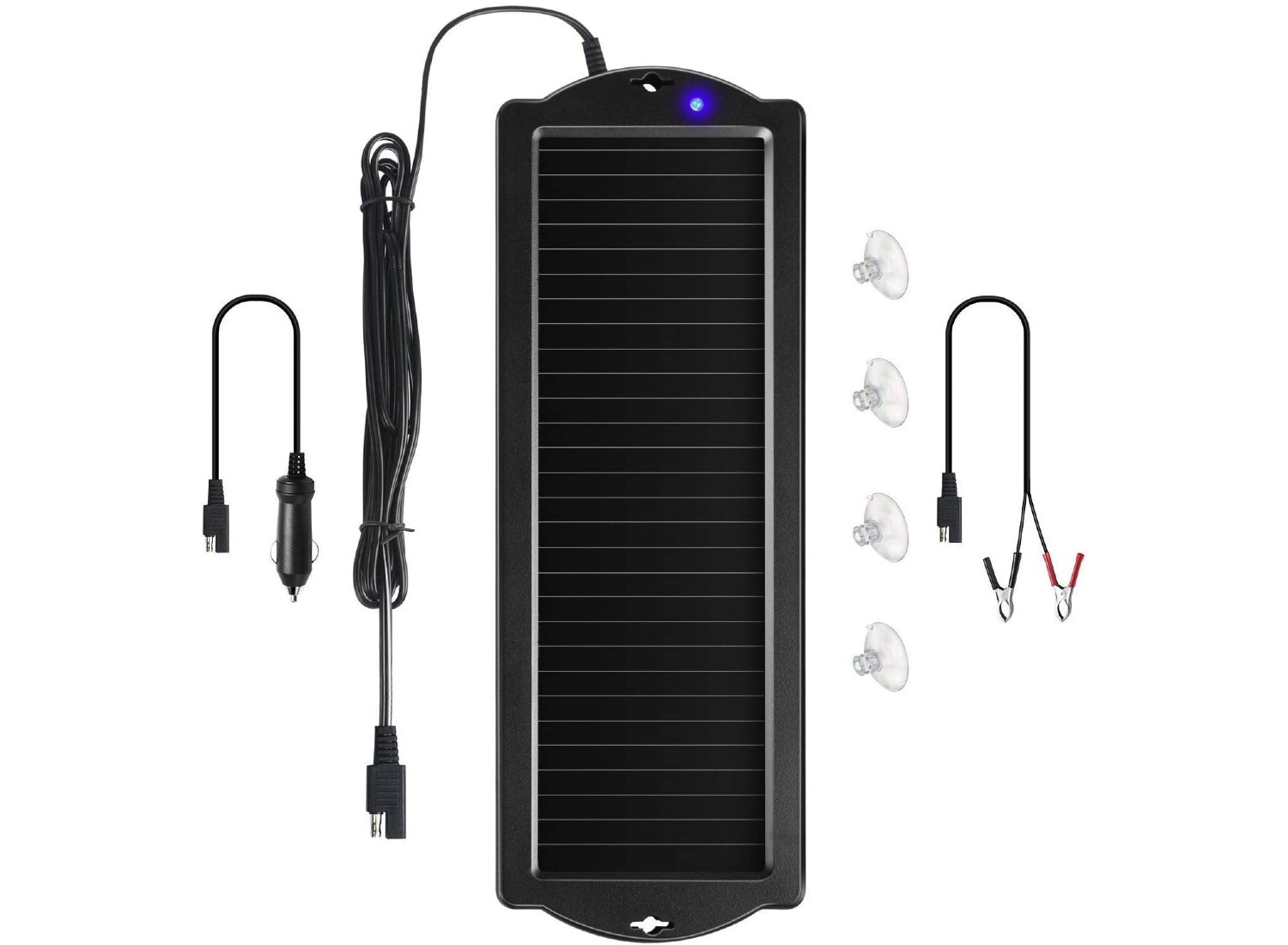
Sunway Solar Panels for Boats
The Sunway Solar Panels are battery charger panel mounts that require a simple installation on any windshield or dash, giving you a quick and convenient experience. They come with 12-volt batteries and a maintainer that protect your panels from overheating and discharging, ensuring safe and convenient use. In addition, these panels are equipped with ultra-clear PC glass, so you have a strong and durable product.
They contain built-in blocking diodes that prevent reverse charging allowing your battery to maintain its useful life. Moreover, they also come with a blinking LED charge indicator that lets you know when the job is done.
- Comes with a battery maintainer
- Do not require professional installation
- Comes with charging indicators
- Suitable to recharge small batteries only
Premier Foldable Panel
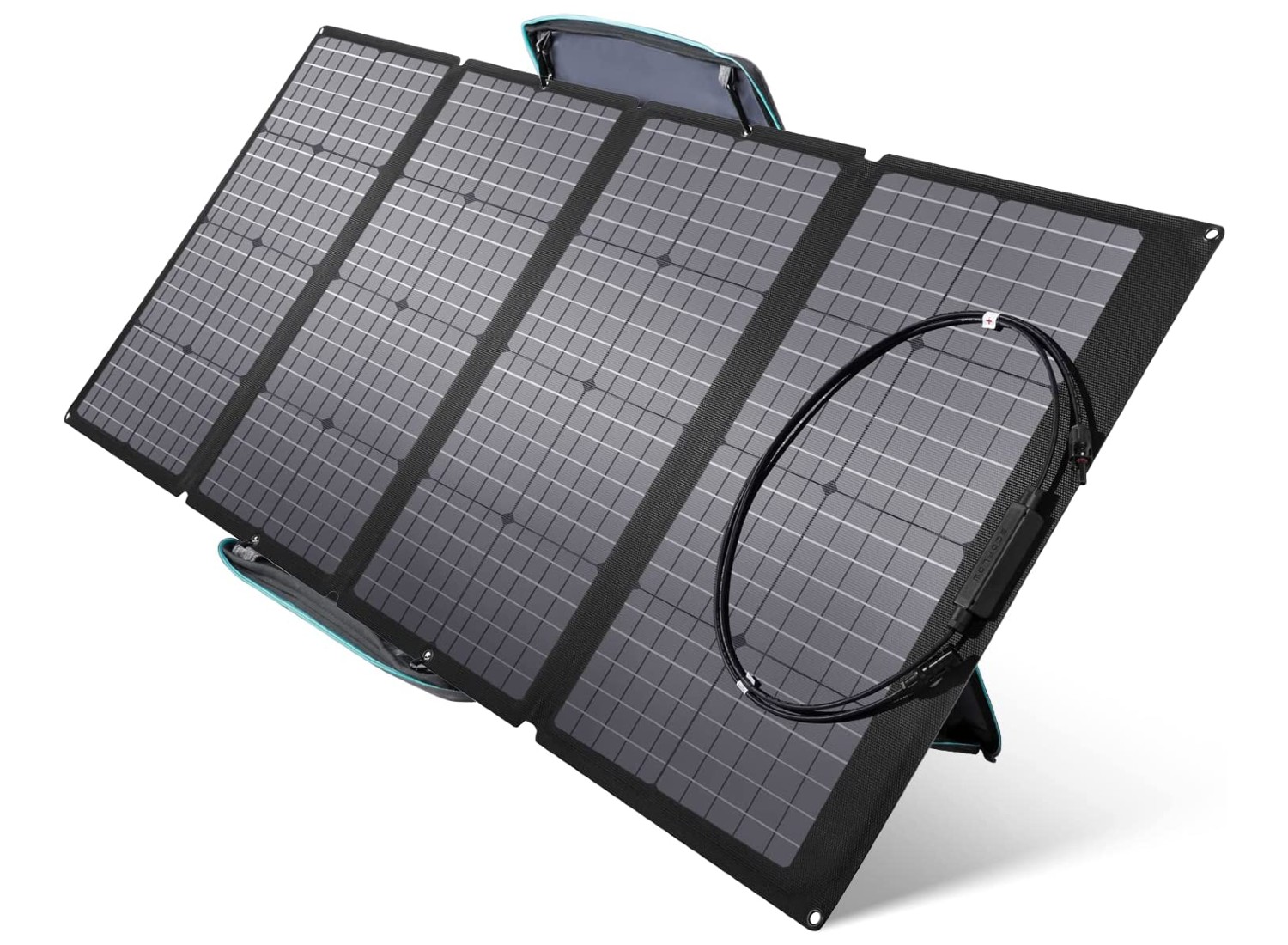
EF ECOFLOW Solar Panels for Boats
The EF Ecoflow provides 160W solar portable and foldable solar panels, delivering a compact and easy-to-carry experience. They are designed to produce maximum power at any time of the day when paired with an EcoFlow power station, so you never run out of electricity. Moreover, they have a seamless one-piece waterproof design, so you can use them during outdoor activities like camping and hiking.
These solar panels are also equipped with protection during transportation, enabling you to carry them without any concerns. Each pack comes with an Ecoflow 160W solar panel, kickstand case, user manual, and warranty card, so you don’t have to make any additional purchases.
- They can be folded for easy storage
- Comes in a complete kit
- Suitable for different outdoor activities
- Can only be paired with an Ecoflow power station
Solar Panels for Boats Buying Guide
We have compiled a detailed buying guide to help you pick a suitable product. It will give you an idea about your requirements for solar panels for boats.
What to Consider When Buying Solar Panels?
Since solar panels are an expensive addition to your asset list, here are a couple of essentials to remember when purchasing.
The size of panels is directly related to the size of your boat. You must get something to match the energy requirements of your boat or greater. A solar panel too small might not power it and leave you frustrated. Other than this, smaller products have less battery time which means they will turn off much quicker than something explicitly designed for the size of your boat.
From PVC to glass covering and fully flexible panels, the type you choose determines their cost. This helps you establish your budget according to your needs. A glass-fronted solar panel is among the most budget-friendly options, but they are not as weather resistant. Besides this, a polycarbonate version is more expensive, but they are incredibly weather resistant and have a longer life.
Accessories
A charge controller or maintainer is an essential component available for your boat’s solar panels. This product protects your panels from battery damage. They prevent any risk of overheating, battery discharge, or sudden drops. A charge controller is essential if you want to elongate the battery’s life. Most brands also offer mount brackets, so you don’t have to purchase them separately.
How Do Solar Panels for Boats Work?
Solar panels for boats work just like any other portable energy provider. To install it successfully, you must have four components: the solar panel itself, charge controller, inverter, and battery. When solar panels in the boat hit sunlight, they convert it into the electrical current, supplying your boat with the required energy.
Boat solar panels can work without a charger maintainer (controller), but there is a risk of overcharging your device. Therefore, you must keep it in place to avoid any risk of battery damage.
The need for an inverter depends on the number of appliances that need a charge. For instance, if you wish to charge multiple devices other than the boat, consider buying a large-capacity product.
You can opt for professional installation if offered by the brand or any other reputed company. But individuals who have the basics can do it all by themselves. However, you must make sure that all the relevant accessories are available at your convenience.
Installation
The installation method is divided into three main stages. The first stage is to conduct an energy assessment. In this, you will determine the level of energy that your boat needs to function. Buy a panel that has a higher voltage than your requirements. This gives more room and flexibility to charge other devices.
Check whether the solar panel can produce that level of energy. Once the capacity is determined, you can decide the exterior of your panels. In most cases, you choose between glass-fronted, polycarbonate, and fully flexible panels.
What Are Care Requirements to Enhance the Life of Solar Panels for Boats?
Caring for solar panels is essential as they are a long-term investment and should last accordingly.
Most solar panels are designed to last two to three decades. Caring for them is fairly simple but requires regular attention. All you have to do is keep them clean from dirt, leaves, and other obstructions. Solar panels from reputable brands always come with a warranty for a couple of years.
Always get a professional repair from the brand in case of any damage. Even if your warranty has expired, we recommend taking your boat’s solar panels to a professional. They might cost a bit more than a local mechanic, but your panels get the treatment they require.
Another factor to consider here is the useful life of your solar panel. This indicates that they will not be as effective as they age. The depreciation in their quality is slow and gradual.
If your product has met the end of its useful life, it won’t stop working but will get more prone to damage. So instead of getting frustrated with why your solar panel for boats isn’t working properly, consider getting a replacement from the same brand or changing your product.
Cleaning
To clean a solar panel, use lukewarm water with a mild, non-acidic detergent and apply water pressure to remove any visible dirt and debris. Panels for boats are relatively smaller, so you won’t need a lot of supply. Clean any unwanted spots with a damp cloth and leave it to dry. Avoid applying water pressure on smaller models as they might not sustain the burden.
What Are the Properties of Charge Controllers for Solar Panels for Boats?
Charge controllers are an essential component. They help protect your panels’ battery from damage. There are three main types of charge controllers available.
Basic charge controllers
They use pulse width modulation to encode transmission information allowing control of the power supplied to boats or other devices. These are simple chargers that come in at an affordable price range. A primary charge controller is designed to control batteries of smaller solar panels. They might not deliver desirable results if connected with a high-capacity panel.
Mid-range charge controllers
These controllers also use pulse width modulation but feature an LCD display to indicate current charging levels. This helps the user keep track of the system and unplug the device when it’s ready to use.
Max power charge controllers
Designed for high-end and powerful solar panels, they are one of the most expensive charge controllers. You should only attach them to devices recommended by the brand itself. They also maximize the performance of panels.
Conclusion
Solar panels are a great way to maximize energy efficiency in your boat and create a durable backup. They are available in different sizes and capacities, so you can find a suitable fit for your boat. This article carefully reviewed the most in-demand solar panels for boats in 2023 that can make a difference in your overall experience. Besides the panel, you should also grab a top-notch charge controller that protects the device from damage and enhances its life.
People Also Asked
Yes, you can run a trolling motor with solar panels, but it is essential to opt for a device that has suitable capacity.
If the panel is according to the desired capacity of the boat, it might take 4 to 6 hours for a full charge.
Solar panels reduce carbon emissions and save money by reducing fuel costs. They also reduce the noise levels caused by a fuel-ignited engine.
Article Contributors
Sail magazine review team.
SAIL Magazine Review Team reports on best-selling products in sailing and boating. The SAIL Magazine editorial staff is not involved in the creation of this content. SAIL Magazine is reader-supported: When you buy through links on our site, we may earn an affiliate commission. The SAIL Review Team is composed of authors, editors, and sailors. Artificial Intelligence (large language models) may have been used in the research and creation of the content.
To ensure questions about product testing or a specific article are addressed, please contact [email protected]
Yachting Monthly
- Digital edition

Best Solar panels for off-grid power and keeping batteries charged
- Phil Sampson
- November 28, 2022
We take a look at 6 of the best solar panels for boats, from folding units to cutting-edge flexible panels

Free power forever? If only it was that simple! Photo: Graham Snook
For many in the boating community, solar panels represent something of a holy grail. They are, after all, the gift that keeps on giving, aren’t they? Free power forever, (or many years anyway), coupled with zero running costs – what could possibly be better than that?
All you have to do to make this dream come true is banish the memory of the purchase price from your mind – something boaters are notoriously adept at doing – and wait for the sun to shine. If only it were that simple…
The fact of the matter is that there are costs associated with solar panels beyond the price of the panels themselves. While some types of panels can be simply laid on the deck, in many cases some form of mount will be required.
Then there’s the wiring to hook them up to your battery, plus any fitment and/or cosmetic work needed to hide the cabling from view. If your panels are to be left connected permanently, you’ll require a regulator too.
This will prevent both overcharging and a reverse flow of power out of the battery after dark. If you do not fit a regulator, a blocking diode can be used to halt the reverse flow instead.
But once all of the above have been overcome – and providing you’ve done your homework to ensure your panels will generate sufficient power to cover your needs – then, yes, it’s a power free for all!
There are many other benefits to boat solar panels too: First and foremost, they work all on their own – solar panels are automatic, so you can just let them get on with the job.
Apart from the occasional wipe over and a wiring check, they’re largely maintenance-free too. Unlike wind generators, (especially like the one with wonky bearings on that boat moored next to you), they don’t make any noise.
And finally, your batteries will be pleased, because keeping them from going flat can extend their life.
Here’s our choice of the best boat solar panels.
6 of the best boat solar panels available right now

Giosolar 1,000W flexible solar panel
Best flexible boat solar panel
Delivering a mighty kilowatt of power, (not far off the amount used by a one bedroom house), this Giostar package comprises ten separate 100W panels, each of which is 1,050 x 540 x 2.5mm in size.
Capable of charging either 12 or 24V batteries, a kit of this magnitude is one for the most serious of solar enthusiasts – Eco Experts reckons 660-990W is sufficient for a liveaboard.
Giostar panels are abrasion resistant, anti-rust and dust proof and their junction boxes are sealed and waterproof. The panels are also light, thin and flexible, and can withstand being bent up to 30 degrees.
Reasons to buy: Incredible amount of power, panels are abrasion resistant as well as anti rust + dust proof
Reasons to avoid: Premium price
Price: £1,464.45
Buy it now on Amazon (UK)
Note: We may earn a commission when you buy through links on our site, at no extra cost to you. This doesn’t affect our editorial independence.
Ecoflow 160w portable solar panel.

Mobisolar 100W foldable solar panel
Best foldable boat solar panel
Mobisolar’s foldable panels are light (4.5kg) and measure 121 x 56.5 x 3 cm when unfolded, with the longest dimension reducing to 60 cm when folded, making them easy to transport.
The panels use advanced technology to provide superior performance, with each panel subjected to a thorough testing routine before and after assembly.
So confident is Mobisolar in its products that the company stands behind its panels with a two-year defect warranty and a five years’ electrical performance warranty.
For maximum flexibility in operation, three USB power outputs are fitted per panel, one delivering 100W, the second 60W and the third 10W.
Reasons to buy: Foldable, lightweight and long warranty
Reasons to avoid: Not resistant to the elements, doesn’t feature mounting holes
Price: £145.00
Buy it now on eBay

Eco-worthy 100W solar panel kit
With 100W panels being ideal for keeping batteries topped up, our second offering in this power class is from Eco-worthy, a major player in the solar panel field.
Competitively priced, our link below is for a kit which includes an LCD control unit and four ‘Z’ brackets in addition to the panel itself.
The Eco-worthy 100W panel is of the monocrystalline type, which means their cells are made from an ingot grown from a single silicon crystal of high purity. It’s also a rigid panel, so this particular product would need to be mounted on a frame or flat surface.
Reasons to buy: Competitively priced, Features LCD panel, brackets
Reasons to avoid: Only a year warranty, not resistant to elements
Price: £113.99

PV Logic 20W Flexi solar panel
Offered by Force 4 Chandlery, this lightweight semi-flexible solar panel comes complete with a dual battery solar charge controller.
The panel is completely waterproof thanks to its six-layer, heavy-duty laminate finish, and should a wayward crew member plod over it in their size 9s the panel’s dimpled top surface is ‘self healing’.
The controller can handle both 12 and 24V systems and the panel’s PWM (Pulse Width Modulation) charging system is efficient and battery-lifetime friendly.
Supplied with LED battery-status indicators and 4 metres of cable, PV Logic Flexi panels can be bonded to flat or curved surfaces.
Reasons to buy: Lightweight, waterproof, dual controller
Reasons to avoid: Lacks mounting options
Price: £149.95
Buy it now on Force 4 Chandlery

Powoxi 10W solar panel
At the budget end of the market comes this Powoxi 10W solar panel charger kit. While you won’t go far on just 10W of power, this kit claims to be capable of charging and maintaining various 12V batteries.
The kit features a fully automatic charging and maintenance controller, which provides intelligent three-level charging and protection against short- and open-circuits, under voltage and overloading.
A reverse flow system is included and the interface is described as ‘plug and play’. While the panel is rainproof, it will not withstand immersion in water, so this is a product to perhaps leave behind on the dock when you take to the water.
Reasons to buy: Great budget option, plug and play
Reasons to avoid: Not waterproof, won’t go far on 10V
Price: £27.59

Eco-worthy 10W/5W solar panel
The least pricey option we could find anywhere, this baby 5W solar panel is simply a trickle charger. But if that’s all you need then look no further, for this is another Eco-worthy product.
The technology in the panel is polycrystalline, so it’s not the most efficient on the market, but for this power that’s hardly a great concern.
The panel is supplied with two charging options; a pair of crocodile clips which attach directly to the battery, and a cigarette lighter plug.
According to the product’s eBay listing, this seller alone has sold approaching 3,000 of these units – and at this price, we can understand why!
Reasons to buy: Incredible price, can be charged via car lighter plug
Reasons to avoid: Small, not very efficient
Price: £9.99

Service Locator
- Angler Endorsement
- Boat Towing Coverage
- Mechanical Breakdown
- Insurance Requirements in Mexico
- Agreed Hull Value
- Actual Cash Value
- Liability Only
- Insurance Payment Options
- Claims Information
- Towing Service Agreement
- Membership Plans
- Boat Show Tickets
- BoatUS Boats For Sale
- Membership Payment Options
- Consumer Affairs
- Boat Documentation Requirements
- Installation Instructions
- Shipping & Handling Information
- Contact Boat Lettering
- End User Agreement
- Frequently Asked Questions
- Vessel Documentation
- BoatUS Foundation
- Government Affairs
- Powercruisers
- Buying & Selling Advice
- Maintenance
- Tow Vehicles
- Make & Create
- Makeovers & Refitting
- Accessories
- Electronics
- Skills, Tips, Tools
- Spring Preparation
- Winterization
- Boaters’ Rights
- Environment & Clean Water
- Boat Safety
- Navigational Hazards
- Personal Safety
- Batteries & Onboard Power
- Motors, Engines, Propulsion
- Best Day on the Water
- Books & Movies
- Communication & Etiquette
- Contests & Sweepstakes
- Colleges & Tech Schools
- Food, Drink, Entertainment
- New To Boating
- Travel & Destinations
- Watersports
- Anchors & Anchoring
- Boat Handling
- ← Technology
What You Need To Know About Boat Solar Panels
Advertisement
Sunshine and boats are a natural together, so why not use all that free energy? Here’s the lowdown on solar panel selection and installation
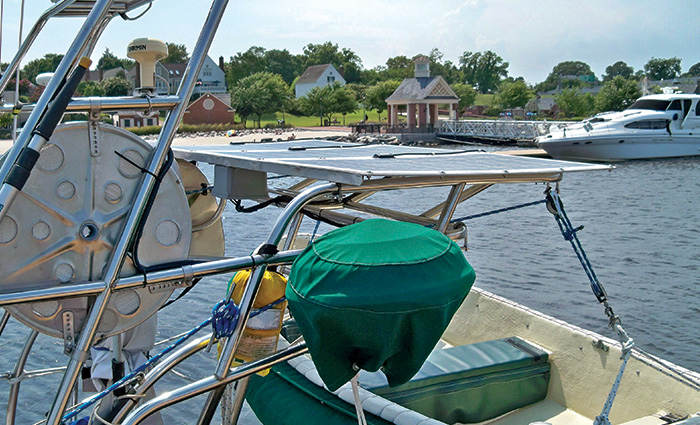
I first embraced the idea of solar power while up a pole (literally) in the Atlantic Intracoastal Waterway replacing dead batteries. It was the early 1980s, and I was maintaining buoys, beacons, and other such Aids To Navigation (ATON) for the U.S. Coast Guard, replacing massive, nonrechargeable batteries with rechargeable solar-powered ones. The higher-ups said the solar rechargeables would last six years – twice as long as the one-shot batteries. As the deck-ape in charge of lugging all those batteries up and down the ladders, my back and I immediately appreciated the whole “free power from the sun” thing, a concept I continue to embrace.
The strategy behind s olar energy onboard is simple: A solar panel converts sunlight into electricity, after which wiring conducts it to your batteries for storage until needed. Solar panels are used to keep batteries or banks charged rather than to power equipment directly. This arrangement allows the panels to store generated power whenever produced, while providing a steady source of power to a piece of equipment even when the panel is producing no power.
While they do require an initial outlay, solar panels can easily pay for themselves in money saved and independence gained over their service life. They’re noiseless, have no moving parts, and they provide free electricity for years with minimal maintenance. Solar panels also have the benefit of being modular, letting you start small and add more as your power requirements increase.
The benefits of solar
Almost any boat can benefit from solar power. Whether at a slip, mooring, or on a trailer, boats can keep their batteries topped off without the need for external power. You can also use solar power to supplement or even replace other onboard charging sources, reducing or eliminating the need to run engines or generators to keep batteries topped off (a wasteful practice that burns fuel while wearing down the costliest pieces of equipment onboard).
While underway, it’s a plus to be able to recharge a dead battery in an emergency – say, to operate a VHF radio or navigation gear. While dockside, solar panels keep batteries charged and vital systems (such as bilge pumps) up and running without the need for shore power.
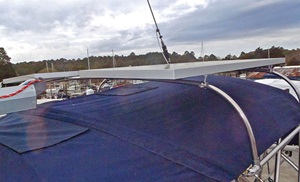
Just about any boat can benefit from solar power, whether it’s to keep batteries topped off or supplement other onboard charging sources.
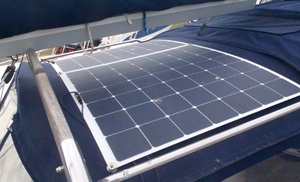
Mount solar panels where they are exposed to maximum sunlight but do not interfere with operation of the vessel.
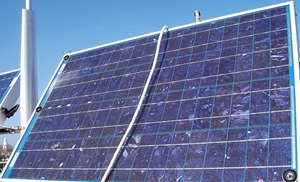
Bottom: Something as simple as the shadow of a line or shroud can reduce or halt output.
Types of panels
Solar panels contain photovoltaic cells – small silicon semiconductor devices that convert sunlight into electricity. Each cell generates between 0.45 and 0.5 volts, depending on exposure to direct sunlight. Cell size determines amperage, with a 3-inch cell producing roughly 2 amps, a 4-inch cell a little over 3 amps, and a 5-inch cell around 5 amps.
Construction-wise, the three main types of solar panels are monocrystalline, polycrystalline, and amorphous (or thin-film) technology.
Monocrystalline panels have been around the longest and remain the most popular. The panels are constructed of thin slices of crystal silicon (each cell is cut from a single crystal) housed in a rigid, aluminum frame and covered with tempered shatterproof glass. The panels have a uniform black, blue, or gray appearance and are generally quite rugged, although they can be cracked or broken if subjected to extreme abuse.
Monocrystalline panels have the longest service life of the three types. With a conversion efficiency of around 17%, they’re also the most efficient and have the highest electrical output per area, but they are also the most expensive.
Polycrystalline cells are sliced from a cast silicon block and have a shattered glass appearance. Built in much the same way as monocrystalline panels, they’re rectangular, giving the panel itself a tiled look. Their life span is similar to monocrystalline panels, and while their conversion efficiency is lower (by 14%), they’re also a bit less expensive.
Amorphous panels are made by placing a thin film of active silicon on a solid or flexible backing (such as stainless or aluminum sheeting) depending on whether the panel is to be rigid-framed and glass-fronted or flexible. Flexible amorphous panels, in which cells are sandwiched between rubber and polymer covers, are light and tough enough that you can walk on them and, in some cases, even roll them up for storage.
This type of solar panel is also better if shade is an issue. With crystalline panels, even the thin shadow of a rope or shroud across one cell can reduce or halt output of an entire module. Amorphous panels have “bypass” diodes that essentially turn off shaded cells and provide a current path around them. Some monocrystalline panels also have bypass diodes, but this feature comes at an increase in cost.
Amorphous panels are the least expensive of the three types, but their efficiency is also lower – around 8%, or roughly half that of a monocrystalline type. This lower output is somewhat mitigated in newer panels, however, which use three-layer construction. Each layer absorbs different colors of the solar spectrum, so the panel will deliver more power longer each day and during lower light conditions than the other two types.
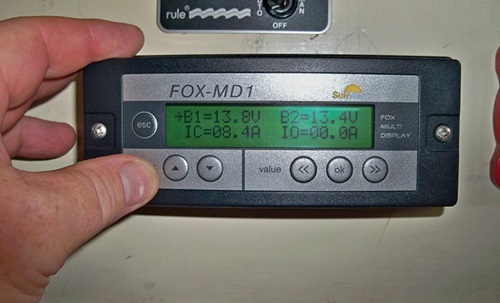
The charge controller should be mounted below decks and as close to the battery as possible.
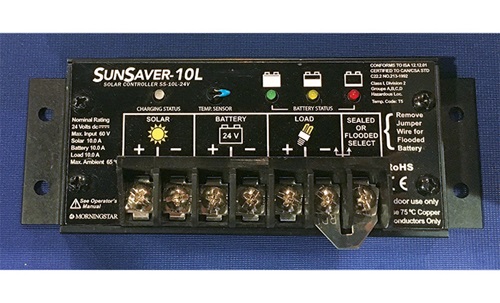
Follow manufacturer instructions for wire connections.
Planning the system
While factors such as cost, mounting options, and output are important, a successful installation depends on knowing what you want the system to accomplish. Is the goal to float-charge a single battery or supplement an overall vessel energy plan? Answering these questions up front will help determine the type, size, and number of panels required.
To understand the process better, let’s walk through the basic steps to determine power requirements and installation considerations for a single solar panel installation. While the example itself is simple, the steps are the same used to plan more complicated installations.
For our example, the goal is to install a solar panel to provide charging for a single 12-volt, 100-amp-hour wet-cell battery used to power an automatic anchor light on a moored vessel.
The first step is compiling a daily power consumption estimate to determine how much solar power is needed.
The daily self-discharge rate for a wet-cell battery is roughly 1%, meaning our 100-amp-hour battery requires one amp every 24 hours just to maintain the status quo. The anchor light draws 50 milliamps per hour of operation, and we’ll assume it operates 10 hours each night. Multiplying current draw (50 milliamps) by hours of daily operation (10) generates a daily energy expense of 500 milliamps or .5 amps.
This means our solar panel must meet a minimum daily energy tab of 1.5 amps – one amp of battery self-discharge rate plus .5 amps of power draw for the anchor light.
Next up is figuring out panel size and the best mounting location. For our example, let’s assume the panel will be a horizontal, fixed-mount installation. A 10-watt horizontally mounted panel should generate between 3- and 5-amp hours per day.
We’ll need at least 13 volts to fully charge our 12-volt battery. As most solar cells generate at least 0.45 volts, you’ll want a panel with a minimum of 33 cells, which should provide around 14.85 volts.
Keep in mind that’s the minimum needed, which may not be enough once you factor in a few cloudy days. Most panels are designed to generate between 15 and 20 volts to overcome problems like cloudy days or inherent electrical resistance within the panel or installation components. While this higher voltage lets you make up for less electrically productive days, it also means you’ll want to install a solar charge controller (voltage regulator) to avoid battery damage due to overcharging.
Attempts to plan a system that tries to use the output of the panel and capacity of the battery to prevent overcharging (and avoid the installation of a charge controller) is false economy and should not be done. The system will never meet its full output potential and, worst case, can damage the battery due to overcharging.
A word on ‘charge controller confliction’
If your vessel has multiple charging sources, such as solar panels and a wind turbine, a crucial but often overlooked consideration is “charge controller confliction.” In short, this is an issue where the charge controller for your solar panel and the charge controller for your wind turbine are internally adjusted to the same maximum charge voltage set point. This means they are constantly fighting each other to be the dominant power source, which results in diminished overall charging output and performance. An in-depth article on this issue can be found at missioncriticalenergy.com (in the website footer, click “Superwind Turbine Manuals & Technical Bulletins.” Under the header “Charge Controllers,” select the document “Resolving Charge Controller Confliction”).
While this article addresses charge controller confliction at remote, off-grid sites, the information provided is also applicable to vessel installations. — F.L.
Location and mounting
Solar panels should be mounted in a location where they are exposed to the maximum amount of sunlight but do not interfere with operation of the vessel or the movement of passengers and crew. Solar panels will typically be either fixed or mounted on some type of movable bracket that allows you to actively point the panel toward the sun for maximum output. Both methods have their pros and cons. Fixed panels (which are normally mounted horizontally) don’t produce as much power as a panel that can be adjusted to face the sun. The downside is that adjustable panels must be aimed throughout the day to maximize their output.
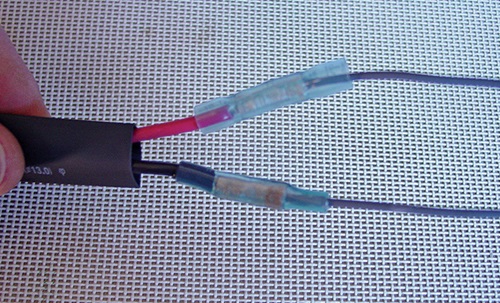
Use good quality, marine-grade heat shrink connectors (top) and liquid electrical tape (right) to create airtight, waterproof seals and reduce corrosion.
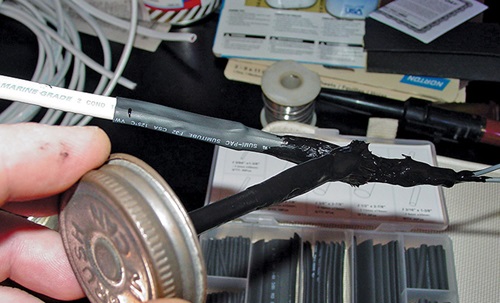
Installation
After choosing and mounting your panel, it’s time to connect it. The first thing you need to determine is the size (gauge) of the wiring to be used. Multiply your panel’s rated amp output by 1.25 (which adds a 25% safety factor). Then measure the length of the entire wiring run, panel to battery, and multiply by 2. Once you have these two numbers, refer to the American Boat and Yacht Council’s (ABYC) 3% voltage-drop table for wire size. Ancor Products offers a handy wire calculator on its website ( ancorproducts.com/resources ).
Always use good quality marine grade connectors and tinned, multi-stranded copper wire with vinyl sheathing. The wire will run from the solar panel to the charge controller first, then to the battery. Try to keep the wire run as short as possible, and if it transits an external deck or cabin house (it likely will), be sure to use an appropriate weatherproof deck fitting.
The charge controller should be mounted below decks and as close to the battery as possible. You’ll always want to follow the manufacturer’s instructions for connections, but in a typical installation you’ll connect the solar panel’s positive (red wire) lead to the charge controller’s positive input wire or terminal and the negative (black wire) lead to the charge controller’s negative input wire or terminal.
Next, connect the charge controller’s negative output to the battery negative terminal and the controller’s positive output to the battery’s positive terminal via an appropriately sized in-line fuse (or circuit breaker). ABYC recommends these be installed within 7 inches of connection to the battery or other point in the DC system. To reiterate, the installation of the charge controller can vary among models, so follow the manufacturer’s installation instructions.
Finally, ensure all connections are waterproof and secure any loose wire runs with wire ties and cable clamps for a neat installation. Then get ready to lean back and soak up some free sun.
Related Articles
The truth about ceramic coatings for boats.
Our editor investigates the marketing claims of consumer-grade ceramic coatings.
Fine-Tune Your Side Scan Fishfinder
Take your side-scanning fishfinder off auto mode, and you’ll be spotting your prey from afar in no time
DIY Boat Foam Decking
Closed-cell foam flooring helps make boating more comfortable. Here’s how to install it on your vessel
Click to explore related articles
Frank Lanier
Contributing Editor, BoatUS Magazine
Capt. Frank Lanier is a SAMS Accredited Marine Surveyor with more than 40 years of experience in the marine and diving industries. He’s also an author, public speaker, and multiple award-winning journalist whose articles on boat maintenance, repair, and seamanship appear regularly in numerous marine publications worldwide. He can be reached via his YouTube channel “Everything Boats with Capt. Frank Lanier” and website captfklanier.com.
BoatUS Magazine Is A Benefit Of BoatUS Membership
Membership Benefits Include:
Subscription to the print version of BoatUS Magazine
4% back on purchases from West Marine stores or online at WestMarine.com
Discounts on fuel, transient slips, repairs and more at over 1,200 businesses
Deals on cruises, charters, car rentals, hotel stays and more…
All for only $25/year!
We use cookies to enhance your visit to our website and to improve your experience. By continuing to use our website, you’re agreeing to our cookie policy.

Top 3 Best Solar Panels For Sailboats

Last Updated by
Daniel Wade
June 15, 2022
Choosing whether or not to install solar panels on your sailboat is a big decision. They are not exactly cheap, though they can start to pay themselves off pretty quickly.
This article is going to cover not only why you might want to use solar panels but all the benefits they provide. You will also find a helpful guide on which solar panels would be best for you and your budget. Hopefully, by the end, you will feel confident in your decision to install solar panels on your sailboat and even have an idea of which ones you might like.
Table of contents
Are solar panels on sailboats necessary?
Whether or not you should be installing solar panels on your boat is a matter of choice, not out of necessity. Sailboats get their power from the wind, by harnassing it in their sail. So if you plan to be sailing for the afternoon you probably don’t need solar panels.
You could charge a battery pack from the marina and that will probably see you through several trips. The problems only really start to arise if you are planning to be on your sailboat for longer periods, or even permanently. If you plan to live on your sailboat year-round, even if you spend 80% of it in a marina, you would be better off with some solar panels. Even if it is just as a backup source of power.
Are solar panels on boats safe?
Solar panels are generally pretty safe. They have no moving parts and typically have a very strong protective cover over them so you never come in contact with the electrics themself. So, as a source of power, they are generally pretty safe. The only time they may become unsafe is if they are badly damaged.
Solar panels are often covered by glass plating that keeps them safe. It also helps them absorb sunlight and warmth. This is great, except when the glass breaks. If the glass protective cover on your solar panels should crack and splinter you are at risk of serious injury from sharp shards of glass. Not only is the glass itself dangerous at this point, so are the electronic components inside. They have powerful currents running through them, and if you come in contact with them you may be in for a shock.
Furthermore, if these electronics get wet they can become deadly. Electricity and water do not mix well at all. Being as you are on a sailboat, at sea, the chances of them getting wet is very high. Luckily, the chances of them breaking in the first place are slim to none. The only real way they would break, besides vandalism, is by debris hitting them during a bad storm. There is not often debris at sea, so this shouldn’t be too much of a problem.
What are the benefits of having solar panels on a sailboat?
There are so many great benefits of having solar panels on a sailboat. They can be a lifesaver if you find yourself at sea for a long time. There benefits range from trivial comforts to being the difference between life and death. Here are some of the benefits you might not have considered about having solar panels installed on your sailboat.
Money-saving
Solar panels are not cheap, it is far cheaper to just run a generator or charge your batteries from the marina the whole time. At least, it is in the short term. Over time, it can start to become very expensive. With solar panels, you are looking at a big initial cost (the solar panels themself) and then it’s smooth sailing. You don’t need to pay for power again. Solar panels last for about 40 years before they start to become too inefficient at producing power. The cost of a few solar panels upfront compared to 40 years of marina fees and gasoline for a generator is the financially savvy move.
Emergency power
If you find yourself at sea, the wind dies down (or becomes too strong), and you find yourself stuck bobbing around waiting for more favorable conditions you may run into trouble. Depending on how long you are out there, you may find yourself with dead electronics. Be it a satellite phone, radio, or secondary engine (depending on the boat). Having a set of solar panels and a power bank can be a genuine lifesaver in these situations.
Comfort amenities
Whether you are day sailing or making a week-long voyage, having access to the comforts in life can make the whole journey so much more enjoyable. The amenities may not be available to you without having a constant source of power at sea. Having access to a kettle, tv, videogame system, radio or microwave oven may be the only thing keeping you going at rougher times. As exciting as sailing can be, when you aren’t sailing and are just bobbing around it can be quite dull. The sea is beautiful, but there is only so much time you can spend looking at the water before you miss the comforts of land. With solar panels, you can bring those comforts with you.
Eco-friendly
There are only two alternatives to solar panels. A gasoline generator, and taking power from the grid. Neither of these is good for the environment. Luckily, solar panels are a great third option. Solar panels are completely eco-friendly and are great for the environment. This is not just great for the earth, and your conscience, but for the journey itself. If you are running a gasoline generator at sea you are going to be listening to it thrumming away and smell the burning gasoline. Wouldnt you prefer silence and nothing but the smell of the sea breeze?
How much do solar panels cost?
How much solar panels cost is almost entirely tied into both their voltage/wattage and whether or not they are portable panels. Portable solar panels are great for people who don’t spend a lot of time on their boat or are happy enough living off the marina’s power grid. Permanent solar panels, the kind that may need to professionally installed, can end up costing far more. They are also likely to be far superior and you can pretty much forget about them once they are installed.
Portable solar panels will cost just a few hundred dollars each. You will need a few to be sustainable, but that’s not going to be much of a problem. These portable solar panels can just be rolled out on the deck of your boat, weighed down, and then hooked up to a battery pack. The battery itself here is going to be the most expensive part of the whole set up. A decent-sized battery could set you back a $1000. But, when charged fully it will last days. Even with constant use.
Permanently installed solar panels can cost one or two thousand dollars in some cases. The advantage here though is once they are installed that’s it, you can forget about them. You don’t have to put them up, take them down, and find somewhere to stow them every time they need using. They too will need to be hooked up to a battery, the battery is still only going to cost you $1000. If you are installing permanent solar panels because you plan to be making long voyages, it is ideal to have two or perhaps even three large batteries hooked up to your boat. One to run off, one or two for emergencies.
How do I maintain my solar panels?
Solar panels, unlike gasoline generators, are generally pretty easy to maintain. They have no moving parts and are thus pretty self-sufficient. They don’t need taking apart and they last as long as 40 years. That being said, if they do break they need repairing as soon as possible. The exposed electrics can be deadly when water is thrown into the mix. Which, on a boat, is almost always. The glass cover will need replacing and the electronics inside may need repairing, though not always. Don’t ever attempt to do this yourself unless you are experienced at making these repairs. The cost of hiring someone to do it for you is preferable to being dead. Solar panels have very powerful electric currents, that when in contact with water and yourself can be fatal. As mentioned above, these panels rarely break so you will likely not ever run into this problem. If you do, hire a contractor.
Do my solar panels need cleaning?
Solar panels work by converting the light and heat of the sun into useable power. The process itself is rather complicated but the results are simple to understand. That being said, there are some reasons that your solar panels will stop working as effectively. They all revolve around a lack of sunlight. It could be because it is night time. It could be because it is very cloudy. Or, it could be because they are dirty. If solar panels become too dusty, dirty, and become too covered in grime they stop operating at maximum efficiency. This is not as much of a problem at sea, the sea spray stops dust settling. The biggest thing you will need to clean off your solar panels is salt build-up and slime. This is easy enough to do with some warm soapy water. Freshwater, not seawater. You want to be removing as much salt as possible. Salt is corrosive to electronics, so removing it is important. Never clean your solar panels using pressure washers as they can crack the glass.
Which are the best solar panels for sailing?
There are so many options on the market at various price points. Here are three very different options that will all make good choices, depending on your needs. It is important to consider not just price but power output. Spending a lot of money on solar panels now might not feel ideal, but it is the most cost-effective decision.
1. Renogy Starter Kit
This starter kit is going to be perfect for installing on almost any sized boat. There are four solar panels, each can be fitted permanently to the boat. They can be mounted (and unmounted) easily, for your convenience. They do require a flat surface, but they are small enough that that likely won’t be too much of a problem. This starter kit is very middle of the pack price-wise but should provide enough power for a small to medium-sized vessel easily. It is also possible to buy extra panels individually should you need them.
Wattage: 400/4 (100 per panel)
2. Nature Power Rigid
The nature power rigid is a large, powerful, single solar panel. If you are looking for the right panels to power your entire boat comfortably, these are the ones for you. They are very large so they will need a large flat surface area. alternatively, they can be hung vertically from rails. This is an inefficient way of using them, so you would need to buy more this way. Nature power makes various solar panels so you could find some smaller ones of the same brand to supplement it. This one is not so easy to install, you might need to hire someone to install it for you.
Wattage: 165
3. Nature Power Monocrystalline
Nature power makes a portable solar panel that fits inside a special briefcase. It is perfect for stowing away easily and only taking it out when it is needed. It is decently powerful considering its portable, but there is the inconvenience factor of having to set it up each time. If you planned to buy the nature power rigid, buying one of these portable panels might be ideal for supplementing your power supply when it is especially sunny. Though, it may be cheaper for you to just fit more of the Nature Power Rigids.
Wattage: 120
Hopefully, you now have a good idea about whether solar panels would be right for you and your sailboat. Sailing is great, but the lack of power at sea can be dreadfully boring. Luckily, there are so many great options available on the market. Not just the ones mentioned above. Buying a solar panel is an investment, the initial cost is minor compared to the steady return from all the savings you will make.
Related Articles
I've personally had thousands of questions about sailing and sailboats over the years. As I learn and experience sailing, and the community, I share the answers that work and make sense to me, here on Life of Sailing.
by this author
Sailboat Upgrades
Most Recent

What Does "Sailing By The Lee" Mean?
October 3, 2023

The Best Sailing Schools And Programs: Reviews & Ratings
September 26, 2023
Important Legal Info
Lifeofsailing.com is a participant in the Amazon Services LLC Associates Program, an affiliate advertising program designed to provide a means for sites to earn advertising fees by advertising and linking to Amazon. This site also participates in other affiliate programs and is compensated for referring traffic and business to these companies.
Similar Posts

How To Choose The Right Sailing Instructor
August 16, 2023

Cost To Sail Around The World
May 16, 2023

Small Sailboat Sizes: A Complete Guide
October 30, 2022
Popular Posts

Best Liveaboard Catamaran Sailboats
December 28, 2023

Can a Novice Sail Around the World?
Elizabeth O'Malley

4 Best Electric Outboard Motors

How Long Did It Take The Vikings To Sail To England?

10 Best Sailboat Brands (And Why)
December 20, 2023

7 Best Places To Liveaboard A Sailboat
Get the best sailing content.
Top Rated Posts
Lifeofsailing.com is a participant in the Amazon Services LLC Associates Program, an affiliate advertising program designed to provide a means for sites to earn advertising fees by advertising and linking to Amazon. This site also participates in other affiliate programs and is compensated for referring traffic and business to these companies. (866) 342-SAIL
© 2024 Life of Sailing Email: [email protected] Address: 11816 Inwood Rd #3024 Dallas, TX 75244 Disclaimer Privacy Policy
- Motorcycles
- Car of the Month
- Destinations
- Men’s Fashion
- Watch Collector
- Art & Collectibles
- Vacation Homes
- Celebrity Homes
- New Construction
- Home Design
- Electronics
- Fine Dining
- Baja Bay Club
- Costa Palmas
- Fairmont Doha
- Four Seasons Private Residences Dominican Republic at Tropicalia
- Reynolds Lake Oconee
- Scott Dunn Travel
- Wilson Audio
- 672 Wine Club
- Sports & Leisure
- Health & Wellness
- Best of the Best
- The Ultimate Gift Guide
The 10 Most-Exciting Yacht Debuts at the Palm Beach International Boat Show
Besides the debut of smaller vessels, more than 60 yachts over 100 feet will be at palm beach this week. it promises to be a banner event., howard walker, howard walker's most recent stories.
- This 1967 Shelby GT500 Has Been Reimagined to Perfection. Now It’s up for Grabs.
- One of Ferrari’s Earliest Formula 1 Cars Is Now Up for Grabs
- Aston Martin Unveils Its Fastest Vantage Road Car Ever. Here’s What We Know.
- Share This Article

For superyacht shoppers, the Palm Beach International Boat Show, kicking off its four-day run this week, is set to break records with more than 60 yachts over 100 feet long on display. Last year was also a banner year for superyachts at the show.
Headliners will include the likes of the 295-foot Corsair Nero , the 278-foot Victorious by AKYacht, the 230-foot Turquoise-built Talisman C , and 213-foot Benetti Triumph among brokerage yachts, and in new yachts, the 113-foot Ocean Alexander Puro 35 is making its world debut.
There are so many gleaming white vessels over 100 feet, in fact, that the fleet will be split between the Palm Harbor Marina at the main show site on the downtown West Palm Beach waterfront and the Safe Harbor Rybovich Marina two miles north.
Now in its 42nd year, PBIBS will also showcase hundreds of models of dayboats, cruisers, and fishing boats, as well as marine accessories. Running from this Thursday through Sunday, the show coincides with the Palm Beach Modern + Contemporary art show, a fortuitous opportunity for yacht owners wanting to add new art to their collections.
Here are 10 must-see boats at this year’s show.
Corsair Yachts ‘Nero’

The undisputed star of this year’s Palm Beach show? That would be the 295-foot, classically styled superyacht Nero , built in 2007 and inspired by American financier J.P. Morgan’s legendary 1930s steamer Corsair IV . Nero ‘s attendance at PBIBS marks its return to the charter market after an extensive refit in 2021. Now better than new, the boat is being managed by Burgess. With weekly charter rates from $497,000, the vessel offers five-star accommodations for 12 guests in six cabins, with pampering from a crew of 20. Part of the refit included a full interior refresh by Italian interior designer Laura Pomponi, plus a major focus on wellness. That meant the construction of a new, state-of-the-art gym and spa, the assistance of a certified onboard trainer, a masseuse and beautician. After PBIBS, Nero will spend the winter in the Caribbean before returning to the Med for the summer season.
Ocean Alexander Puro 35P

Ocean Alexander is debuting the first of its new Puro superyacht series at PBIBS. The 113-foot Puro 35P comes from the drawing board of Italian designer Giorgio M. Cassetta and is a step back from the polarizing lines of OA’s recent Revolution and Explorer series with their bold, vertical bow designs. Aimed at long-distance cruising, the 35P can carry over 5,000 gallons of fuel and is powered by twin 2,000 hp MAN V12s for a 24-knot top speed. Twin 55kW Kohler generators can also keep the yacht powered at anchor for long periods. Other standout features include extensive glazing in the chiseled fiberglass hull, a forward deck plunge pool, and spacious accommodations for 10 guests.

Think of it as the “starter” Sirena. Aimed at a younger demographic, the Turkish builder’s brand-new Sirena 48 is making its U.S. debut at PBIBS after a global reveal at last fall’s Cannes boat show. Such is its appeal that 27 hulls have already been sold, with 13 of the orders coming from North America. Looking like a scaled-down version of Sirena’s popular 58, its distinctive, trawler-style lines are from Argentinian designer Germán Frers. With more interior space than a typical 48-footer, the yacht offers three staterooms—plus a crew cabin—a spacious, light-filled salon, a large cockpit, an oversized flybridge, and a vast forward social area. Take your pick from twin 550 hp Cummins QSB, or 670 hp Volvo D11 turbo diesels. Or the builder is also offering hybrid power with twin 285 hp electric motors charged up by variable-speed generators that are good for a 30-mile battery-only range.
Feadship ‘Olympus’

Picture purchasing a classic 180-foot Feadship superyacht, and then getting a $10 million bill for a major refit. That was the case with Olympus , built by the Dutch masters at Feadship in 1996 to a design by Britain’s Andrew Winch and the celebrated naval architect Frits De Voogt. Sold in 2022, the new owner sent it to the Monaco Marine refit center in La Ciotat, France for a major makeover. It included overhauling the 2,600 hp Caterpillar engines and generators, repairs to the structure, substantial upgrades to the guest areas and crew quarters, and new paint throughout. With the work completed just last year, the vessel is said to be in mint condition. Offered jointly by brokers Fraser and Edmiston, Olympus has an asking price of $28.5 million. With accommodations for 16 guests in eight cabins, the boat’s highlights include two primary suites, tropical-spec air conditioning, and Palm Beach-chic decor.
Benetti ‘Triumph’

Italian yachting powerhouse Benetti is showing off its superyacht-building skills with the 213-foot Triumph . Delivered in 2021, this Giorgio M. Cassetta-designed steel-and-aluminum world girder features six decks, a 1,400-square-foot primary suite with outdoor terrace and adjoining lounge, a 750-square-foot beach club, and a touch-and-go helipad. What sets Triumph apart, however, is its lavish interior furnishings put together by the owner along with Benetti Interior Style and Monaco-based Green & Mingarelli Design. It includes pieces by French glassmaker Lalique, marble from Marfil, Statuario and Armani, furs, silk and wool carpets, plus a collection of cool black-and-white wildlife photographs by British fine art photographer David Yarrow. The pièce de résistance? That would be the owner’s Triumph Bonneville motorcycle displayed in the salon.
Fjord 39 XP/XL

Germany’s Fjord Yachts, part of the Hanse Group, has a new 39-foot day boat that it’s unveiling at the Palm Beach show. The 39 XP and XL keep all the bold design cues of the bigger Fjord 41 XP and XL, like a big, open cockpit, walkaround center console, vertical bow, mile-high windshield and stretched hardtop. As for the differences between the XP and XL, it’s all about power. The XL comes with a choice of twin 320hp Volvo D4 diesels, or bigger 440 hp D6 versions, both with Volvo stern drives. Likely more appealing to U.S. buyers will be the XP powered by twin 400 hp Mercury Verado V10 outboards giving a 50-knot top speed. Pricing starts at around $500,000.
Turquoise ‘Talisman C’

Chandeliers don’t come more dramatic than this. Cascading down the central spiral staircase of the Turkish-built, 231-foot superyacht Talisman C , this jaw-dropping piece of art comprises an array of multi-colored glass balls threaded on stainless-steel rods and illuminated by hanging fiber-optic strands. It’s the creation of Prague-based Crystal Caviar and is one of a number of glass installations on this sleek, low-profile superyacht. Built in 2011 by the Proteksan Turquoise shipyard, Talisman C was designed inside and out by London-based studio H2 Yacht Design, with naval architecture by Italy’s Hydro Tec. With cabins for 12 guests, one of its highlights is a huge primary suite, which boasts more crystal chandeliers and a private library. Twin 2,447 hp Caterpillar diesels give a top speed of 18 knots and a transatlantic range of 7,000 nautical miles at 12 knots. It’s listed with Burgess for $59.9 million.
Sanlorenzo 44 ‘Kamakasa’

Delivered in 2020 and sold to a new buyer just last August, the 146-foot Sanlorenzo 44 Alloy Kamakasa will be for sale at PBIBS. The asking price, through the Italian Yacht Group, is $23.75 million. Lack of use might also be the issue here; the yacht’s twin 2,600 hp MTU V16 diesels have a mere 289 hours on the clock. Built in aluminum to a design by Rome-based Zuccon International Project, Kamakasa was the second hull in the Sanlorenzo 44 Alloy series. One of the top features is a primary suite that spans three levels and almost 1,600 square feet; it also comes with a private Jacuzzi, separate bathrooms, a walk-in closet, and a private study. The yacht’s lightweight construction and MTU power combine to deliver an impressive 20-knot top speed.
Bahama 41 GT2

As ultimate, reel-’em-in, fishing center consoles go, the Bahama 41 from West Palm Beach-based Bahama Boat Works is as hard-core as they come. But when owners kept asking for a little more comfort for the family, the builder responded. The result is the brand-new flagship 41 GT debuting at PBIBS. While the proven, wave-slicing hull stays the same, the cockpit layout is new. In place of the single bench seat, there are now three-across bucket seats with a second row behind. The wider console now has space for a pair of 22-inch Garmin screens, while the new extended hardtop features sun shades and even a rain shower. Outboard choices stay the same with either twin Mercury V12 600s, or four 400 hp Mercury V10s, good for a 65-knot-plus top speed. Pricing is from around $920,000.
Heesen ‘Book Ends’

Launched in 2022, this 164-foot Heesen is part of the Book Ends collection, owned by an American couple who have had more than 18 yachts with the same name. The exterior design of this Heesen was by Omega Architects, while Dutch studio Van Oossanen did the naval architecture. The yacht is part of Heesen’s fast cruising series, which is more efficient than other vessels its size, and can reach 23 knots at full speed with its MTU 16V 4000 M65L engines. The yacht is listed through Ocean Independence for 42 million Euro, or about $45.7 million.
Read More On:
- Ocean Alexander
More Marine

This New 150-Foot Superyacht Can Cruise Through Shallow Waters in Florida and the Bahamas With Ease

Open Space, Eco-Friendly Tech: What a Rising Class of Millennial Superyacht Owners Is Looking For

‘People Don’t Want to Be Inside’: How the Outdoors Became Yachtmakers’ Most Coveted Design Element

This New 220-Foot Custom Superyacht Is Topped With an Epic Jacuzzi

Culinary Masters 2024
MAY 17 - 19 Join us for extraordinary meals from the nation’s brightest culinary minds.
Give the Gift of Luxury
Latest Galleries in Marine

Palm Beach Vitruvius in Photos
More from our brands, kering shares fall 11.9%, but broader luxury fears don’t surface, drake tightropes between athletic success, academic reform, luckychap, vertigo entertainment producing ‘the sims’ movie from kate herron and briony redman, armory show director nicole berry to depart fair for role at the hammer museum, this folding treadmill is 20% off for amazon’s big spring sale.
Gear-obsessed editors choose every product we review. We may earn commission if you buy from a link. Why Trust Us?
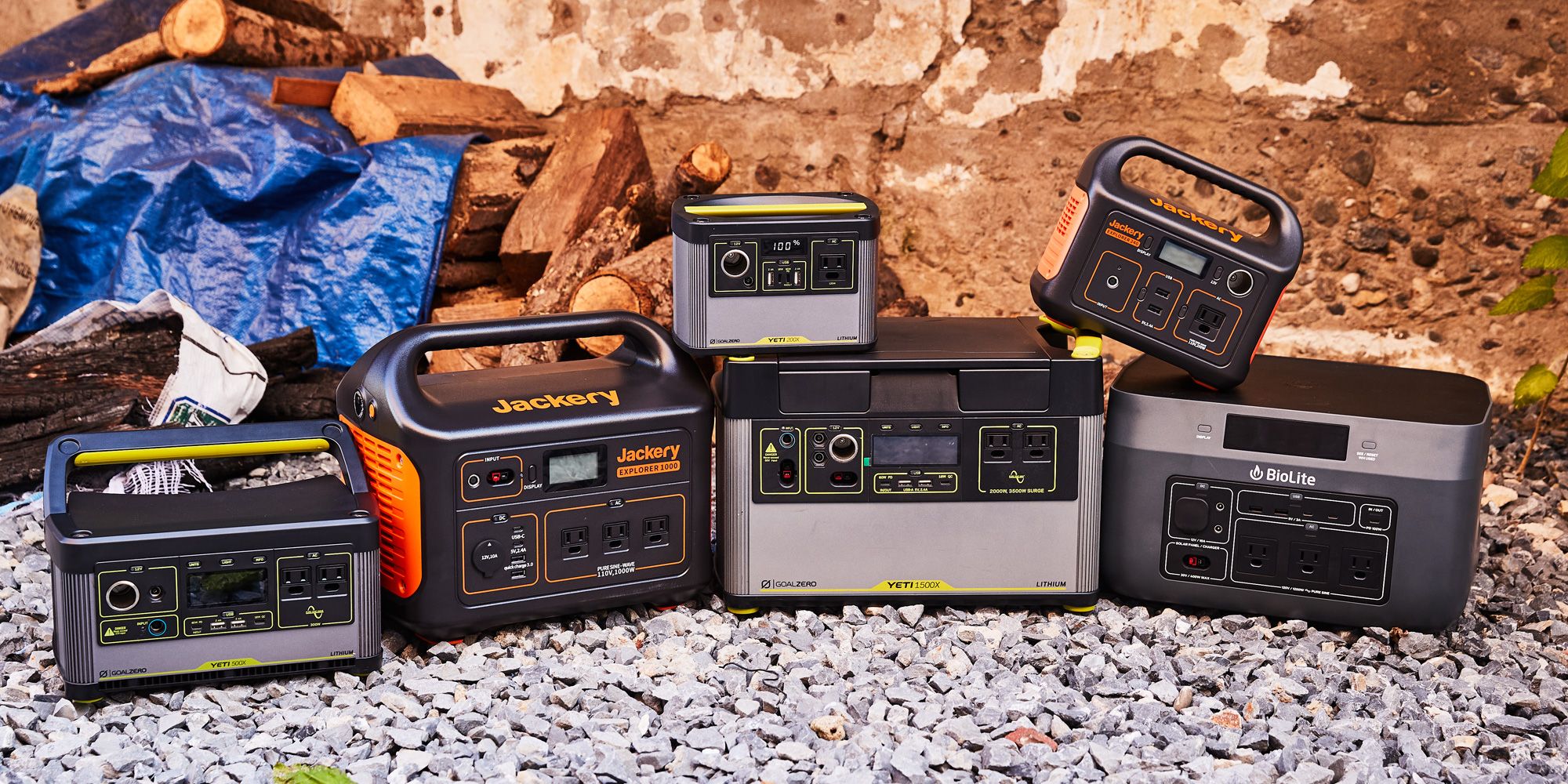
The 9 Best Solar-Powered Generators to Keep Your Camping Gear and Home Running
These solar-powered portable power stations keep your batteries full during power outages and off-grid campouts.
These days, gas-powered generators aren’t the only option for charging on the go. Solar-powered generators—also called portable power stations—are a growing sector of the power market. I started using these a few years ago and was thrilled with having a clean, efficient charging system that doesn't roar or burn through gas.
Larger units can also provide peace of mind in areas where power outages are a concern. Depending on output, many of these portable power stations can sustain household appliances the way a gas generator would. Run out of juice? Attach a few solar panels and you’ll start recharging the power station immediately— no emergency fuel run necessary.
While plenty of people I know use these to power home appliances, my own use is mainly focused on smaller units. I keep a Goal Zero Yeti 200X in my car camping bin, and have used Jackery’s fast-charging Explorer 240 as a backup when power might be unreliable. I’m usually looking to keep my phone, headlamp, and headphones charged, but I’ve used power banks to heat water in an electric kettle, grind coffee, and power my laptop during remote work sessions.
My primary concerns are portability and convenience, which means I appreciate fast wall and solar charging, and since I always like to have a backup, I seek out units that don’t drain power in storage. Ease of use is also important—is the display easy to read? Does it make sense on the screen? Bonus points if I can tell how much power is available via a quick glance. In the past few years, these criteria have become easier to meet. There are now plenty of compact, affordable units that have better charging capabilities than before. Think of these as giant versions of battery power banks used to charge phones during travel or when outlets are scarce.
Most power stations can be charged in a wall outlet, a vehicle's 12-volt port, or with solar panels (often sold separately). Once the charging station is juiced up, you can charge battery-powered gadgets on the go, or keep lights or appliances running off-grid with the bigger, higher-powered models. Each unit holds a certain capacity for charging devices, measured in watt hours, or Wh.
In the future, I’d love to see the weight-to-power ratio continue to progress, with lighter, more portable units that don’t skimp on charging capabilities. I’m also somewhat surprised that we don’t see more advanced screen options on most units, with most currently only offering a fairly basic LCD readout. It gets the job done, but some of the readouts and stats can be confusing to toggle through.
For these picks, I took into consideration my own testing and consulting, charging capacity, ease of use, weight, and what different people might need them for. In the most recent update, Popular Mechanics test editor Brad Ford was instrumental in providing additional input for larger-capacity usage cases.
Finally, “solar-powered” doesn’t mean you need the sun to charge these power stations. They all have the capability to charge with solar panels, but almost all of them can charge in an AC wall outlet or with a 12-volt vehicle port.
The Best Solar-Powered Generators
- Best Overall: Jackery Explorer 1000 Portable Power Station
- Largest Capacity: Bluetti AC200MAX Expandable Power Station
- Best Portable Option: Goal Zero Yeti 200X Solar Generator
- Best Budget-Friendly Option: Jackery Explorer 240 Portable Power Station
- Most Versatile: Goal Zero Yeti 1500X Solar Generator
The Expert: I have been traveling in the outdoors for as long as I can remember, and I’ve spent the past decade reviewing camping gear, overlanding items, and other outdoor equipment. I take multiple extended car-camping trips each year with a portable, convenient setup that includes barely more than a bin of car-camping goods, a piece of memory foam, and the topper on my truck.Since I’m usually working while I’m on the road, my main charging needs are personal devices like a phone, laptop, and headlamp. My go-to portable power solutions are typically mid-range in size and capacity, as I don’t need a ton of charging on the road like someone powering the lights in a trailer or RV would need. My go-to portable power solutions are typically mid-range in size and capacity, as I don’t need a ton of charging on the road like someone powering the lights in a trailer or RV would need. For this update, I consulted with the Popular Mechanics in-house test team, with input from test editor Brad Ford for larger devices and at-home usage.
What to Consider
What is a solar generator.
In some ways, solar generators are misnamed. “Technically, a PV (photovoltaic) panel—or solar panel—is what generates power,” says Ford. “The problem is that sunlight varies throughout the day, so voltage fluctuates and there is no sunlight available at night.” This means that a battery is technically needed to store power, and a power inverter is needed to convert and provide constant alternating current (AC) used for most electrical devices.
The battery and inverter combine in one unit and become a power station. Solar panels without a power station are not particularly useful, so the term “solar generator” typically refers to both the panels and the station used in conjunction.
What Size and How Much Capacity Do You Need?
One of the main differences in these models is how much charging “juice” they can store, referenced in watt-hours. Watt-hours are a measure of a unit of energy (watts) that can flow over time (hours). Consider the electronics you plan to pack or will need to keep charged, and how much juice you’ll need for each one. This can also pertain to estimating generator size for potential home back-up.
For instance, running a refrigerator will take a lot more power than recharging your phone or powering your lights. Consider making a list of the items you’ll need to charge or power, and checking how much each one needs to run. From there, consider how much time you’ll need to run them, and how long the solar-powered generator will take to recharge once it is depleted.
Note that solar panel specs list the highest capacity the panel is capable of, in the perfect conditions—it is not uncommon to see only 50% to 75% of the watts a panel is listed for.
Charging Capacity
This goes hand in hand with your needs. Once you figure out what you’ll be charging or running with your power station, you can start comparing capacities per full charge or hour of use on each unit. The price goes up as the capacity increases, but most people heading out for an off-grid weekend will want at least around 40 amp-hours, or 500 watt-hours.
If you’re looking for a home-powering backup for power outages, look for a model with at least 3,000Wh, and I recommend 500 watts (minimum) of solar panels for recharging. Keep in mind that solar panels are not usually included with the unit, and I recommend buying both at the same time for maximum efficiency in charging.
I listed the watt hours as “Wh” in the specs for each model for easier comparison.
Portability
While weight and size don’t directly correlate to the technicalities of power banks, they impact the convenience of each model. Many camping and overlanding setups have limited space, so the more compact models likely have a higher appeal as a result.
That said, most units weigh at least 10 pounds, and the weight and size increase quickly with greater capacities. Before purchasing, consider where you plan to store the power bank, and the space in your vehicle or camper where it will live while you’re on the road. If you plan to use this power bank solely as a home backup option, portability will matter less, but consider how much effort it will take to move it around within your home or in your outdoor space.
How We Selected
I’m a seasonal car camper. This means I take off for base-camping trips in spring and fall when the deep wilderness is hard to access here in Montana. I’ve spent the last few seasons testing a variety of solar-powered generators to power my smaller items, like phones, headphones, small battery packs, speakers, headlamps, and sometimes my laptop. Since my car camping setup is low-tech (no portable fridge to be found), I’ve rarely needed anything bigger than 300 Wh, or the equivalent of about 25 phone charges. I have tested larger models for the express purpose of gear trials, however.
My testing ranged from a quick overnight to more than a week on the road, and included charging power banks in AC outlets, in the 12V outlet in my truck on road trips, and with solar panels. I compared charging capacity, weight, power input, and how easy each unit is to use and transport. For the ones I didn’t personally test, I talked to overlanding experts and car campers, looking for a range of models that will suit everyone from users with less charging needs (like myself) to people looking for a backup for household appliances and to power their camper appliances.
It’s all about compromise, which means balancing charging capacity with weight and price. The heavier models with lower charging capacities and longer recharge times didn’t make the cut, and I did my best to balance the criteria for a variety of models that suit different needs. Price typically doesn’t factor into my picks, though I did list a few smaller, more affordable models.
Jackery Explorer 1000 Portable Power Station
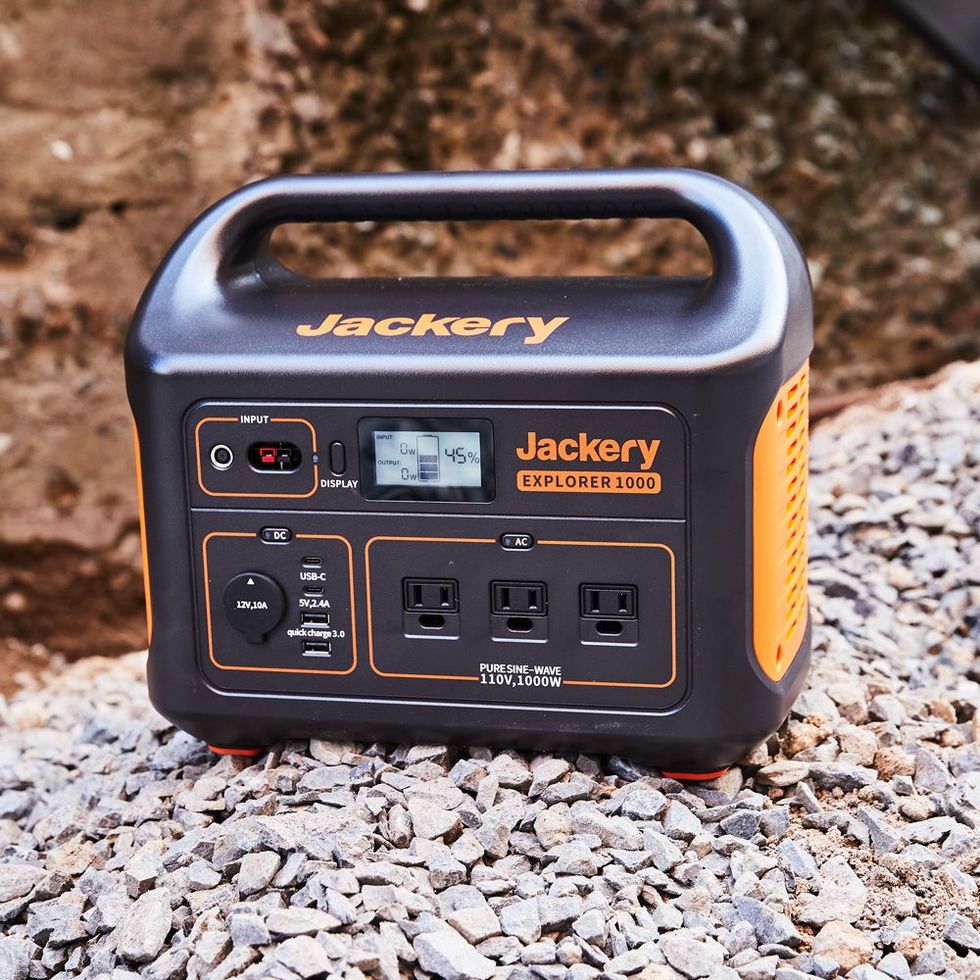
This is a fan favorite for car campers, remote workers, and overlanders. I used it on a media trip where we had to keep multiple camera batteries charged during a week-long outing. It has a max capacity of 1,002 watt-hours, which is lower than you'll find with others on this list, but can actually power items for longer than some higher-capacity models. This won’t be your best bet for powering larger appliances, but it’s an ideal power station for smaller items and off-grid camping.
We charged our photographer’s camera batteries while we were charging the power bank on solar power (it was a very sunny winter day), which proved effective and efficient.
This model has eight ports, including two AC outlets, two USB-C ports, a 12-volt car port, and two standard USB-A outlets. It can charge a typical laptop eight times or power a small refrigerator or powered cooler for over 15 hours.
The Jackery Explorer 1000 can be charged with solar panels or a 12-volt outlet in your vehicle while you’re on the move, and we did both on our trip. It has fairly standard charging times, with 11.5 hours in a car outlet, 6.5 hours for solar panels, and just 5.5 hours to fully charge in a wall outlet. I did find this somewhat hard to use after dark, and had to use my phone flashlight to see the sides of the power bank that didn’t have lights. Otherwise, very few complaints.
Bluetti AC200MAX Expandable Power Station
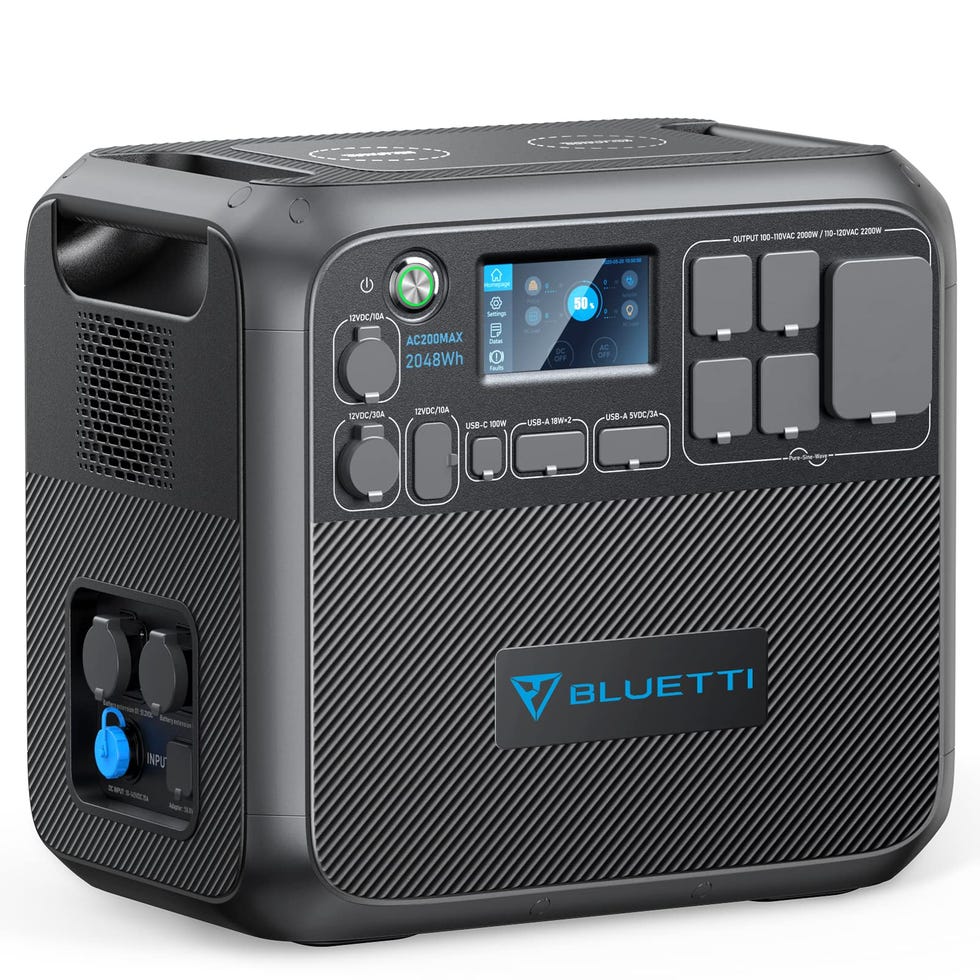
For home backup, Bluetti’s AC200MAX is a powerful solar generator that allows you to stay off-grid while keeping appliances running. The 2,048 watt-hours battery capacity and 2,200-watt power output can handle everything from a refrigerator to keeping travel trailer lights on. One of the key features is the expandable capacity—increasing the capacity to more than 8,000 total watt-hours—by connecting the power station to additional batteries. The batteries are sold separately, but for people concerned about keeping appliances running in the event of a power outage, it’s worth the extra expense for peace of mind.
Charge time in an AC outlet can take up to six hours, but dual charging capabilities mean in the right conditions, you can have this unit fully charged in two hours by using a solar panel in conjunction with grid charging—increasing input from 900 Wh to 1400 Wh. The station has 16 charging ports, including wireless charging pads, AC, USB-A, USB-C, and 12-volt ports for both car and RV charging.
Goal Zero Yeti 200X Solar Generator
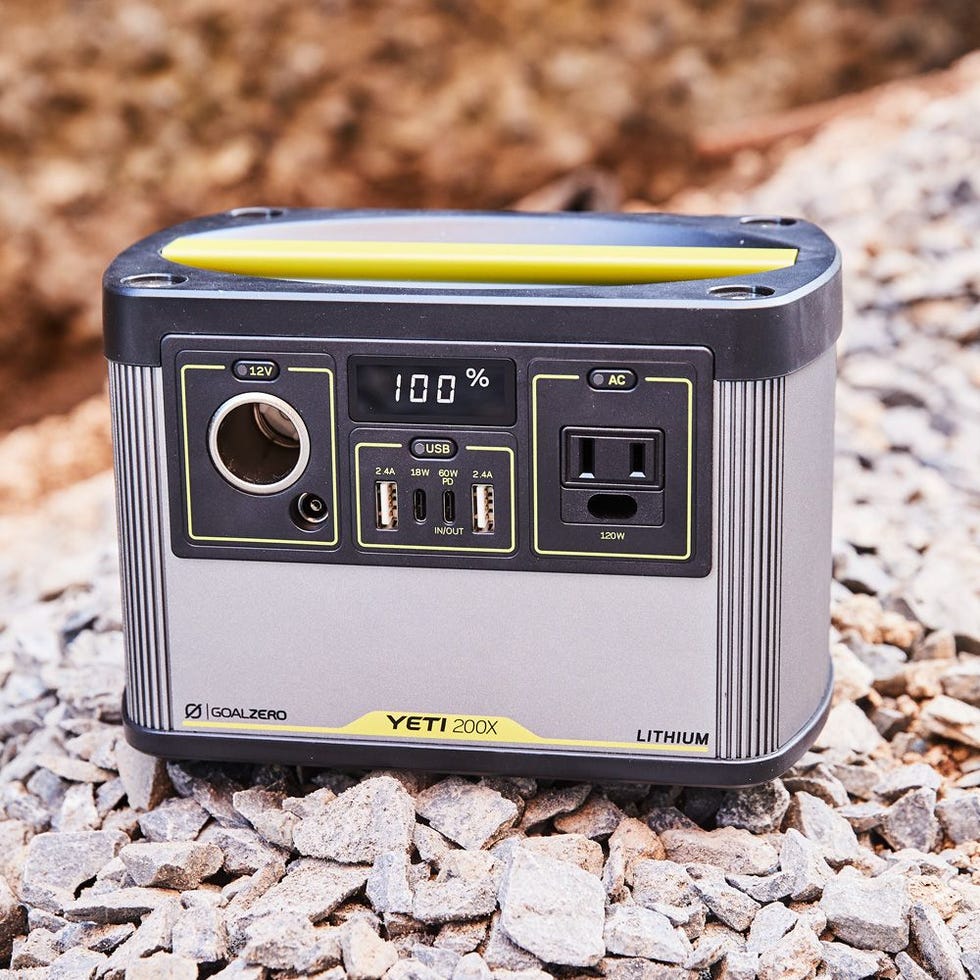
This is the power bank I take on shorter trips where I’ll be working remotely, but won’t have 100% reliable access to power outlets. It weighs just 5 pounds and fits in my car camping bin, and I can also charge it using the 12V outlet in 8 hours, or halfway in just a few hours. It’s easy to plug in for drives between locations, and is also a solid backup to leave charged in a to-go bin in the chance you wind up somewhere without accessible power.
I use this for items like my phone, a small speaker, and headphones, but I’ve also powered my laptop on it for two full power cycles. I’d recommend this for anyone looking for a portable, compact generator for charging phones, portable speakers, headlamps, cameras, and earbuds… basically anything where you won’t need to be powering an RV or refrigerator.
The Yeti 200X charges fully in 8 hours via the 12-volt car charging port, and I’ve charged it fully in 3 hours with solar panels on a sunny day. It only has four ports—a 12-volt outlet, an AC port, and two USB ports—but it will suffice for most quick needs. Keep an eye on the charging capacity after a few seasons. I have started to notice it diminish in the past year.
Jackery Explorer 240 Portable Power Station
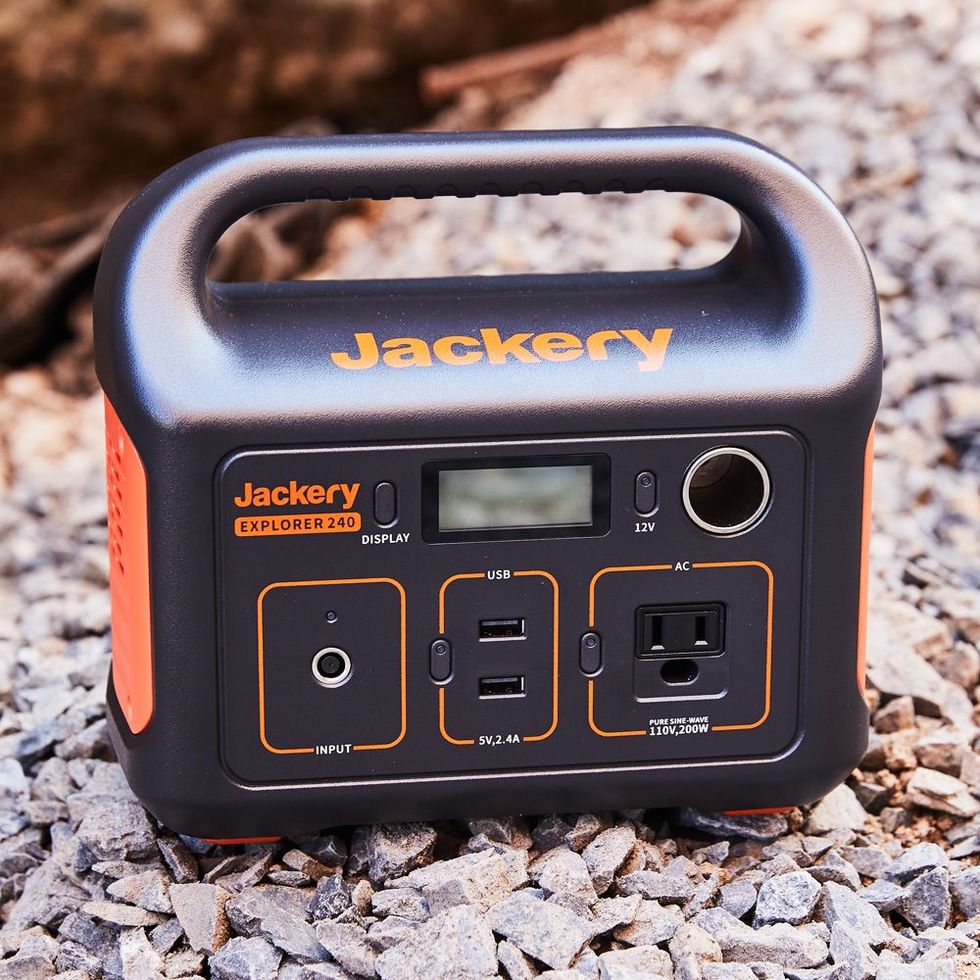
Most of my needs are for charging smaller items… I don’t own a camper or RV, and I don’t need to power a refrigerator out in the wild. It’s hard to say what’s more relevant for outdoors people, but for those who have low-maintenance car camping setups like myself, this 240WH power station is probably all you need.
This is reasonably priced, weighs just over 6.5 pounds, and is reliable for its cost. I’d recommend this for people heading out for an overnight or weekend but want to keep lower-powered devices charged. It’s also a great backup to leave stashed in a vehicle for emergencies, as it doesn’t take up too much space. I was surprised that you need to push the buttons to activate the charging (I had assumed I could just plug something into the port and it would start charging), but double-check that your gear (or the unit) is actually charging.
The handle is comfortable to carry, and since this is such a small power bank, the top handle is sufficient for moving it around. I’ve been able to fully charge this with the Jackery SolarSaga 60W solar panel in just under 5 hours, which is pretty rad for a power bank that can charge an iPhone 24 times.
The Explorer 240 can charge five devices at once, with a USB-C port, two USB-A ports, and a 100-watt AC outlet. It’s one of the most portable on this list, and is also super convenient for fast charging for an overnight trip.
Goal Zero Yeti 1500X Solar Generator
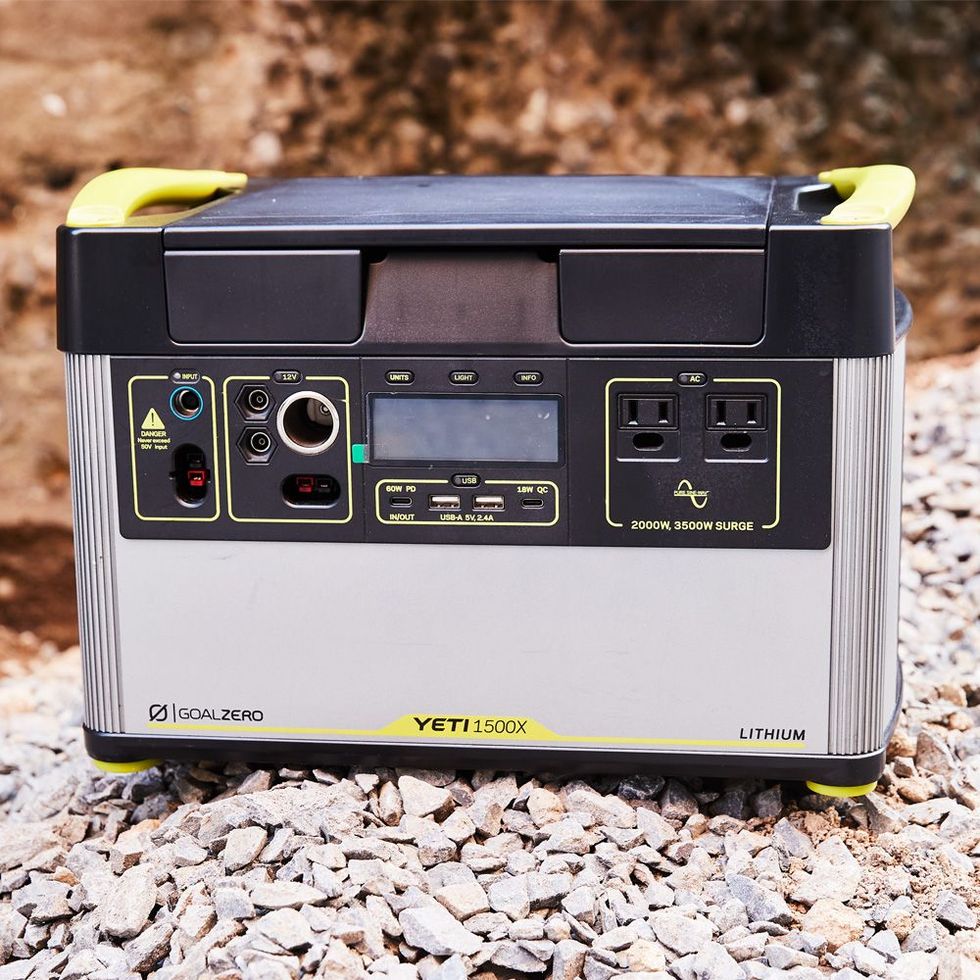
Optimized for campers who spend extended periods of time off-grid, this high-powered generator has a 600-watt input, allowing it to fully charge in just a few hours with the right equipment. This model will run a full camper or serve as a reliable backup for home power, and the simple interface and charging adapters add to its appeal.
I love the adaptability of this unit, which comes with additional add-ons like the Home Integration Kit, which allows people to hook it up to an in-house circuit breaker. It also has something the brand calls the “Expansion Module,” which gives it the ability to charge it via your vehicle’s alternator on the road. This is a solid all-around pick for anyone who doesn’t want to be caught off-guard with power needs and wants a few ways to make sure the power bank stays charged.
This is one of the best-selling power stations on the market, with enough juice to run a full-size fridge for more than 28 hours and charge a smartphone 127 times. It has over 1,500 watt-hours of capacity, making it a stellar option for running a camper. It can be recharged in anywhere from six to 14 hours in a wall charger, depending on what gear you have.
This model comes with a few different options for solar panels—just be sure to read the specs and charging time before deciding which one to get. The Goal Zero’s 100-watt solar panel takes roughly 18 to 36 hours to recharge the power station, depending on conditions.
Anker SOLIX F2000 Generator

The heavy-duty wheels and telescoping handle on Anker’s SOLIX F2000 are easy to use, allow you to stand upright when pulling, and are a dream for people who regularly find themselves moving their power station around, whether it’s at a campsite or to different parts of the house during a power outage.
Along with convenience, this generator is a powerhouse, and can easily keep your refrigerator running, a heater for greenhouses (yes, we received questions about this) and your RV bright and warm.
We’re also impressed with Anker’s app that allows us to check the charging status or power being generated without continually going outside to check. The app also lets you turn power to the AC and USB ports on and off remotely, keeping tabs on how much energy is being utilized.
The SOLIX F2000 has 12 ports, including two car ports, an RV-specific outlet, four AC ports, three USB-C charging ports, and two for USB-A. In sunny conditions and moderate temperatures, this can recharge with a 200-watt solar panel in just a few hours, and can support up to 1,000 watts of solar input.
EcoFlow Delta Portable Power Station

Falling right in the sweet spot of weight, this power bank is lighter for its power than the Yeti 1500X, and it stays secure when strapped down in a moving vehicle or camper. The EcoFlow Delta has the most ports (13!) out of any power station on this list, which means more charging efficiency and easier tracking of charge drain, perfect if you need to power and charge several devices in a short amount of time.
This is a beefy generator. With 1,800 watts of total output and over 1,200 watt hours, this is powerful enough to charge anything you would bring overlanding or camping. It could even power up an electric vehicle if you get stuck with no charging station in sight.
Despite the larger capacity, this model can be charged with four 100-watt solar panels in just four hours with optimum conditions, and eight hours in most conditions—which I find impressively fast for a power station of this size. It charges fast in a standard wall AC outlet as well, going from zero to 80-percent in just an hour. This is on the heavier side, but with that much power and so many charging options, it can be worth it for a one-and-done power setup.
Goal Zero Yeti 500
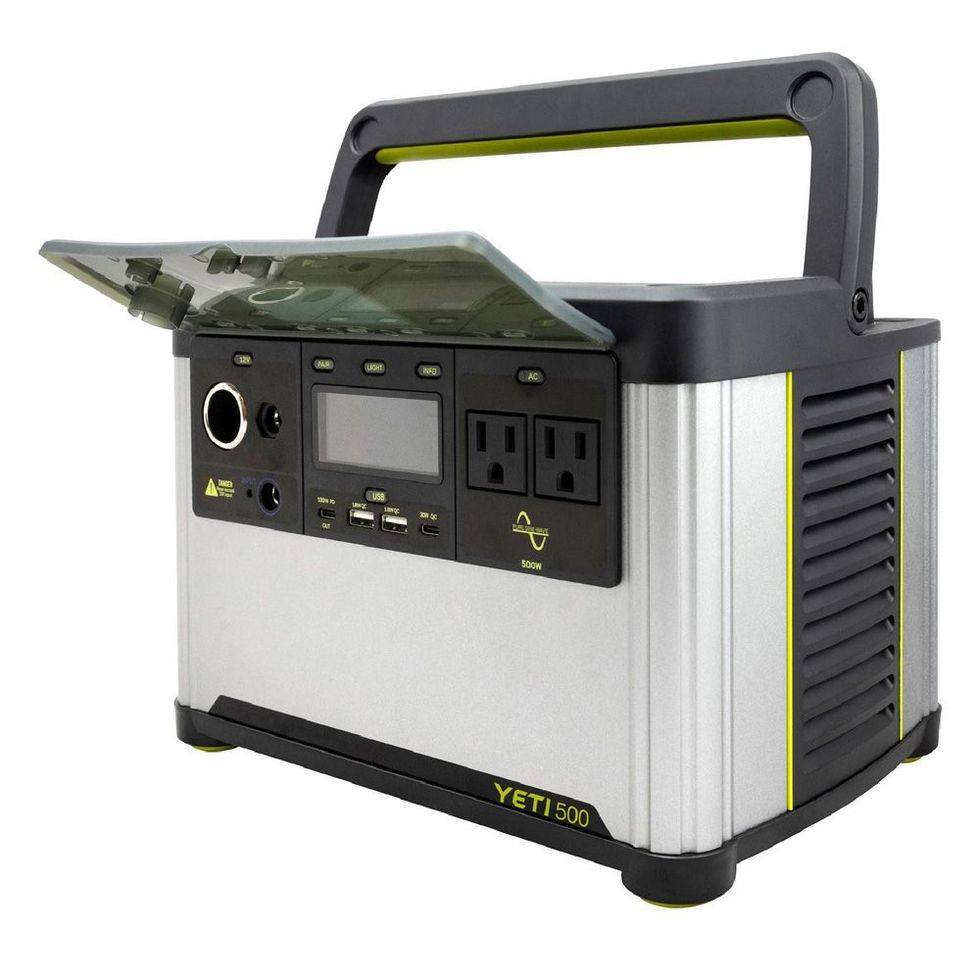
The sixth iteration of Goal Zero’s Goldilocks-sized power station, the Yeti 500 has a similar capacity and capabilities as the previous model, the Yeti 500 X. This is a fantastic middle ground for anyone looking for an off-grid weekend, or who might not need to power appliances during an extended outage, but who wants peace of mind in case of emergencies.
The 500W AC power doubles to 1000W with the surge mode, and has enough power to run a refrigerator, lights in a camper, and small kitchen appliances, so even with a power outage, you can still have your morning coffee and keep your perishable items safe.
Goal Zero’s entire line is quite rugged, built for outside and travel use without the stress of fragile items. The Yeti 500 is highly water resistant with a rating of IPX4, and is shock proof and can maintain power output (though less efficiently) at below-zero temperatures.
This also has a faster charging time compared to previous models, and can fully charge in less than an hour and a half in a standard AC outlet, though solar panel charging will take around three hours with a 200W panel.
Yoshino B2000 Solid State Solar Generator

Tested and Reviewed by Brad Ford
(Note: this model is available with two or three solar panels. We only tested it with one, so I’m doubling my findings with respect to solar observations, to align with performance for two panels)
Yoshino’s B2000 Solar Generator is different from virtually any other on the market, in that it utilizes a solid state battery. This means the electrolyte in the battery is solid, rather than a liquid. There are a couple advantages of a solid electrolyte—First, it has a higher energy density, allowing the battery size/weight to be reduced. Second, solid electrolytes are more stable and won’t leak. Regarding weight, the B2000 is both light and compact for its capacity.
We tested solar charging on a cloudless, winter day in Northeast, PA. In the bright, mid-day sun, using one portable 200-watt panel, we topped out at 181 watts input. With two panels, that would translate to 362 watts and an estimated charge time between three and four hours. Over the course of five hours, we repositioned the panel twice, to keep optimal alignment with the sun as input slowly dropped to 70-watts for the one panel.
On average we were able to charge the battery at about 10% per hour, which is pretty respectable for portable panels. Adding a second panel doubles the watts, and cuts charging time in half.
The power station itself performed well when tested running a 21-cubic foot, full size refrigerator. We were able to get an impressive 18 hours and 8 minutes of run time, from 100% charge, until the B2000 shut down. And with Wi-Fi connectivity, we were able to monitor the power usage remotely with Yoshino’s app, on a smartphone.
We also tested the B2000, using a constant load of 470-watts which it ran for 2 hours and 24 minutes. For reference, we used four 60-watt light bulbs, an oscillating fan, and a small personal heater to reach 470-watts. The unit has two USB-C ports, two USB-A ports, and a wireless charging pad on top.
The B2000 features multiple charging options. Aside from solar, it can also be charged via a 120-volt AC outlet, or 12-volt DC car adapter—included.
Charging Tips to Keep Your Solar-Powered Generator Running From Expert Maggie Slepian

What are your priorities when choosing a solar-powered generator?
I am a low-maintenance camper, and most of my background is in lightweight backcountry travel. That means I prioritize space-saving and ease-of-use, so my go-to power banks have between 250 to 600 watt hours, and weigh less than 15 pounds.
This is perfect for a weekend trip, with the on-the-go (car or solar) charging capabilities to put my mind at ease for longer trips. Mostly I’m charging small items, so one charge lasts a long time. However, plenty of people in the van-life and remote-work world are powering their RVs and vans, and relying on multiple laptop charges. For that, I’d recommend one of the larger units.
What can a solar-powered generator charge and power?
A solar-powered generator can charge and run almost anything that requires power—it just depends on the capacity. These generators can charge power tools in the shop, laptops for remote work, and personal devices like bluetooth headphones and speakers .
A solar-powered generator with a higher power capacity can even power household appliances in the event of a power outage. And the fact that these are solar-compatible means you aren’t reliant on the electrical grid to recharge them.
What is the best way to charge a generator?
Every unit on our list has multiple charging options, including wall (AC outlet), car (12-volt), and solar. Each input method charges your unit at a different speed, and solar also depends on the conditions.
I try to charge up my power banks whenever I can, so I’m never caught off guard trying to leave on a trip with a dying power bank. If this happens (which it has), I’ll charge it in my vehicle's 12-volt port while I’m driving, though this is often slower than solar or a wall unit.
Solar power is the most sustainable and typically fastest way to power these— just be sure you have enough wattage in the solar panels to make it effective. I recommend keeping the generator stored with at least an 80 percent charge, and unplug them once they’re fully charged—keeping them plugged in longer than necessary can degrade the battery.
Most units will have a simple readout display showing the remaining battery charge, and it’s a good practice not to allow your battery pack to get below 20 percent.
Maggie Slepian is a full-time freelance writer in the outdoor industry and has tested gear professionally for almost ten years—she is an avid backpacker, trail runner, bikepacker, and horseback rider and has thru-hiked thousands of miles on the Appalachian, Colorado, and Ouachita trails, along with backcountry travel on terrain including coastal trails, the desert, and high alpine peaks. Maggie has written for New York Magazine, Huffington Post, REI, and Outside. She is a columnist with Backpacker Magazine and is the co-founder of BackpackingRoutes.com. Contact her at MaggieSlepian.com.
Brad Ford has spent most of his life using tools to fix, build, or make things. Growing up he worked on a farm, where he learned to weld, repair, and paint equipment. From the farm he went to work at a classic car dealer, repairing and servicing Rolls Royces, Bentleys, and Jaguars. Today, when he's not testing tools or writing for Popular Mechanics, he's busy keeping up with the projects at his old farmhouse in eastern Pennsylvania.

.css-cuqpxl:before{padding-right:0.3125rem;content:'//';display:inline;} Emergency Preparedness .css-xtujxj:before{padding-left:0.3125rem;content:'//';display:inline;}
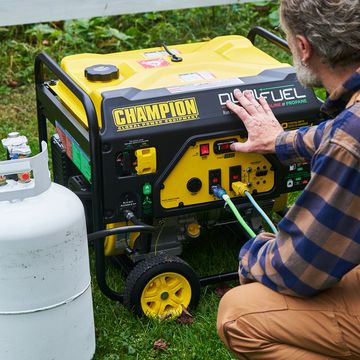
The Best Car Emergency Kits, Just in Case

The Best Flood Barriers for Home Preparedness
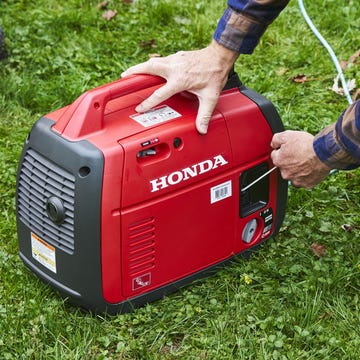
The 12 Best Home Generators for 2024

The Best Rechargeable Flashlights
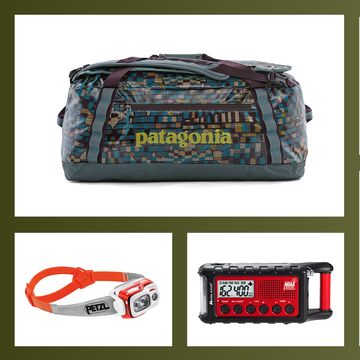
Get a Game Plan-It's National Preparedness Month!

The Best Emergency Kits for Help in Any Situation
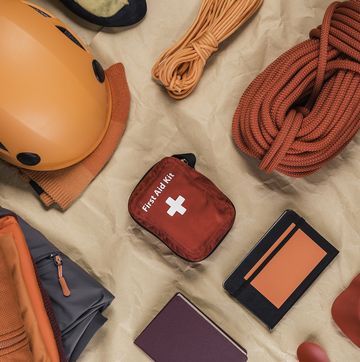
The 8 Best First Aid Kits for Emergencies
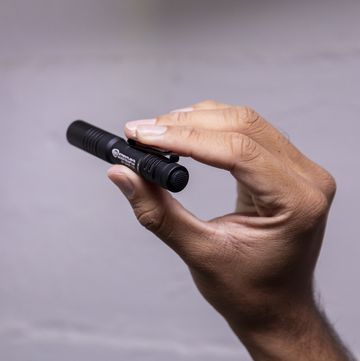
The Best Pocket Flashlights

8 Best Emergency Food Kits
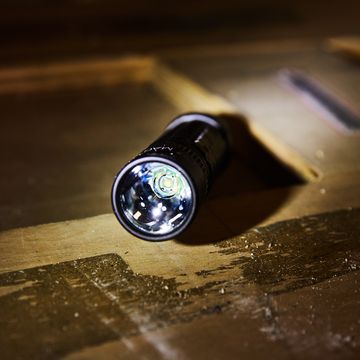
The 8 Best Flashlights for Everyday Use
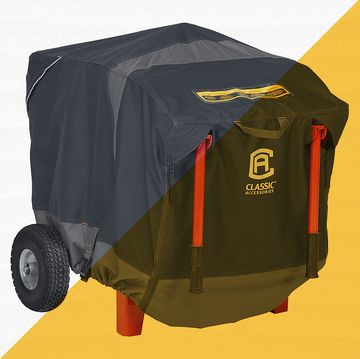
The Best Generator Covers for Any Make and Model

IMAGES
VIDEO
COMMENTS
ALVA Yachts, the German builder of luxury electric solar catamarans and sail boats, has announced it is currently building the world's first fuelless 90ft superyacht catamaran with wings, the OCEAN ECO 90 H2. The first superyacht catamaran to run without fossil fuels and producing zero emission, the OCEAN ECO 90 H2 is designed with luxury ...
Silent 120 Explorer. 100 Sunreef Power Eco. Most affordable $: Azura Marine - Aquanima 40. Other alternatives ⛵: Soel Yachts - Soel Senses 48. Serenity Yachts - Serenity 64 (Hybrid) Here's a quick summary of the features of the best solar catamarans for green yachting in 2023-2024: Solar Boats.
Here are three of the best solar-powered catamarans: Sunreef's 80 Sunreef Power Eco Yacht. Silent Yachts' Silent 80. Soel's Senses 48. There are soo many variables that it's tough to say one is better than the others. No matter which you board, you're going to have a luxury experience. The benefit of these solar cats is that the ...
5. Azura Marine - Aquanima 40. The Aquanima by Azura Marine is powered entirely solar and features some innovative adaptations that make it even more economical and eco-friendly. For example, rainwater collection from the solar panels on the roof and the fact that excess solar can be sold back to shore stations.
THE AVAILABLE SPACE. In practical terms, a modern 40ft monohull would have the space for around 1,200W of PV panels (cockpit arch, sprayhood top, deck), maybe 1,500W with the addition of a few portable panels for use at anchor. The 1,200W of fixed position solar array could produce around 360Ah on a sunny summer's day (zero shading) or more ...
On the smaller 55 and the 64, Silent Yachts currently recommends a 19m2 kite that costs around €25,000 - a fraction of the cost of a new mast, boom, shrouds and sails. "The sail ...
This makes Sunreef Yachts Eco the lightest marine solar power system producer in the solar catamaran market. Each of the solar cells administered into the Sunreef solar catamarans are ISO 9001:2015 certified and offer a peak performance of ±24 percent, this is 25 to 30 percent more power compared to conventional cells.
The blue water capable ZEN50 lightweight racing carbon hulls are combined with a huge solar roof for an unrivaled solar power vs. displacement ratio above 1:1 (18 kW / 17 tonnes), making this yacht completely energy self-sufficient. A revolutionary, fully automated, wingsail - by Ayro© - can be added as a range and speed extender.
The perfect mid sized electric solar catamaran. The OCEAN ECO 60 is an innovation packed solar assisted electric long-range cruiser that will perfectly suit customers who like to cruise and explore while yachting.Designed with luxury, safety and cruising comfort in mind, it is an example of the latest technological developments in the field of self-sufficient yachts surpassing its competition ...
Any yacht that's built with a "solar skin" is bound to attract owners who have at least a few thoughts about the environment. Such is the case with Sunreef's Power Eco series of catamarans. Formula 1 driver Fernando Alonso recently took delivery of a 60 Power Eco, saying that sustainability considerations were fundamental to his vessel ...
Our solar electric catamarans combine all the elements for a luxurious and environmentally conscious aquatic lifestyle. With zero CO2 or noise emissions on board, you can reconnect with your senses and fully enjoy the journey. electric models. The Soel Yachts portfolio offers solar electric catamarans for both private and commercial applications.
Silent Yachts founder Michael Köhler drew plenty of laughter across the industry back in 2005 when he announced he was moving away from diesel to build solar-powered luxury marine vessels. When his Köhler's Solarwave 46 was launched five years later, though, those laughs turned to gasps. Despite the limitations and expense surrounding the technology back […]
The solar niche is small but growing, with new entrants like Serenity Yachts and the BYD Group. These power yachts have cruising speeds of 8 knots and top speeds of up to 20 knots, though they ...
The Aditya. The Aditya is India's largest solar boat and the world's first solar-powered ferry. Carrying approximately 1,700 passengers per day, it is 30 times cheaper to run than the diesel ferry ...
Whisper Yachts embarks the best of technology aboard solar-powered yachts designed to be both in harmony and respect with the sea. Learn more Whisper 50 Whisper Yachts offers an exclusive 50 ft luxury yacht powered by green energy that provides a way of sailing more handy, comfy and eco-friendly. ...
Singapore-based Azura Marine unveiled a new $500,000 electric yacht that they claim can complete "non-stop ocean voyages powered only by sunlight.". The electrification of transport is slowly ...
The solar-powered Silent 64 is the first model to be built by Silent Yachts. The traveler, he noted, is at the mercy of the vessel's fuel -capacity. While the powerplant or generator is running, the fumes, constant noise and vibration can wear you down as much as sporty conditions and merciless sun. (And the need for maintenance increases.)
The Original Solar Yacht. As the original inventors of series produced solar-electric yachts, we pioneered this innovative approach. Our first model, the Silent 64, was launched to the market in 2016, several years before any other shipyard considered the possibility of going electric.
100 % ELECTRIC CATAMARANS. GILLES REIGNER YACHTS. We produce 100% electric yachts using the most natural sources of energy: the sun and the wind. Powered by solar panels & wind turbines, our yachts give a complete autonomous range, a robust build, and an array of innovations for an optimum yachting experience.. Gilles Reigner Yachts, a pioneering force in maritime excellence, defines the ...
Powered by two 400-kW electric motors, a 990-kWh battery pack system, and two 300-kW range extenders, the 33M Sunreef Explorer Eco "was designed to take you to the most remote cruise grounds in ...
These solar panels have aluminum and tempered glass frames, ensuring a durable and weather-resistant use. Weighing 2.75 pounds and measuring 2.32 x 13.86 x 17.13 inches, they are compact and portable. Pros. Easy to store and carry. They come in a complete kit. Provide excellent weather resistance.
Here's our choice of the best boat solar panels. 6 of the best boat solar panels available right now. Giosolar 1,000W flexible solar panel. Best flexible boat solar panel. Delivering a mighty kilowatt of power, (not far off the amount used by a one bedroom house), this Giostar package comprises ten separate 100W panels, each of which is 1,050 ...
I first embraced the idea of solar power while up a pole (literally) in the Atlantic Intracoastal Waterway replacing dead batteries. It was the early 1980s, and I was maintaining buoys, beacons, and other such Aids To Navigation (ATON) for the U.S. Coast Guard, replacing massive, nonrechargeable batteries with rechargeable solar-powered ones.
2. Nature Power Rigid. The nature power rigid is a large, powerful, single solar panel. If you are looking for the right panels to power your entire boat comfortably, these are the ones for you. They are very large so they will need a large flat surface area. alternatively, they can be hung vertically from rails.
The all-electric-powered Candela P-12 ferry flies over the water on hydrofoils. Candela. I would never say "I told you so," but…now that Candela, the world's leading producer of all ...
Headliners will include the likes of the 295-foot Corsair Nero, the 278-foot Victorious by AKYacht, the 230-foot Turquoise-built Talisman C, and 213-foot Benetti Triumph among brokerage yachts ...
The Best Solar-Powered Generators. Best Overall: Jackery Explorer 1000 Portable Power Station; Largest Capacity: Bluetti AC200MAX Expandable Power Station; Best Portable Option: Goal Zero Yeti ...